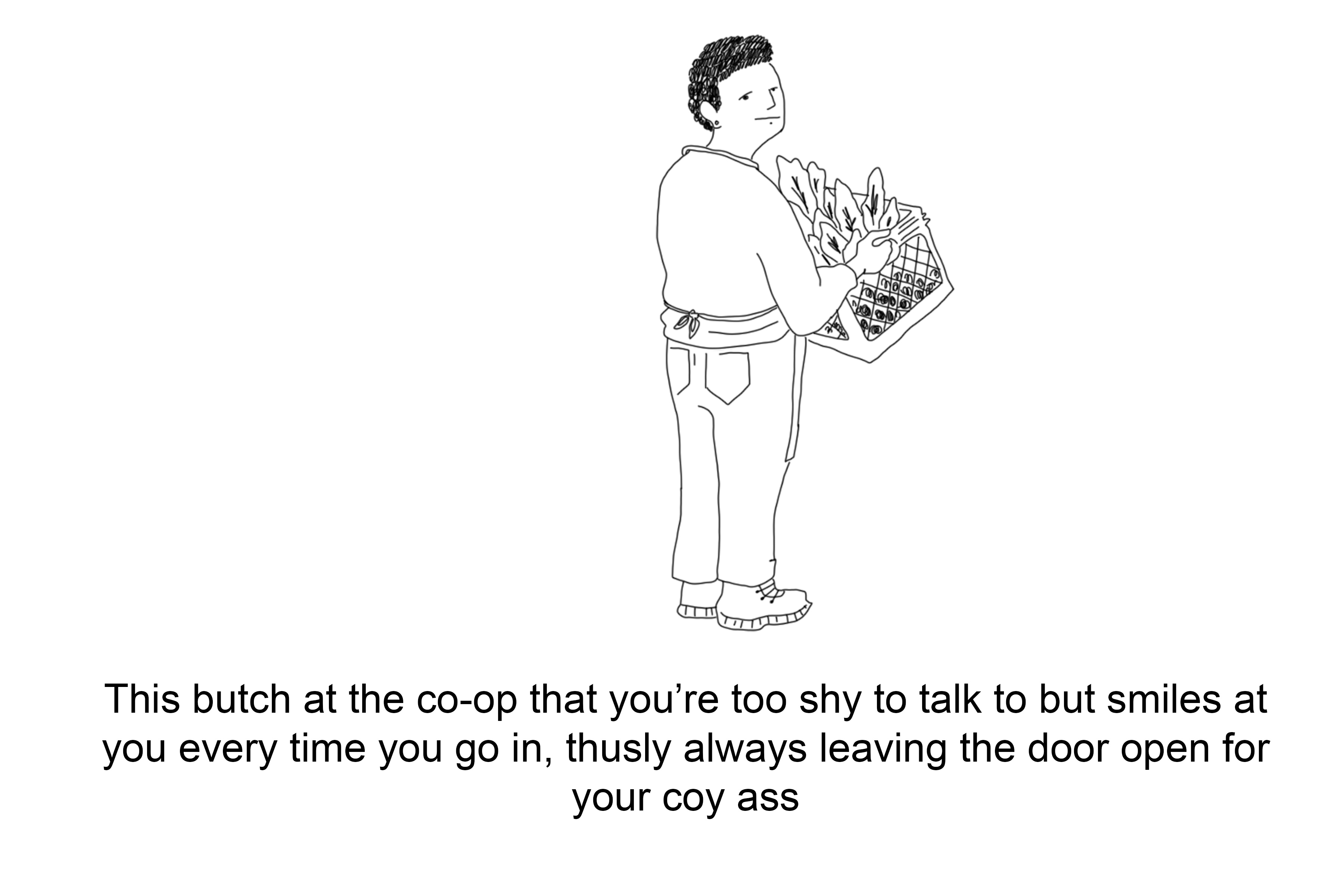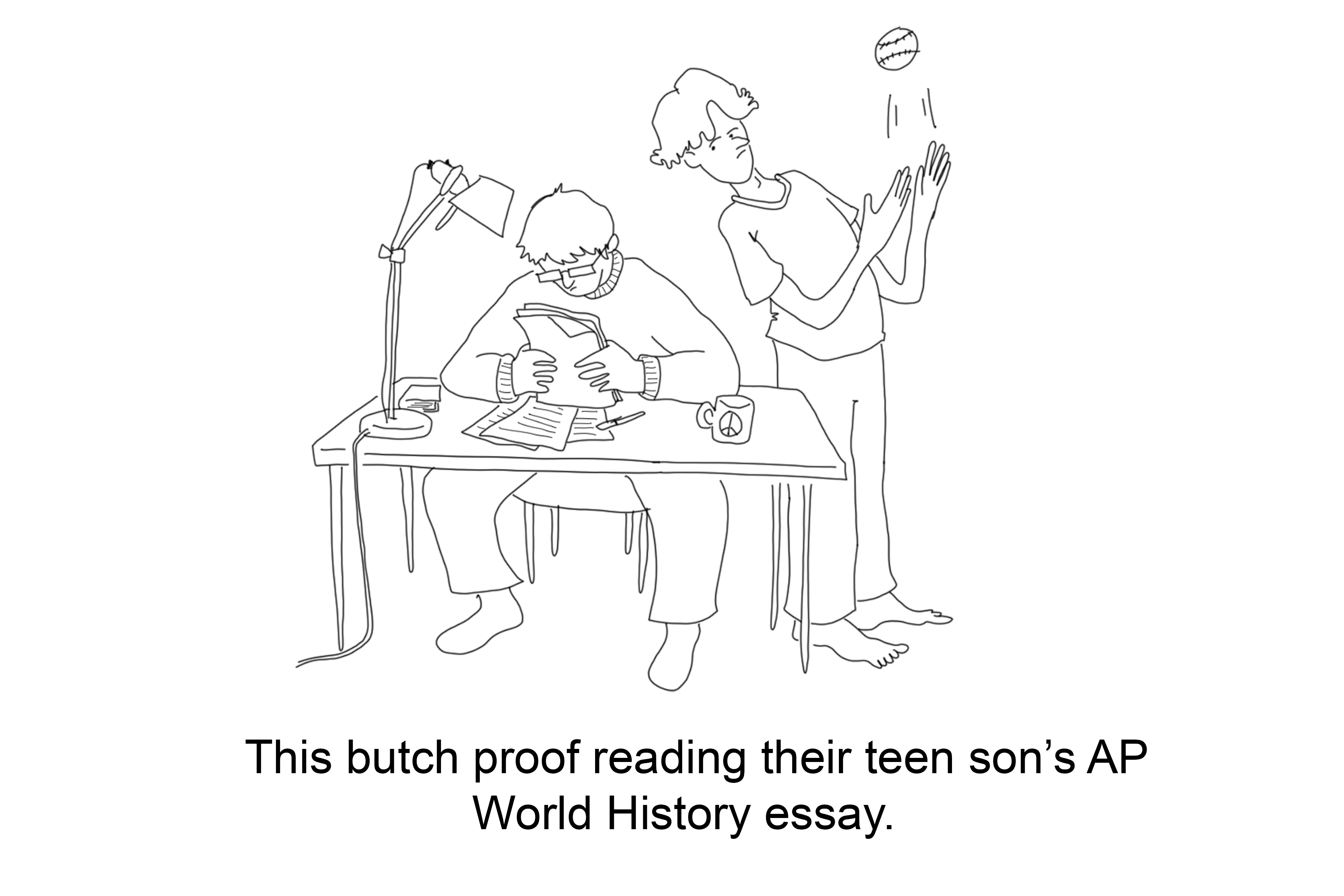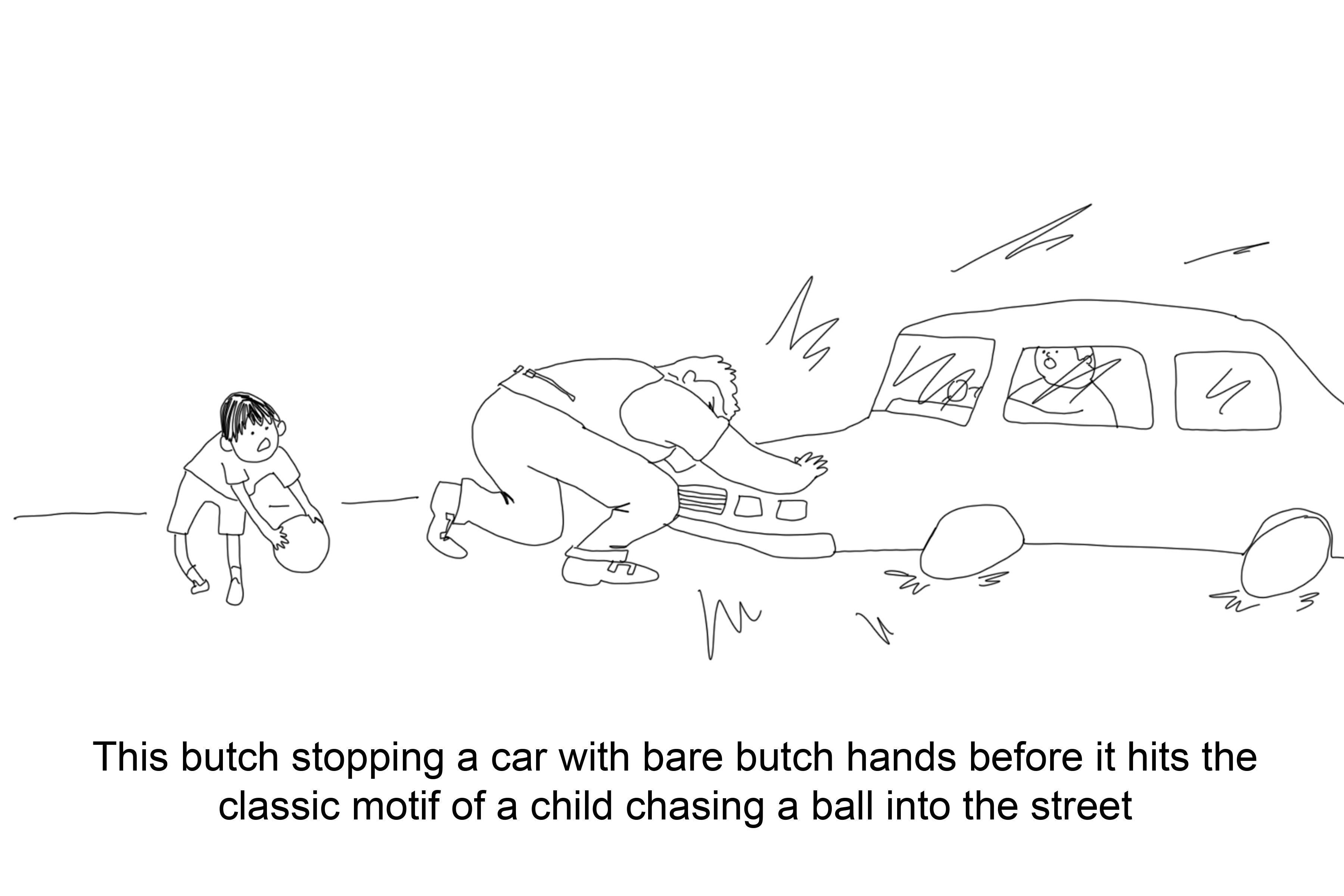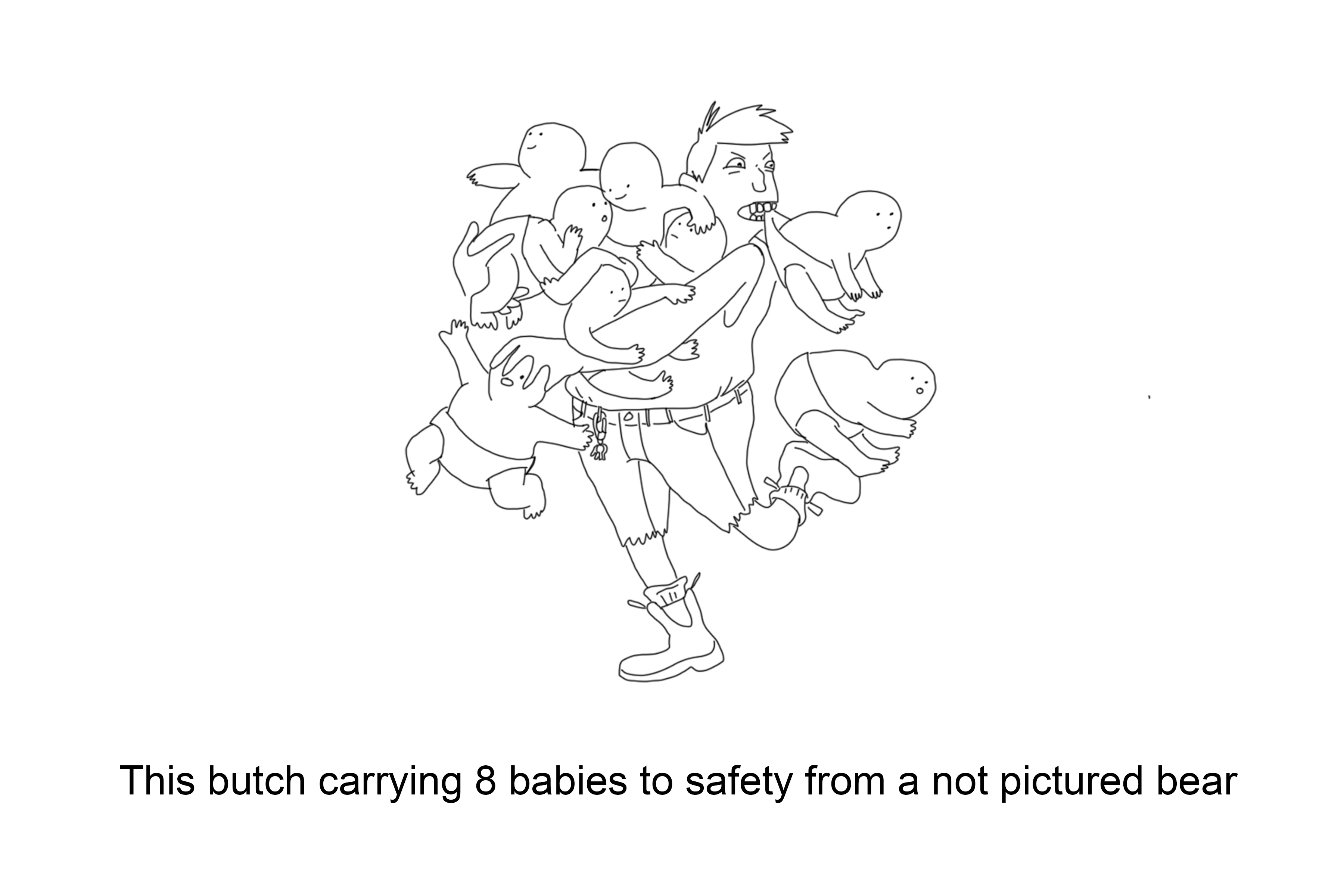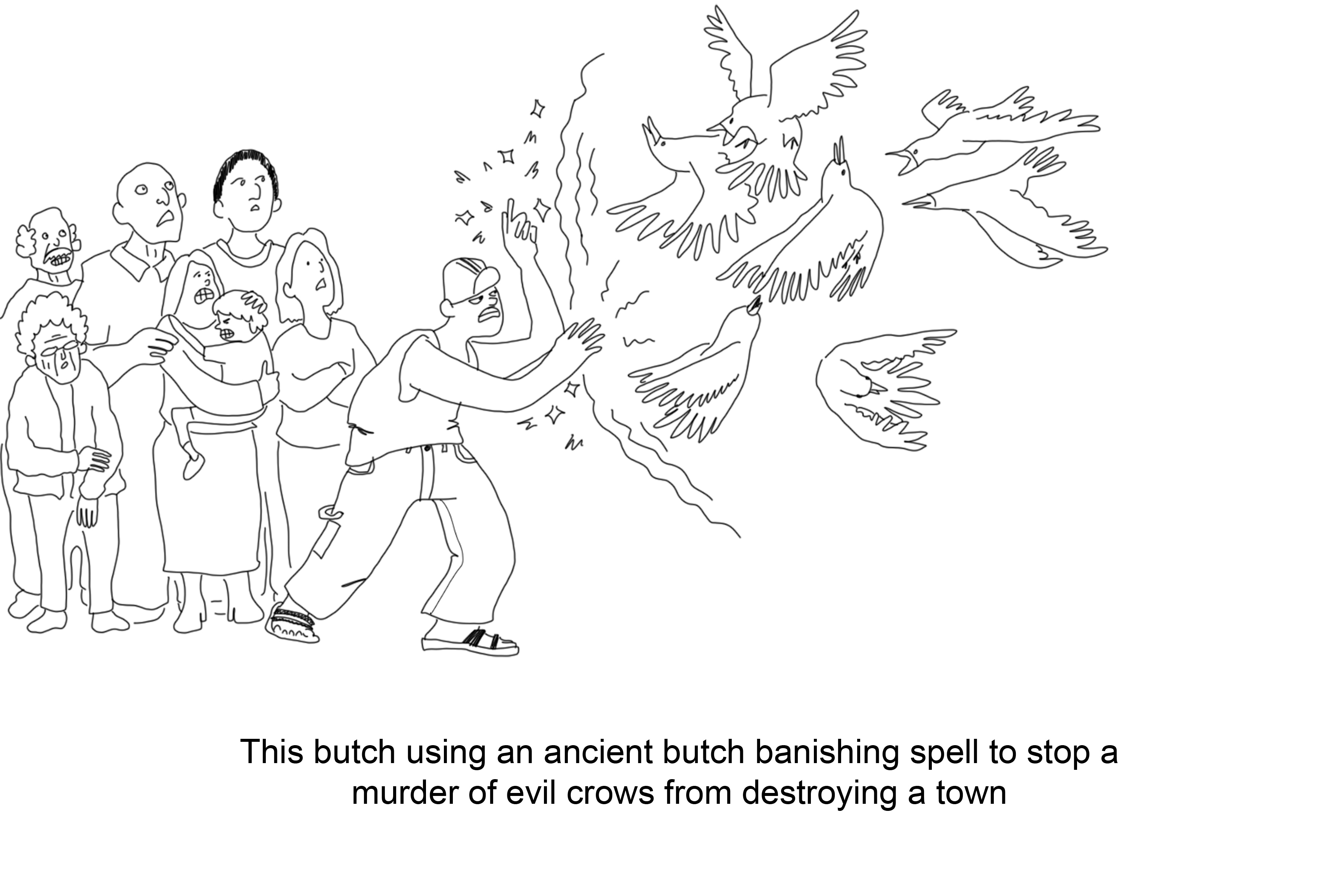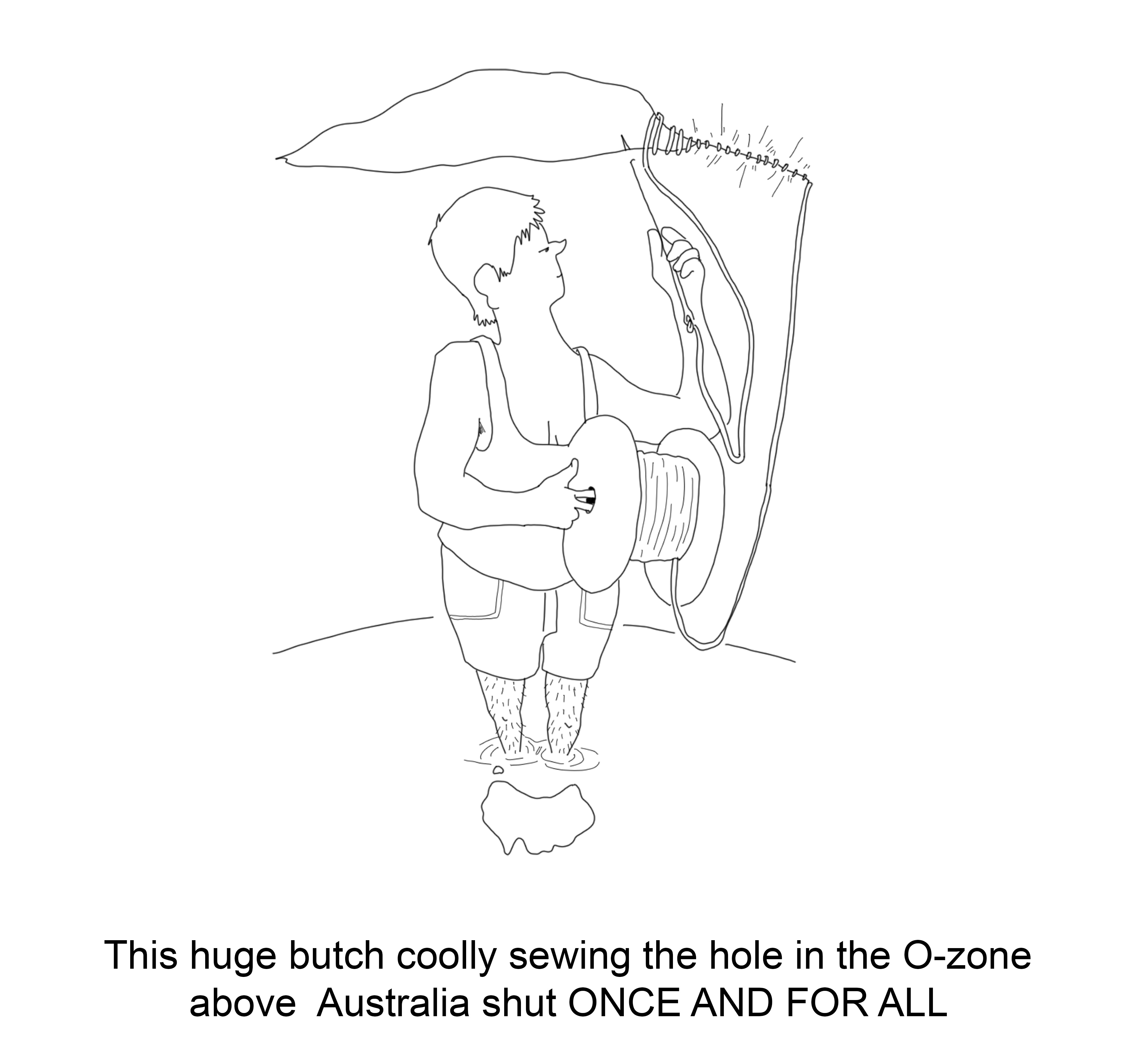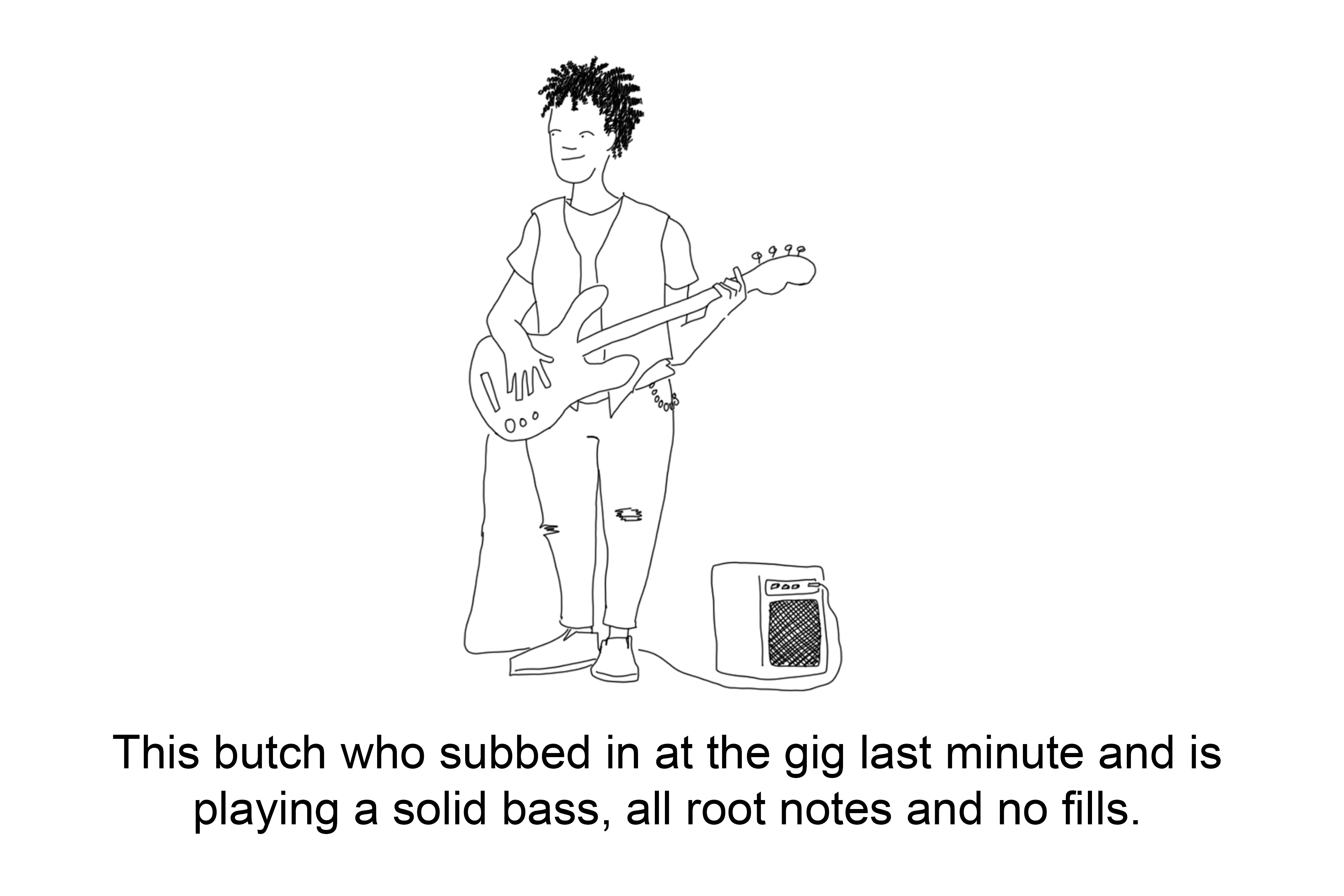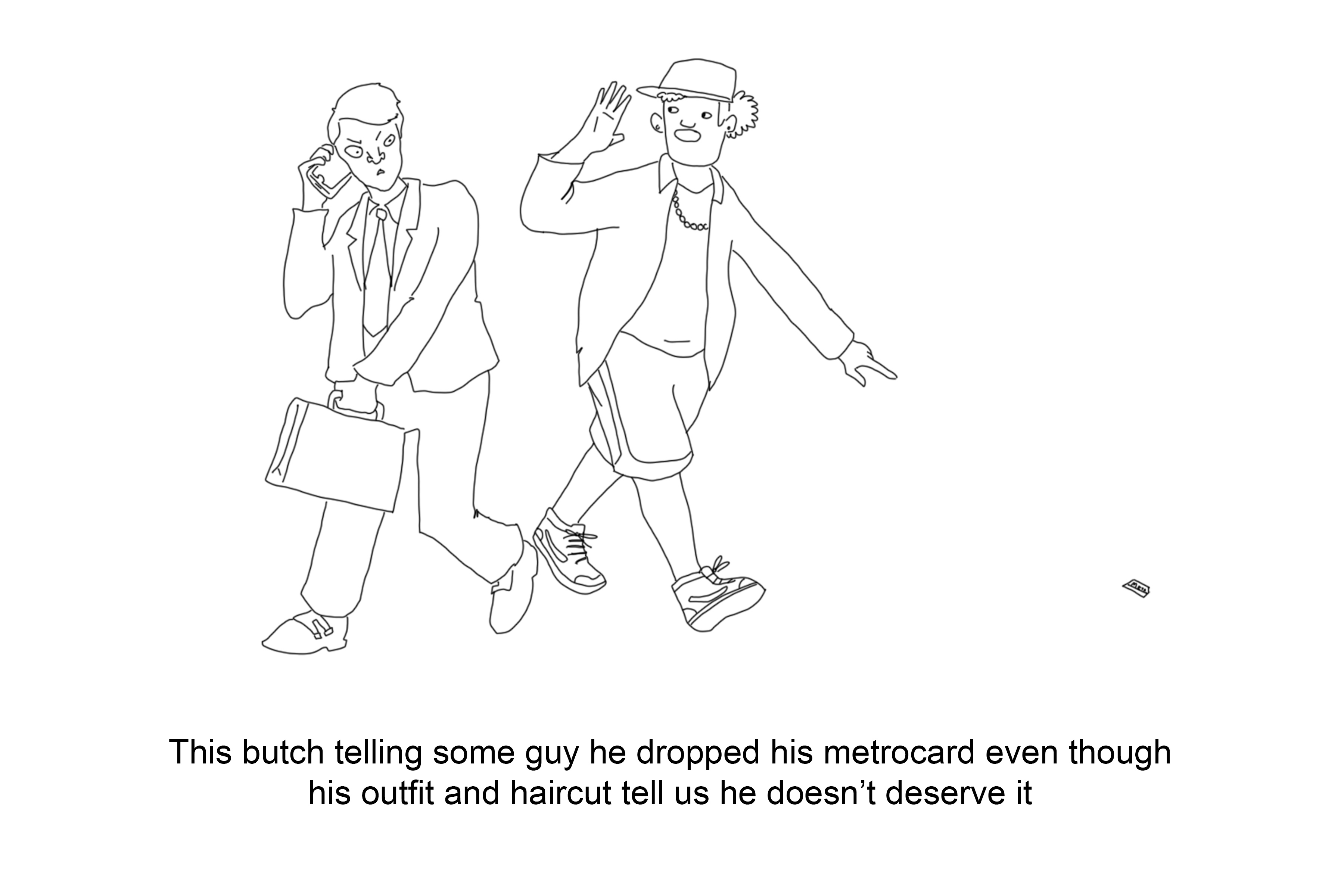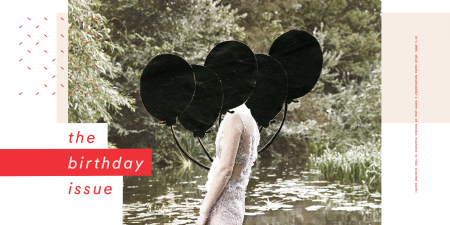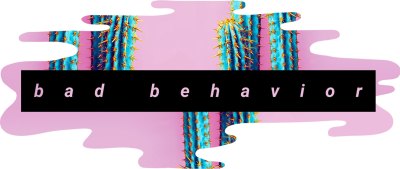How To Create Queer Spaces Through Art
My favorite piece of art is hung above my TV. I think this may be breaking some rule about design, but I don’t care — it’s my space, and the setup makes me happy. The piece is a charcoal sketch of a body, but there are more lines than the sole shape of a body. Someone who knows a lot about art might say it’s “abstract,” but I am not that someone. I am just a woman with a wall that I want to enjoy, so I say the body is moving. I say the body is dancing, grieving, rejoicing, fucking, breaking, healing, separating, connecting, breathing. I say the body is living and, because art is alive on my wall, my whole space is alive, too.
There is a liberty in adorning your space with art. It feels like having your own museum exhibit: a place to bring your interests, aesthetics, and values to life. As a person who has never felt comfortable in the hegemonic structures of art museums, I’m drawn to the idea of being my own liberated curator. And I want other queer folks to feel this way too! I want other queer people to share the experiences of their lives through collecting art. I know the term “art collector” comes with a lot of associations, but all you need to become an art collector is an affection for creation, an appreciation of beauty, a nourished imagination, and a small budget (even $5 works!)
For queer people, adorning our homes as we desire is especially important. Because our sense of safety is constantly undermined, creating a personal place for refuge is vital. Art, along with community, can ground us in this haven. Art warms, comforts, and sustains us. Art can reflect the life we live and also be a portal into the world we want. So the endeavor of collecting art is a social act of rejoicing in who we are and conjuring who we wish to be.
While the importance of collecting art is clear, the reality of actually finding and purchasing art can feel tricky. Where do you go to find art? What kind of art should you buy? And most importantly, how in the world do you pay for it? I used to think that collecting art was something only really rich people did (spoiler alert: not true!) I also thought that the commercial wall decor I bought from Target didn’t count as “real art” so I couldn’t call myself a collector (also, not true!) All of these long held beliefs about access and importance of art changed when I connected with Delia LaJeunesse of Sbvrt Art.
Delia is an art consultant who, full disclosure, also happens to be my very dear friend. Her mission is to empower people who may have felt disenfranchised from collecting art to begin their journey of finding art. A journey of prioritizing meaning, beauty, and awe in their lives. A journey to live more artfully. When my wife and I got married, we asked Delia to help us find a few pieces for our home. We have very different tastes, but our mutual desire was to create a cozy, queer space (on a realistic budget!). Delia’s framework was meditative, budget friendly, unpretentious, empowering, and astoundingly supportive. She taught us that we could queer the world of art collecting to our benefit. Because I believe in the collective healing power of art, I wanted to share her advice for others who also dream of how to create their perfect, cozy, queer space.
Why You Should Collect Art & How The Experience Can Be Queered
Delia explains the necessity of collecting art in such simple and beautiful terms: “People should collect art because living with art leads to more artful living. I think we are collectively beginning to really value leading creative lives, even if we’re not fully artistically inclined. Creative living = how you ask questions, how you think about your work, how you compose your day, how you make love, how you cook, etc etc. Surrounding yourself with art is naturally going to inspire more creative and artful living.”
At its core, art can help us to understand the world around us. It can remind us what an interconnected species we are and how to live in greater harmony. So the practice of gathering art becomes a work in realizing our greater connections.
On the matter of queering art collecting, Delia explains: “I think when art collections are approached with a set of values that understand the dynamic presence of art, that focus on employing art towards meaning-making and a deepened appreciation of living, we can step away from a precedent of collecting for the sake of financial investments, or an elitist framework of social status…If we can shift our focus to a) How the art expands our worldview, creates meaningful opportunities for reflection and connection, and aligns us toward our values and b) How the role of art collector can significantly fund and further the career, platform and influence of artists a collector believes in, then we truly have the opportunity to view art collecting as an endeavor for personal growth and social impact.”
In essence, collecting art is not about asserting status but reflecting values. A good example of this is in my sister’s house. She has a close up black and white photograph of the fat rolls on a woman’s stomach hanging in the kitchen. My sister is raising a daughter and deeply values being anti-fatphobic. This art serves to expand her daughter’s growing worldview, plus anyone who visits her home, to have respect and acceptance for diverse bodies. In this way, art can showcase the social change we are working to advance.
Where To Find and Purchase Affordable Art
Finding art can quickly become overwhelming because there is an abundance of options. This challenge is the reason Delia started her business. She wanted to work with people one-on-one to find art that met their aesthetics and budgets. She recommends searching both online and in person. A few quality online options are Etsy, Artfully Walls, Minted, Saatchi, Society 6, Artsy and more. Some museums like The Met and Smithsonian also have open access art, meaning you can search their database to download and print art for free! There are also wonderful places in the local community to source art. Tattoo shops, coffee shops, thrift stores, bookstores, and many independent gift shops.
Delia also suggests, “Buy original work from emerging queer artists. Buy prints from emerging or mid-career queer artists! Prints are fantastic, especially if you’re just starting out and have a lower budget. Emerging and mid-career artists depend on the sale of prints a lot. Prints have a small stigma attached to them that I think is elitist nonsense, so go for it. I focus on living, upcoming artists not only because their price point is a lot more accessible, but also because they have their finger on the pulse of society in a very unique and vibrant way. Artists shape culture, and they are the makers of meaning. Supporting emerging artists, especially queer, BIPOC, neuro-divergent artists is an incredible way to promote the ideas, values, and vision for our potential that you believe in.”
The significance of purchasing directly from artists is heightened when we think about our current climate of unregulated AI. The use of AI in art is incredibly dangerous and harmful to creatives because the technology steals from artists. Every few months, there’s another social media wave of people using AI to generate derivative portraits or avatars of themselves. Rather than participating in a trend that steals from artists, I would encourage folks to make connections with real artists directly through social media, and commission them to make custom portraits. As long as the unregulated use of AI continues, we will have to be diligent in resisting its harm on artists. If we believe art has the power to heal and connect us, we must remember to use it as a source to honor mortal beauty, liberation, and social impact.
How To Live an Artful Life
Ultimately, an art collector doesn’t have to be someone who purchases art at all. Stay with me here, but I believe we can collect our own experiences and curate our own galleries. Maybe it’s not financially feasible for you to purchase art or maybe you can’t find anything that speaks to you. In that case, the matter of our own lives can be extraordinarily beautiful if we give it a container with which to be held. Last year, I took a leaf from the tree my wife proposed to me under and I framed it. My good friend has his Beyonce Renaissance ticket framed on his wall. Every time I walk past a little free library, I look for children’s books because the pictures are often beautiful pieces of art worthy of being framed.
When we pay deep attention to the world around us, everything becomes artful. You don’t have to spend a ton of money building a collection of art, you just need to slow down enough to consider the potential beauty of the world around you.
An Interview with the Queer Creator of the Gandalf Big Naturals Meme
One thing you probably should know about me is that my sister, girlfriend and I have a group chat…and in this group chat, we exchange a lot of Lord of the Rings memes. There is no reason for this besides a shared attachment to the imprint the LOTR has left on our collective nerd consciousness.
For example, I might share something like the following:

Followed by:

And then my sister responds with:
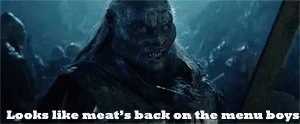
implying that this guy knows what a menu is
Which, uncalled for, honestly. Or, she might send this to me in lieu of actual advice:
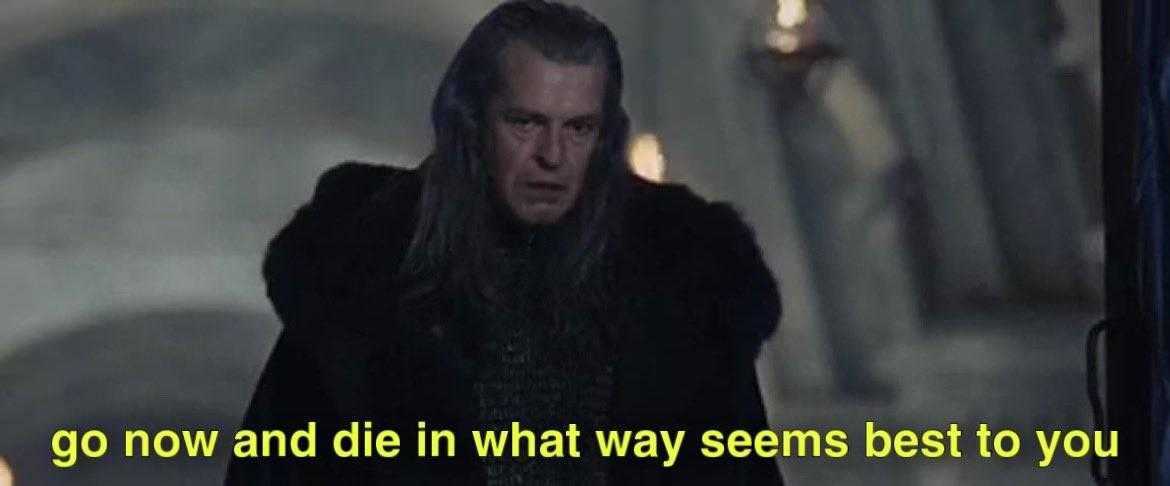
Meanwhile, my girlfriend is just, like, a witness to these exchanges? Also you all are lucky that I, the Nico of the siblings, is the one who responds to the advice q’s because if my sister had that job you might just GET THIS.
And everyone who has had the pleasure of multiple tarot readings with me knows that when drawing the Nine of Wands, I don’t actually read the card for you. I just pull out my phone and play you the below video and say “that’s the card.”
https://www.youtube.com/watch?v=OA8wkz0uGLE
ALL THAT IS TO SAY that when my sister dropped Gandalf Big Naturals — a meme whose details you can probably discern from the name itself, but if you need some assistance is literally just Gandalf photoshopped with big ta-ta’s — into my life, it was a part of a long and storied discourse…but it was also something different.
There was a quality so charming, so artful about this piece that I — and, I think, I’m not exaggerating when I say, thousands of others — found it so magnetic that we paused, we contemplated, we passed it on, and we wondered at what could have inspired the creator. In order for the rest of this to make sense, you need to know that I first encountered Gandalf Big Naturals on TikTok via my sister and then later on Tumblr, and I don’t believe the artist behind it is particularly on either of these platforms, so for my first run-in’s with Gandalf Big Naturals, the artist remained a mystery.
The enigma only called me closer when I saw a Tumblr post alluding to the fact that Gandalf Big Naturals was created by the artist as they recovered from top surgery. Gandalf Big Naturals was DEFINITIVELY AND ABSOLUTELY QUEER ART?!? No wonder it was so quickly beloved! No wonder I was so disarmed by this piece, so in awe of its easily accessible joy.
And then, in the desiccated and dying Mordor-esque lands of Twitter of late 2022, I stumbled upon a tweet from the actual creator:
https://twitter.com/beccateeth/status/1593751707422711808
And, from there, I reached out and had the absolute honor of being able to ask the creator — Becca T (they/them) — a few questions about their work.
Nico: Can you set the scene for me? You were recovering from anesthesia and you just grabbed your tablet or laptop and got to work? Did you wake up inspired? What was that like?
Becca: So I was recovering from surgery, and me and my fiance were watching Lord of the Rings (great to watch when you can do nothing much except sit around for hours!). The memories of those first 48hrs or so are blurry, but I remember suddenly imagining how cool it would be if Gandalf had big boobs, it just really felt like it would fit him well! It was probably a few more days before I was strong enough to get onto my computer and actually make the image, and I think I posted it right away.
N: How has the reaction to Gandalf big naturals felt to you, especially knowing the whole time that you’d just had top surgery?
B: It has been very funny! It’s always satisfying to make a thing and see people connect with it, even when it’s an image of Gandalf with a huge rack. I’m amazed by the amount of people who make Gandalf big naturals Halloween costumes, some incredible craft there! I honestly had no idea it would be so well received, I guess the people were ready for it?? I like to think that Gandalf Big Naturals is an angel, or some kind of final parting gift from my own boobs, they left me and became a new entity!
N: So, are you a Lord of the Rings fan? If yes, what draws you to the series?
B: I am!! I read the books when I was a kid and watched the movies, I love the expansive feeling of the world and I love the hobbits and their relationships a lot! I also associate LOTR with my fiance, she is a true lifelong fan, and watching the movies together post surgery is a memory I really treasure.
N: And how’s life post-top surgery?
B: It’s been great!! I’m over a year healed and I’m loving it! I still wake up excited that I did it, and excited about my body.
N: Do you have any tips or advice for people looking into or planning for top surgery?
B: It’s so hard because every place is different! I guess maybe my best advice is hang in there!! I’m from the UK where getting top surgery is very difficult due to lack of resources for trans people in the NHS. I moved to Canada and was able to get surgery after becoming a permanent resident. I feel very lucky even though it was a long journey for me! I would say connect with local resources if you can, look to see if there are trans support groups etc. in your area, and trust yourself and don’t give up hope!! If you’re about to get top surgery, I would say try to have someone around who can help you to do stuff in the first week or so, it makes a big difference.
N: So, I know you’re an artist in general based on your social media, and that you do comics, illustration and tattoo! Do you want to talk a little bit about your artistic practices?
B: Yes! I mostly categorize myself as a visual artist, and I do all sorts of things! I see the different parts of my artistic practice as a solar system that orbits around wanting to connect with people and the universe. Having lots of different parts of my practice really helps me from getting bored: comics for example require a lot of time by yourself drawing and writing, whereas tattooing is inherently a collaborative process where I get to be more social, so everything balances out.
Making a memetic image like Gandalf Big Naturals is art to me, and it’s really interesting because by the nature of memes, it becomes disconnected to me as the creator and has a whole life of its own, it’s been fun to watch that happen!
N: And where can people find you (and Gandalf)?
B: I’m mostly on Instagram these days @becca.teeth, I’ll be on Twitter until it maybe collapses (???) @beccateeth and my portfolio website is www.beccatee.com :-)
13 Photos of Dyke Culture Between 1988 and 2003, by Phyllis Christopher
feature image: Phyllis Christopher
In the late ’80s, photographer Phyllis Christopher moved to San Francisco, where she documented protests, queer nightlife, and more. She later became a contributor and photo editor at the lesbian erotica publication On Our Backs, where she worked one-on-one with models who shared their own kinks and curiosities in its pages.
Earlier this year, Christopher published a collection of her black-and-white photos from this era called Dark Room. The book also includes writing from Susie Bright, Laura Guy, and Michelle Tea, as well as an interview with Shar Rednour. In June, I interviewed Christopher about her life and creative process, and she has generously offered to share more of her photography with us.
I love these photos. They feel joyous and hot, and they capture an underground dyke culture that was loud, ferocious, and teeming with sexuality.
If you like what you see and want to see even more, purchase Dark Room online from Book Works. And if you’re near San Francisco, you can attend the San Francisco book launch for Dark Room on Sunday, August 21st, from 3pm to 5pm at the Folsom Street Community Center. Phyllis will be joined by Susie Bright, Laura Guy, Shar Rednour, and Michelle Tea. Carol Queen will host.

San Francisco, CA – 2000 (Photo by Phyllis Christopher)

Karin – Buffalo, NY – 1988 (Photo by Phyllis Christopher)

Queer Nation visibility action at Concord Mall – Concord, CA – 1990 (Photo by Phyllis Christopher)

Dancers – Club G Spot – San Francisco, CA – 1989 (Photo by Phyllis Christopher)

Pro-Choice March – San Francisco, CA – 1989 (Photo by Phyllis Christopher)

Elvis Herselvis at Klubstitute – San Francisco, CA – 1991 (Photo by Phyllis Christopher)

Alley, South of Market – San Francisco, CA – 1997 (Photo by Phyllis Christopher)

Cartoonist Kris Kovick- San Francisco, CA – 1992 (Photo by Phyllis Christopher)

Flannel Fetish Tribute for On Our Backs – San Francisco, CA – 1991 (Photo by Phyllis Christopher)

Daddy’s Boy – San Francisco, CA – 2000 (Photo by Phyllis Christopher)

Michou and Cooper – San Francisco, CA – 1997 (Photo by Phyllis Christopher)

Tribe 8 – San Francisco, CA – 1995 (Photo by Phyllis Christopher)

San Francisco, CA – 2003 (Photo by Phyllis Christopher)
These Portraits Depict the Radiance of Asian Trans Leaders
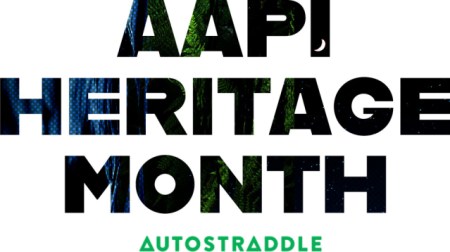
Welcome to Autostraddle’s AAPI Heritage Month Series, about taking up space as our queer and Asian/Pacific Islander selves.
![]()
As a Vietnamese trans femme, the threat of a violent encounter looms over me constantly, like the swinging sword of Damocles. There is an invisible toll that many trans people are forced to pay daily. The price to be authentically ourselves means facing the most direct forms of violence in the wake of a brutal world. More recently, with the increased targeted attacks on Asian Americans, this real threat has seemingly increased twofold. Being far too familiar with the language of violence, it is important to state that these manifestations of hate are continuations of a historical legacy.
The same mechanics that perpetuate hatred against Asian communities are the same ones that endanger the lives of trans people. As both trans and Asian American activism each reach a so-called “tipping point,” we must sharpen our understanding of how the two are connected.
I want to dignify those in our community as trans Asians who are getting us closer to a liberated world. For this portrait series, I was inspired by Jose Barboza-Gubo’s own photo series, titled “Virgenes de la Puerta”, which elevated the role of trans women by depicting them as saints and religious icons. Each portrait is done in a different style – both to push my own personal boundaries as an artist, but to convey a particular character from the subject.
It is crucial to celebrate our lives as trans and Asian people, and uplift each other wherever possible. Within this particular moment, who else may tell our whole stories, beside ourselves?
![]()

Sasha Alexander
Artist, Educator, Healer
“As a nonbinary trans Black South Asian person and as an adoptee so many of my ancestors/names have been stolen from me. As a result of the state’s refusal to accept my right to information and upon the trauma that my ancestors navigated across oceans and lands, I do this work as a seed nourished by the sun and moon and water of their spirits and their struggle. I work as celebration in sake of their names, tongue, and histories for futures, pleasure, rest, care, accountability, and to nourish possibilities of mine and theirs; our histories woven. I do this work for Juan, for Phoenix, for L.L., for the many transcestors who loved me and guide me, for all of us who will be ancestors one day hopefully having made the world a little sweeter, more joyful, sustainable, and just.”
![]()

Loan Tran
Storyteller, Educator
“Home is south. Big and brilliant and messy. It is where my people are, they are my refuge. Home is laughing and crying and apologizing and kissing and messing up over plates of food. It is me belonging to more than I could ever imagine, to more than myself. It is the miracle and hard work of family. Home: Slow Sundays, sitting in the sun and relying on the inevitable breeze to come.”
![]()

Andy Marra
Human Rights Activist, Strategist
“It is with profound love for my community that I have committed my life’s work to social justice so future generations of trans and queer people inherit a world that our ancestors could have only dreamed of.”

Fei Mok
Climate Policymaker, Artist, Community Organizer
“As settlers of color on indigenous land, it is important not just to acknowledge the history of colonization here on Ohlone land, but also our role as settlers and visitors. Our liberation as people of color is intimately tied with the liberation of black and indigenous peoples and this includes return and rematriation of land and reparations.”
![]()

Trang Tran
Healer, Food Historian
“When I think about what liberation tastes like, canh khoai mở (yampi root soup) comes to mind. A simple soup with earthly flavor and mucilaginous texture. The longer you simmer it, the sweeter and better it tastes.”

Richie Shazam
Model, Photographer, Media Advocate
“The goal of all of my work is to center the needs and the vision of my queer family. My work, whether it is my photography, modeling or show Shine True, is not only about representing queer and trans people. It is about building a space for us to flourish, heal and grow.”
![]()

Meredith Talusan
Author, Editor, Journalist
“It’s been difficult for me to envision the future for us in the wake of so many challenges to our communities, but what gives me solace is the knowledge that so many of us are descendants of peoples who believed not only in our humanity, but in our sacredness. Whenever I face challenges to my existence, I recall the spirit of my ancestors whose wisdom grew out of their existence beyond prescribed gender.”

Kiyomi Fujikawa
Community Organizer, Movement Builder
“I’ve found joy in building up the new worlds we want to see, creating new models out of our care, love, and commitment to each other. The experiments, the failures, the learnings are all a part of the process. I find the joy in the trust and grace that we’ll keep practicing tomorrow and the next day until we are all free.”
![]()

Kai Cheng Thom
Writer, Performer, Social Worker
“I’ve been going through a profound shift in how I relate to the world personally and professionally. This past year, I’ve stepped away from work as a conventional mental health professional and into the realm of coaching, conflict mediation, and group facilitation. I’ve had to let go of a sense of knowing who I am professionally and plunge into an unknown space in order to rediscover what I’m called to do with my life. And this professional transformation is rooted in a deep personal process as I struggle to bring the notion of ‘choosing love’ off the page, out of the theoretical, and into the world as an actual practice. It’s scary and I love it. I’m terrified and in some ways, I have no choice. I embrace this unfolding.”

Alex Iling
Sexuality Educator
“We can bring pleasure to our social justice movements by reimagining our own relationship to pleasure itself. Learning to create space for pleasure feels similar to creating space for hope, rest, and resilience. It reminds us of what is possible to experience and why we keep moving forward.”
The Illuminations Grant Offers New Possibilities for Black Trans Women Artists
Cisgender photographers with privilege and access to the art world regularly ask trans people to collaborate with them out of pure trust in their good intentions. The trans people who become their subjects believe that the images will not only appear flattering, but will also act as a means toward more access for trans people, too. But why is this dynamic one-sided? What would it look like if the exchange were a two-way street, with artists placing equal stakes back into the projects and ideas of their subjects when approaching collaborators who come from marginalized backgrounds?
The Illuminations Grant is a testament to what can happen when cultural producers invest their energy not just in the documentation of trans people, but also in creative solutions for their lives and careers. Providing an unrestricted $10,000 to one artist per year, the award funds Black trans women creatives while offering them guidance in the art world through studio visits with each of the judges on the panel. In its first cycle, the judges consist of artists Kiyan Williams, Juliana Huxtable, and Texas Isaiah, as well as curator Thelma Golden. Funded by contemporary photographer Mariette Pathy Allen, the Illuminations Grant allows Black trans women to be more than the object of another person’s gaze by interfering with the culture of extraction permeating modern trans representation.
Mariette’s work comprises a largely unseen photographic history of transness, one that developed prior to contemporary debates around representation. Before the emergence of “trans” as a gender identity, she was a cisgender photographer depicting a multitude of gender non-conforming individuals, mainly middle and upper-class white people she met at crossdressing conventions throughout the 1980s. Her images were groundbreaking because at the time, nobody else wanted to look at trans people in a humanizing light. In the 90s and early 2000s, one can see her subjects diversify in age, race, and class, most notably in the images of trans and intersex youth. In the 2010s she photographed trans women in Burma, Thailand, and Cuba.

Monique in her room, Queens, NY. Image by Mariette Pathy Allen
I met Mariette through a client at my printing lab work-study position in college, and she hired me at first as an assistant and later doing archival projects. Because my art practice centers on the idea that trans people can tell our own stories, I hold a general skepticism of cis artists who build their careers documenting trans communities. I began making images of myself and my friends in college at a time when I had been putting myself online without much critical thought. When people in turn approached me about being the subject of their photography, I at first thought I could find empowerment in the exposure I would receive. But I soon started to feel exhausted by cis artists asking me to use my image in whatever way they deemed fit, often without compensation or credit, with the sole promise of exposure. I became somewhat neurotic about my self-image, and decided I only wanted myself or other trans people to manipulate my likeness, or to control how my body was projected back out into the world.
As I learned very intimately how it felt to have my transness extracted by cis photographers for their own use, I also recognized that my whiteness protected me in certain ways. I had the opportunity to interact with the industry as an artist instead of just a model, as well as from a technical standpoint doing archival work for Mariette. Furthermore, I knew the power dynamics of the art and fashion worlds were not the most oppressive forces faced in daily life by most trans people. That being said, I realized that I had a responsibility to encourage other white artists to consider alternative models for collaborating with marginalized subjects, especially considering the fact that Black trans people face far greater levels of industry exploitation than I ever did.
In working for Mariette, I challenged myself to move beyond my discomfort and look at the bigger picture of what we could accomplish. Even though I’m a trans person, and Mariette and I are both white, we both create photos of the trans community that complicate pre-existing narratives fed to mainstream audiences. The reason I asked Mariette to make the grant in part was because I realized, as a trans artist making work for my community, I could be complicit or even participate still in the same exploitative practices embedded within trans visibility myself.
Although making images of individuals within my own community spoke to the power of trans-directed narratives, part of the dialogue I was having centered on the double-edged sword of visibility: there was a danger in putting Black trans people under a microscope without doing anything to change their material surroundings.
By partnering with Mariette, we could put our energy into engaging Black trans people with the intention of interrupting the harm caused by the various traps of visibility. In her 2017 anthology entitled Trap Door: Trans Cultural Production and the Politics of Visibility, filmmaker, and archivist Tourmaline writes, “If we do not attend to representation and work collectively to bring new visual grammars into existence (while remembering and unearthing suppressed ones), then we will remain caught in the traps of the past.” If the ultimate goal is for people to tell their own stories, white and cis people must understand that their stories will have disproportionate influence on the landscape of the art world. Unless something changes, the environment of white supremacy in contemporary art and culture will allow white artists’ visions to be received as the predominant narrative, while Black narratives will continue to be systemically erased. Although Black trans people are telling stories of their own, they largely get obscured by an industry that historically excludes people on the basis of race, gender identity, and class. As long as the field remains built around whiteness and cisness, these traits will prevail as over-exaggerated norms.
Although the Illuminations Grant’s launch coincides with the current rise in community-based mutual aid efforts, the award has been in the making through a full year-long creative process, in which our team devised strategies to counteract the art-world trappings of the past. During a series of conversations with consultant and artist Aaryn Lang over 14 months ago, we realized artist awards specific to trans people were few and far between. When I eventually told Aaryn that Mariette was finally on board with the project, Aaryn responded, “why not make it for Back trans women?” The idea set in motion a series of events that none of us fully anticipated, and we eventually hired her as a consultant. We were met with skepticism along the way: many institutions didn’t understand the need for a grant specific to Black trans artists. Aaryn’s presence gave a new meaning and legitimacy to the project.
The Illuminations Grant addresses an important question: why aren’t there Black trans women in positions of power within the art world?
While it may have been groundbreaking for Mariette to document gender non-conformity in the 80’s, her work in this contemporary moment had the potential to grow. Aaryn’s engagement strengthened the impact of Mariette’s platform which already had institutional and financial backing — what it needed was community input. In trusting in Aaryn to guide the grant making process, she took liberties that center Blackness within the grant’s structure. For example, the judge’s panel is entirely comprised of Black artists and a Black curator. Prioritizing Aaryn’s voice resulted in the white people involved with the grant to give up their power in deciding whose art is deemed worthy of recognition, allowing Black people to have total control in this process.
Furthermore, opportunities to meet with judges for studio visits offers support beyond monetary means for Black trans women artists. Not only will the winner of the grant get feedback and mentorship from other Black artists and curators, they will also engage in critical dialogues with stakeholders and industry professionals who influence the art world more broadly. The Illuminations Grant addresses an important question: why aren’t there Black trans women in positions of power within the art world? It is our collective responsibility to continue answering this question by creating new ecosystems in which Black trans women can thrive as artists and as people.
Scenes from a Gender: Illustrated Moments of Trans Womanhood


I’m walking home from yoga. I’m wearing black cropped sweatpants, a My Bloody Valentine tank top, ballet flats. I have my hair up in a bun because it’s a hot summer day. As I approach my building, I pass a black SUV parked on our block. The driver exclaims: “Excuse me! Excuse me!”
“Yes?” I say.
“Ehm…eh…is this…is this Park Slope?”
“Yes, it is. What are you looking for?” He’s a Hasidic man, beard, 50ish, maybe 60.
“Ehm…I want to talk to someone…”
“Um, yes?”
“I want to talk to someone…about the gay.”
“Excuse me?”
“I want to know more about…the gay.”
I’m just too confused to do anything rational. “Well,” I say, stupidly, “I’m sure there are, um, online resources you could look into.”
He chooses to ignore this pearl of wisdom. “You live here?”
“Um, yeah.”
“In this building?”
At this point I should have just ran. “Uh huh.”
“Maybe I come upstairs and talk with you? You have time?”
“Uh, no…I don’t think so. Look, sorry, I’ve got to go.”
He stares at me quizzically. “You are a man or a woman?” Why am I still engaging with this person?
“I’m a woman.” I say.
“You have a penis?” he responds.
I turn around and stride purposefully home. I’m shaking.

Joan and I are in Berlin, looking for a bar to pop into for a pre-dinner beer or two. We choose a smoky old-school dive in Charlottenburg-Wilmersdorf. Everyone’s older, smoking cigarettes, playing cards, talking, laughing. Not a smartphone in sight. I clumsily try to order our beers in my nonexistent German — with the help of some friendly locals, we’re eventually sorted out. We sit in a corner next to some very drunk grannies who befriend us. They ask us how we like Berlin and we say we love it. They even write us a postcard, in German. At some point, an older woman with black hair and a chilly demeanor, sitting a table away, says to us: “I don’t know vhy zay are being so friendly viz you.” We don’t know how to respond. “Zhey are never zis friendly.” She looks at me. “Are you a man or a voman?” she asks. I’m, once again, dumbstruck. “A little bit of both, eh?” she says. Then she says something loudly in German. The whole bar falls silent for a moment. The drunk grannies start shouting back at her, defending us. Not sure what they’re saying, but they shut her up. We finish our beers and thank the grannies and make for the door. “What the fuck was all that about?” I ask Joan. Back in Brooklyn, our neighbor Ingrid translates the postcard for us. At the end it says “Berlin is not Germany. New York is not America.”

We’re in a Greek restaurant in the Slope — me, Joan, our friends Carrie and Amy. We’re finishing off our dinner — I’ve had the vegetarian moussaka with lemon potatoes washed down with some cheap Greek plonk. Across the way at another table is an older dude and a younger woman. I catch his eye and look away. I look back some minutes later and he’s still staring at me. The younger woman is going on in a loud voice about something annoying. I can’t help but look back though I know I shouldn’t. He’s still transfixed, or something. This time I hold his stare. He says to me: “You know, you’re a very intriguing woman.” Carrie hears this and is momentarily flummoxed. “I’m very attracted to you.” he says. Carrie starts giggling. The younger woman at the other table yells: “Daaaaaaaaad! SHUT UP!”

We’re on our roof. It’s a warm July evening. We’re drinking wine and my brother, visiting from London, is having his usual beer. Joan’s ordered a pizza for us for dinner. When they call to let us know they’re at our front door, I offer to go downstairs and get our pie. I trundle down the four and a half flights of stairs. I have on short-shorts, a cami, bare feet. At the door, the pizza delivery guy is a bald white dude, not sure how old really. “Yeah, I rang the bell but no one answered so I called your number.” he says.
“Oh, that’s good, because we were up on the roof so we wouldn’t have heard the buzzer.” I offer.
“On the roof, huh? Who’s up there?” he inquires.
“Oh, me, my brother, my partner.” Little miss innocent. So ready to share everything with the world.
“Your brother and your partner, huh? Well, what good does that do me?” I’m taken aback but once again, unable to disengage.
“I’m sorry?”
“You and your brother, maybe you and your partner?” What the fuck is he talking about?
“Hey, you want I should come back later?”
Now I’m back to my senses. “Uh, no thank you.” I counter. I sign the receipt and give him back his pen as I’m closing the front door.
“I can come up to your roof later.” he proposes.
“No, that’s really OK, thanks.” I just want this to be over.
Through the last sliver of open door, he looks at me and says: “OK, then. NAMASTE.”
Later, I tell Joan if we ever order from that pizza place again, that she’s in charge of greeting the pizza guy.
One American Goes to See “30 Americans”
This piece was originally published on 12/14/15.
George Floyd was murdered on May 25, 2020, and we stand in unequivocal support of the protests and uprisings that have swept the US since that day, and against the unconscionable violence of the police and US state. We can’t continue with business as usual. We will be celebrating Pride as an uprising. This month, Autostraddle is focusing on content related to this struggle, the fight against white supremacy and the fight for Black lives and Black futures. Instead, we’re publishing and re-highlighting work by and for Black queer and trans folks speaking to their experiences living under white supremacy and the carceral state, and work calling white people to material action.
“The holidays are a tough time to release your inner child into the meadowlands of black conceptual art.”
The “30 Americans” exhibition now showing at the Detroit Institute of Art is an extraordinary opportunity to see the work of some of the most important contemporary artists working today. Everyone who can see it should. Take your nephew. Take your grandmother.
Carrie Mae Weems brings some Susan Sontag-style Regarding the Pain of Others analysis to a series of slave daguerreotypes. In a small screen in the corner of a room, William Pope.L crawls along the sidewalk in a Superman costume to inspire someone, somewhere, to think about the lived reality of homeless people. Iona Rozeal Brown helps us navigate our complicated feelings about the fact that sometimes, Japanese hip-hop artists wear blackface. Kara Walker still wants you to go ahead and try to act normal in front of one of her murals. Just try to smile politely at a stranger while you are standing in front of one of her murals. Hank Willis Thomas does not seem like the kind of guy who thinks that black athletes, by being rich, negate questions about branding and ownership. I have loved so many of these artists for so long. Kehinde Wiley? Kalup Linzy? Lorna Simpson? They deepen our conversations about race and gender and violence and value in a moment when we direly need to deepen our conversations about all of these things. Etcetera, etcetera.
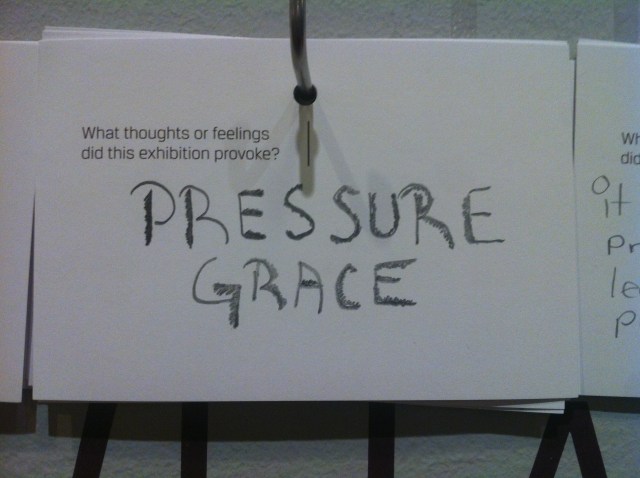
Viewer feedback at the DIA
This is not what I’ve come here to talk about.
As I listened to the audio tour, narrated by Touré, I felt a few things. First, I was underwhelmed. I mean, I loved Touré’s profile of Lauryn Hill in Never Drank the Kool-Aid, but it’s not like he had a whole lot of creative control in this audio tour. The snippets were short. A lot of them involved student responses to the art, when I wanted to hear more from the artists themselves.
Let me preface this by saying: I wasn’t in a great mood that day. It was the Tuesday before Thanksgiving and I was visiting my family — going to a midwestern winter climate from a desert “winter” one. When this happens, I forget how to exercise and I don’t understand what to eat for breakfast. Upon entering the museum, my father and I got into a minor scuffle with one, then three security guards over whether or not my dad’s selfie stick was indeed a selfie stick if he thought it might be used as a “unipod.” I hissed at him, “don’t make a scene,” and then I realized from the way they were looking between me and my dad and back again that the security guards weren’t so much comforted by my presence as they were invisibly sucking their teeth at this coddled biracial kid who didn’t know how to respect her elders. Somebody looked scared—like she was shielding her son’s body from us. Also: there were about five hundred student groups that day. I kept doing that thing adults do in the face of adolescent swagger, where you act like you’re so above it and then you walk into something.
As we got our tickets, my dad nodded his head in my direction and said, “she’s five” in the hopes of paying a cheaper fee, but also in a way that, in retrospect, may have been revenge for me not siding with him in the selfie stick situation. Then, a woman told me, with very intense eyes, that I looked just like Frida. I love Frida Kahlo, but do you ever feel like when a white woman gives a young black woman a compliment with a certain expression on her face you can hear the soundtrack to The Help playing in the distance? Or, I don’t know, Out of Africa? See, I told you: I WAS IN A BAD MOOD. The holidays are a tough time to release your inner child into the meadowlands of black conceptual art. I tried to eat a rootbeer flavored taffy, but my inner child stayed put. So, maybe I was looking for a fight.
On Facebook, I was about to the make the mistake of engaging with a racially charged comment thread. I would actually have to post that Thanksgiving Adele Saturday Night Live video in a gesture of peace. More globally, though, in about twenty-four hours, a white supremacist would be shooting five Black Lives Matter protesters in a city I always thought of as exceptionally tolerant. Paris happened. Beirut had happened. Donald Trump exists. There was something in the air.
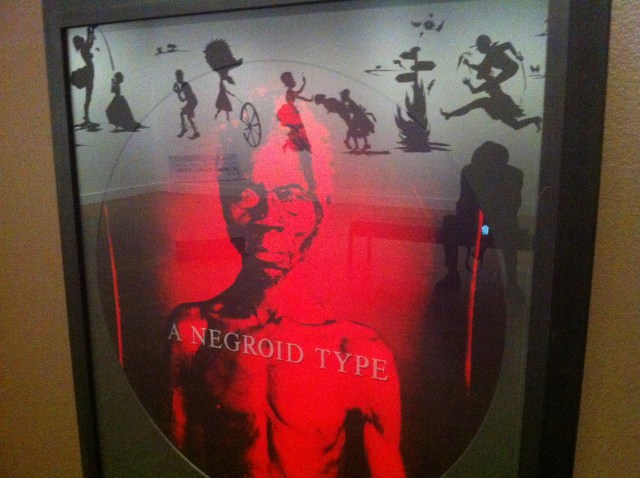
From Carrie Mae Weems’ “You Became a Scientific Profile/ An Anthropological Debate/ A Negroid Type/ & A Photographic Subject (from From Here I Saw What Happened and I Cried series), 1995-1996” with Kara Walker reflected
So, as I walked through the exhibition, I started to wonder: what exactly is it about this show that feels funky? There was a missing context. It felt, somehow, opportunistic. Vampiric in a way, as if the premise was, simply: black is hot right now. But that couldn’t be it — not realistically. Shows like this take a long time to plan, and this was a travelling exhibition that only just now got to Detroit. The Black Lives Matter movement wasn’t even a glimmer in Patrisse’s or Alicia’s or Opal’s eye when the show came into fruition. So why was I not convinced?
Something flickered for me around the time that, in my ear phones, one of the collectors who put on the show, Mera Rubell, asked Shinique Smith about her piece, “a bull, a rose, a tempest.” The work consists of a collection of items—a shoe, a bag, some kind of camouflaged fabric — hanging from the ceiling. When something hangs from the ceiling like that — lumpen, hogtied, reminiscent of a body — there is a visceral quality that makes you want to spend some time alone. In the interview, what Mera Rubell decides to ask is, “Do you go to specific places to get these rags?” And Smith responds, “I don’t really call them rags.”
Now, the kind of frustration I feel toward Mera Rubell’s interview style isn’t on par with, say, the frustration I feel toward Ted Cruz’s homophobic pastor affiliations. The Rubell interviews hold many moments of racially complicated dissonance similar to those Facebook arguments you might have with somebody who does not seem to have encountered any race theory or even considered the possibility that there is some literature to have read up on before diving into that Meryl Streep suffragette tee-shirt kerfuffle. Just, like, five minutes of bell hooks. The frustration I feel toward Mera Rubell’s interview style is rooted in the experience of listening to someone who holds a lot of power, whose title is “owner,” ask questions they don’t care to hear the answer to of people whose intelligence feels tripped up and cornered by the mediocrity of the asking.
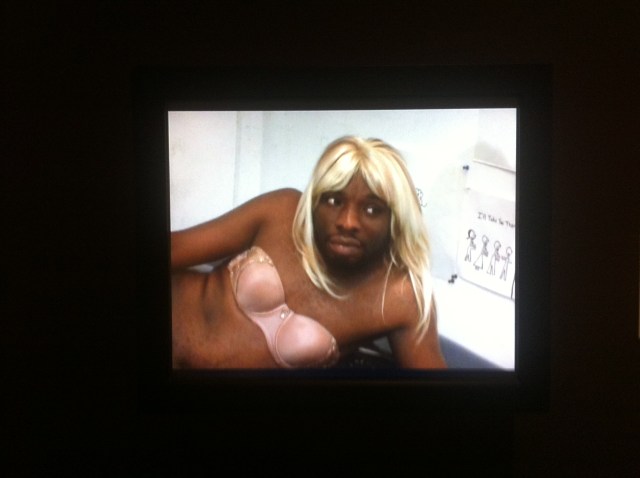
Film Still from Kalup Linzy’s “Conversations wit de Churen” Series
In “America,” Glen Ligon created a neon sign wherein the tubes are painted black, while the light is bright white. The effect is that the lettering is outlined, limiting the incandescence. Mera Rubell says, “This piece — you wouldn’t make this piece today.” She says, “somehow this piece is a pre-Obama moment.” When somebody says “pre-Obama,” I don’t feel far from the phrase “post-racial.” Ligon explains that the piece was inspired by Charles Dickens. When he says, “it was the best of times, it was the worst of times,” Mrs. Rubell joins in. Yup. He continues,
I started thinking about the moment when we went to Afghanistan, thinking how interesting it is when they go to Afghanistan, these reporters go and they interview people on the street who say “Your bombs dropped here and killed my brother and destroyed our house and I want you Americans to live up to your ideas of democracy. We believe in America.” And I thought how interesting is it that America can be this dark star, death star, and also at the same time this incredible shining light.
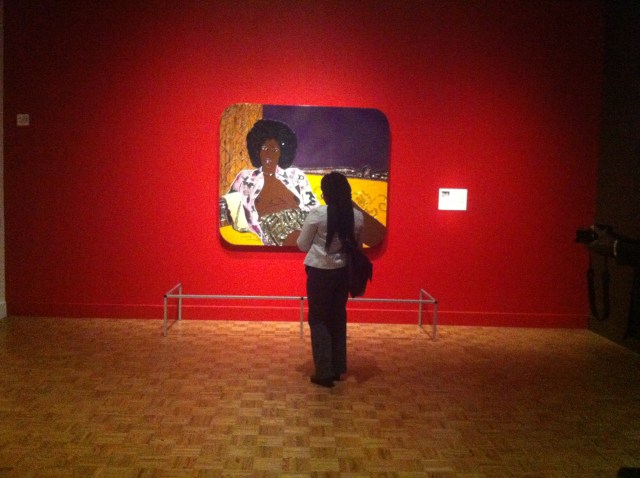
Viewer looking at “Hotter than July, 2005” by Mickalene Thomas
At a literary conference last March, Eunsong Kim gave a talk about the trials and tribulations of Carrie Mae Weems and her series, “From Here I Saw What Happened and I Cried.” Apparently, Harvard University threatened to sue the artist for using the daguerreotypes of enslaved people originally commissioned by Louis Agassiz because Harvard owned these images. Kim challenged the audience to think about the question of ownership here, given that the images themselves portray the bodies of slaves. When encouraged by Weems to have this conversation out in the open, the university declined.
My sweet father purchased for my spoiled ass, “The Conversations,” a DVD about the “30 Americans” exhibit including extended interviews with the artists, and I have been watching with my face contorted into a grimace, the way you would watch, perhaps, Khloe and Lamar. Or certain episodes of The View.
Some artists do a beautiful job of owning the awkward room in which they have been beckoned to perform this chit chat. I say “perform” and “chit chat” because these interviews feel perfunctory rather than curious, contained and at times corrective when the artists have so much more to say than the space knows what to do with. If you want to know what the subtext of this interaction looks like, check out Rashid Johnson’s “The New Negro Escapist Social and Athletic Club (Thurgood)” — in which a black man stands with an expression of utter imperviousness as smoke rises around his Frederick Douglass-style hair.
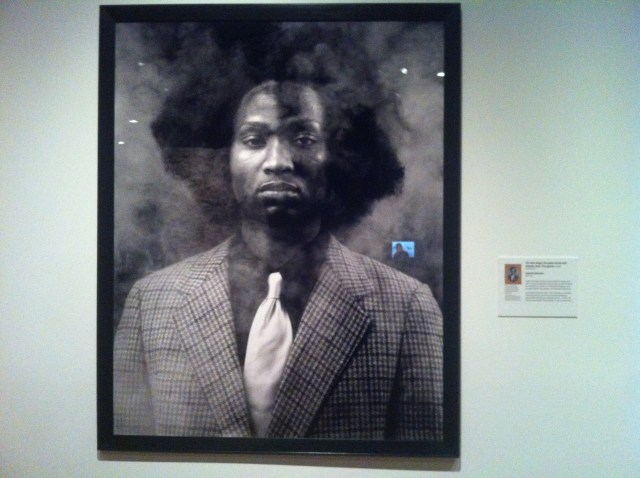
Rashid Johnson’s “The New Negro Escapist Social and Athletic Club (Thurgood), 2008”
I give credit to Jennifer Rubell, the daughter of the collectors, for editing the video in such a way that tries to honor the manner in which these artists assert themselves. The film begins with Kerry James Marshall energetically questioning the concept of power. “There are no black collectors that I know of that can do what you just did in having an exhibition like this,” he says to the collectors’ faces. And, “How much analysis, how much criticality are you bringing to the essays in the catalog?” He goes on to say that the title of the exhibition, by avoiding mention of blackness, feels like a lie: “You’ve tricked them into coming here.”
After we leave, my father and I get some hot and sour soup. We visit Dell Pryor’s gallery on Cass Avenue, where the work of Kara Walker’s father, Larry Walker, hangs on the wall. During Thanksgiving dinner, my (white) mother will ask my (black) great aunt if she is tired. To which she will respond, “That’s why the white man don’t let the n***** eat until after he works the field.” The room will be quiet for the smallest second before exploding into laughter. It always fascinates me that in the humor of this 94-year-old woman, the ante-bellum era exists in present tense. The owner and the slave and the field as clear as day.
Exorcisms, Instagram Strip Clubs, and Extraterrestrials: An Interview With Artist Gia Fagnelli
Gia Fagnelli is participating in the second round of Autostraddle’s Shelter In Our Place digital week! He will be performing on Saturday, May 30th at 10pm.
Supporting queer art and queer artist has been a point of practice of mine for at least the past five years. As a lesbian writer, I’ve sought community in the arms of other artists and creatives, one of these artists being Gia Fagnelli. Gia is Pittsburgh based but has traveled nationally to premiere their pole and video work, building a name for himself as an artist to watch out for. I sat down with Gia to talk about grief, movement, and the responsibility of the artist.

Dani Janae: So the first question I have is a pretty simple one, tell me a little bit about who you are and what you do?
Gia Fagnelli: To keep it simple I’m a queer artist with a true Sagitarrius rising. I’m known for being a stripper, movement artist, a drag performer and also a video artist. I also like to write and make collages. There are just so many different practices that go into any kind of creative person’s life. I use whatever mediums I can get my hands on, art is really a way for me to understand my life better and also to try and make what I have felt and what I’ve experienced useful in some way.
DJ: Drag is often seen as sort of like a cis gay men’s game, what has your experience been as an a AFAB person in that community?
GF: I really think of myself much more as just a general drag performer playing across galaxies of genders, which gives me a lot more freedom. There’s a little something that sets me apart. Yeah and, as an Aquarius, I kind of appreciate anything that sets me apart, you know?
GF: Well, I definitely have always had mixed emotions about the questions I get from audience members after I perform. The way I usually address it when they ask what’s going on with me is: If you’re confused, then we’re on the same page!
That’s my sort of way of allowing myself to live in the grey areas. Internally there’s something that feels right and true and validated when I’m in a room and most people don’t know my gender, because that just means that they are operating without all the assumptions. Then I get to operate without all the assumptions. From an artistic standpoint, I kind of embrace the confusion, but I also feel a lot of responsibility because I’m frequently people’s first encounter with that kind of gender diversity. And I’m an unusual one. So I don’t want to go around spreading an assumption that anybody’s experience is like mine. I just want to keep making room for everybody else’s experiences while I’m expressing my own, you know?
DJ: Speaking about never feeling directly within the binary. Is that something that you’ve also explored outside performing?
GF: Totally. I absolutely cut all of my hair off days before kindergarten started because I didn’t want to be forced into dresses for school, and I fully wanted to be Elvis when I was 7 (before I found out he was a narc and a cultural thief). In high school I didn’t have a gender, I had scenes: I was a punk rock raver freshman running with all the weirdest wildest seniors in the building. I got kicked out a few months into my sophomore year, literally for being too gay, isn’t that incredible?
In college I cut off all my hair again and started binding and first wondered if I was sometimes a man. I have a lot to say about the advantages it gave me on an 85% male campus. The way men talked to me was so different than the way they talked to the feminine straight women that were around. I could even check them when they said something sexist or racist or homophobic and they’d be like, “huh man, I never thought about it” and then pass me the fucking joint! If my hair was long, they would’ve told me to suck it.
After college I lived in the Bay and I thought it was a safe place to really explore femininity. I discovered that even in queer liberal place it was a “boys club” versus femmes dynamic. I’ve just kind of just dabbled a lot in the middle ever since. I only really felt like I came into a sense of empowered womanhood when I became a stripper and a drag queen at 25 years old. And the more I get to explore my femininity, the more I’m feeling connected with my masculinity and allowing myself more freedom to spread out. I really like the way that I’m aging. I’m getting really comfortable, in a way I never have before. In my art, I like the question: What does masculinity or femininity mean off of planet earth, outside of this galaxy even?

DJ: I have this question about your extraterrestrial/alien persona. How did that come about? Was there, like, a particular alien figure in your life, whether that was through childhood or adulthood that made you want to be connected to that as an emotional spiritual entity?
GF: Yeah. My first word was star!
DJ: Yeah?
GF: I always was into space stuff. My brother, too. My brother was hella into Star Wars and I ended up watching a lot of that. I loved ET, and Mars attacks was the first DVD we had in the house.
I’m also an Aquarius. It comes kind of natural to identify with that alien figure. A lot of my work explores feelings of alienation and ideas of queers as celestial beings.
DJ: Yeah, definitely.
GF: Can’t fight the moonlight!
DJ: Do your worlds of being a stripper, a drag artist and performer, a video artist ever collide in unique or difficult ways?
GF: Definitely! I think that right now everything’s colliding because, for one, everything is streamlining to the internet. Before I felt I kind of pressured to keep my SW life separate from my drag, but I’m starting to merge those worlds. There’s really been some fun moments where I have just embraced my drag training while I’ve been on stage in the strip club. I’ve let my stripping experience inform my performances in drag. I’m trying to allow myself to have all of my complexities all in one space. I don’t have to sterilize myself. I can let myself be all the things I am and I think more people will get it, because it’s authentic to who I am. I think most people are complex. They want to see that reflected in art that they want to look at, too.
DJ: Definitely. Do you see that even in cis straight dudes that go to strip clubs?
GF: What about them?
DJ: Do you see them wanting more complex art as well?
GF: I have noticed that some straight men will find my OnlyFans or see me perform in a strip club and follow me because of that, then end up interacting with and liking a lot of my queer content and being really chill customers. And if they’re one more person who buys a ticket to an online show or spends more money on my OnlyFans or sends a tip or even just gives me another like on a post, like, sure, as long as you’re not causing any trouble, you can kick it.
DJ: Do you find that like the drag world and the stripper world ever borrow from each other?
GF: Oh God. Constantly. Our dressing rooms are so similar. Like we’re all identifying each other’s wig hairs tangled in our piles of money or somehow stuck in our buttcracks.
My house mom at my original club actually ran a store downtown (in Pittsburgh) that primarily strippers and drag queens shopped at. There’s an ongoing conversation about drag queens wearing pleaser heels (which are the main stripper heel brand). And you know, I have some mixed feelings about it. I understand that they are a sturdy heel. They’re sexy, they’re meant for performing, and they come in a wide variety of sizes and styles. That’s in part because they’ve always had trans women customers. Trans women account for an important part of the sex work community and culture. These heels are a symbol of sex work, and Cardi B meant something real when she said “these is bloody shoes”.
Queens love telling a hooker joke while wearing their “hooker heels”. I mean, RuPaul has always had sex worker characters, her songs are often about “pussy for sale” and “texting the escort agency”. And the big issue for me is the awareness of the impact of these behaviors on the lives and safety of real people in our community. So you’ll know FKA Twigs, learning to pole dance without saying something, anything, in support of strippers, you know what I mean? If you’re going to be on a mic and a drag show, cracking jokes about SW, then also say “anybody know what SESTA/FOSTA is?” It’s important.

DJ: Your work is very, but not entirely, body-focused. I’m wondering what effect that also has on you spiritual work? You talk a lot about grief and how that, those things like movement and processing through the body has had an effect on your like, spiritual growth.
GF: Oh, that’s such a good question. I’ve had CPTSD since childhood. So that affects the body in a number of ways. It affects adrenal glands and cortisol levels. The body memorizes trauma. Physically processing is a really important way for me to literally move through my experiences. I’m a Leo moon, I take things to heart, also my Venus is in Capricorn, I think in many ways I’m committed to the work of feeling.
I live in a very physical, tangible realm and that’s a way for me to ground myself as well. When I am floating away or dissociating, movement is so important. I’m not formally trained in any form of dance or movement really. but it’s always just been there as a way to instantly reclaim myself at any time.
Long, before I started performing, I’d notice that my movement would have an impact on somebody; it would make somebody laugh or make somebody feel freer to dance on their own. It brought me the relieving feeling that I exist. It’s also another way to communicate when you don’t have the words.
DJ: So I’ve been to a workshop sort of that you led that was on movement and dancing and freedom through the body. When you do things like that, do you find that there is this exchange of energy that is both beneficial to you and also to the person that’s taking that class?
GF: Majorly! Movement workshops charge me up in a special way. When you’re just in a flow state and moving, you’re not analyzing, you are just empty. That’s also when the most incredible discoveries will come to you. You look at your knee caps in it as if you’ve never seen a leg before in your whole life. Suddenly I am the roots of a tree and I can feel that I’m just a quivering cluster of cells. That can be startling. It can be freeing but that’s kind of the goal of the movement meditation. We’re all having our own personal experience of it, while we’re sharing space. Yeah, I get a lot out of that.
DJ: That’s awesome. So in your Vice profile, you described yourself as a lesbian stripper. Do you still identify with those terms? Can you talk about what they mean for you?
GF: I’m the first google result for “lesbian stripper” and I’m so fucking proud of that! When I first came out, even though I knew I was a hundred percent queer, I still came out as bisexual cause I knew it was more complicated than being strictly a lesbian. My lesbian friends hated that. But I also love the word lesbian. Identify so hard with the lesbian community. I would say that I’ve had a lesbian experience in many ways, I’m just also a lot of other stuff. But I just think that my identity is all around greedy (laughs). I am, I am. I’m goddamn greedy with my freedom.
What I’ve lived, I want to own all of it at once. Yeah, I am a lesbian stripper, non-binary drag performer, I’m using he/him pronouns these days, they/them on other days, I used to be she/her, I might be she/her again one day. I’m working on accepting that it’s okay to be fluid and temporary.
DJ: One thing that you’ve been doing recently that I find really cool is your online Instagram live pole shows.
GF: Yeah, Pole Request Live!
DJ: Yeah. Can you talk to me about those and like how you came up with that idea?
GF: Pole Request Live (PRL) is inspired by my creative hustles at the strip club. So I’m working at the club and a dude says “will you dance to ___?” and I’m like “cough it up.” You want to give me an extra 30+ bucks right now, I will tip half of that to the DJ and keep half of it to dance to your little fucking Kid Rock song.
I knew I wanted to do some sort of Instagram live pole situation, which is something that I want to be accessible for people who don’t feel comfortable going into a strip club. I really wanted to just make a space that people could just dip in and see some safe for work stripper art, and I’m having a blast with it.
My main issue right now is dealing with copyright. Somebody will request something popular and then my butt will get booted the fuck off live. It’s been a major obstacle, so I’m moving my PRL primarily to OnlyFans because I can go live on OnlyFans without the hassle of the IG cops. The final Instagram PRL will be hosted on Autostraddle’s IG this Saturday night at 10 PCT, 1am EST! I’m mainly featuring independent queer artists to help battle the copyright cops, so keep your eye out for the playlist, and get your requests in early!
I also want to plug other people’s stuff! There are really cool SW spaces like Thicc Strip which is a collective of thick strippers, bless. If you don’t have a favorite queer stripper, find one (i can recommend a few!) and many of them are making custom content, support that shit! I’m really excited by the different ways people are doing online erotic entertainment.

DJ: Yeah, for sure. So when this quarantine stuff has lifted, what’s next for you? What are you doing after this?
GF: I’m kind of trying to stay in the present because I think that this is going to be going on for a while. In regards to stripping, I’m hoping for the resurgence of the Peep Show.
Right now is a really incredible time for anybody who does video art. Doing visuals for dance parties is something that’s been so fucking cool for me the past few years. I love creating visuals for live dance parties, in the meantime quarantimes, I’ve been doing visuals for DJ nights on Twitch, like the Brooklyn based queer party series XOXA. And that I think is going to be more important than ever while quarantine is a factor.
Right now I really want to focus on releasing all this digital content that I have. I’m preparing to release “The Exorcism Exhibition” which has been in the works for a minute (two years). It was built for a live immersive theatre experience but it’s so video heavy, it’s perfect for a digital platform. Just needs a little more revamping now that I sort of have more possibility than ever. I’ve given myself a deadline of July to get the finishing touches on the first three 30 minute episodes.
DJ: How would you sum up or describe the Exorcism Exhibition?
GF: The Exorcism Exhibition started as a collection of works I created while experiencing the death of my father. My father’s family is Catholic, I was raised both Catholic and Protestant, and I left both churches in early adolescence. Catholicism is as much a culture as it is a religion, and it shaped my understandings of spiritual rituals. This art is a practice in self-exorcism, in understanding grief, undoing intergenerational curses, and seeking justice for others as a way to heal our own hearts.
Some of it is numbers that have been seen in different contexts. For instance, you have seen my Fear the Reaper/Getting Scared number. That’s the one with the eggshells that I did at the PJ (PJ refers to drag performer, video artist, and creative Princess Jafar) thing like 3ish years ago. A lot of it is also stuff that has never been seen or never been published anywhere. Yeah.
DJ: Okay. I’m excited for that!
GF: Yeah, me too. Thank you! I’m finally making moves on formal training in death doula services and feeling ready to make use of these experiences and transform my relationship to them.
DJ: I don’t have any more questions, but is there anything that you want to say anything that you’d want people to know more about you?
GF: Let’s see, I should plug CineFagnelli a little bit. That’s another fun series that I’m doing: looks and digital drag numbers based on films I love. There are samples on my IG, but all the best exclusives are on onlyfans.
I wanna encourage everybody to be engaged with any and all of the local queer independent creators making anything that they feel connected to. If you want to see somebody’s art, it’s important to go to their page and like their posts so that they show up in your feed and show up in your algorithm! I learned that from PJ. Don’t just rely on who has the most views or the most traction, or the biggest name already. Look for someone to root for and watch their glow up! Tell digital show producers who you want to see! This is a great way to boost QPOC and Trans artists. Audiences have more power than they realize in choosing what art they see and support.
Because you really should choose your art for yourself. But you know, you should find people who are reflecting you or reflecting the world that you want to be living in.
Cherry Chapstick on Your Lens and Other Photography Tricks & Treats
Hi there! Are you trying to take photos with more of a ~vibe~? Do you want to try some new things that will give your photos texture and emotions? Have you been thinking, wow, adding cherry chapstick to my photography will really make it look cooler but I’m not sure where to start? Well I am so glad you asked!
I like messy photos – I like to capture moods and emotions in a slightly surreal aesthetic. I love incorporating old and broken things into my photos. I also use textures and trash (literal trash) and things you have in your house right now. These tips will work with everything from phone cameras to pro cameras! You can pick up items on your desk as you read this and start experimenting.
To demonstrate a few tricks I made my friends (one of whom you might know) go to Coney Island on a cold winter day because why not! Also we ended up building a little story that should probably become a picture book? Or a movie? Would you see this movie?
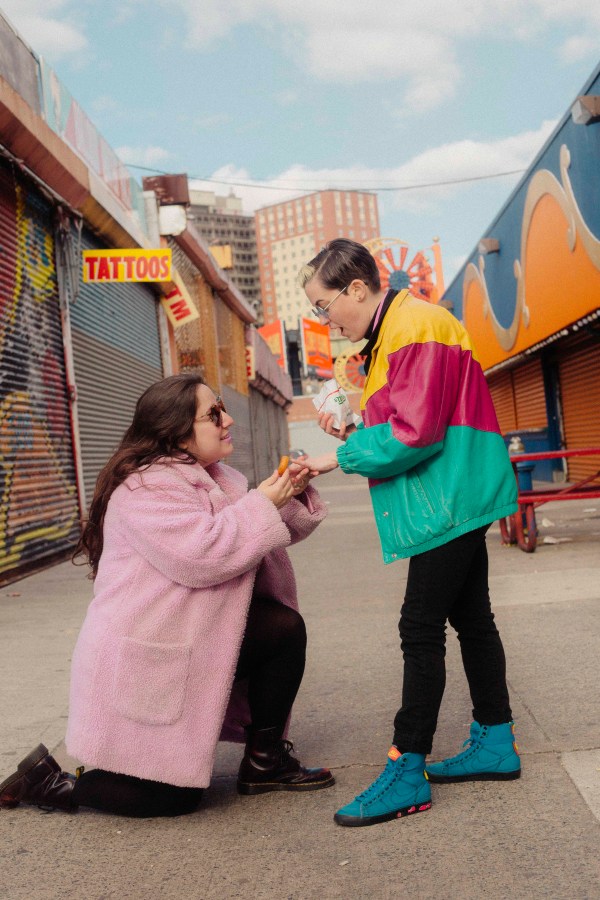
The wonderful models are Vanessa and Shelly!
Okay we’re back. Lately, I have been very into hazy photos. To add that slightly soft slightly timeless look to your photos you can use pantyhose! Or a rainbow sheer scarf! Or any fabric that you can see-through if you pull it tight over your lens! In my opinion, anything is worth trying.
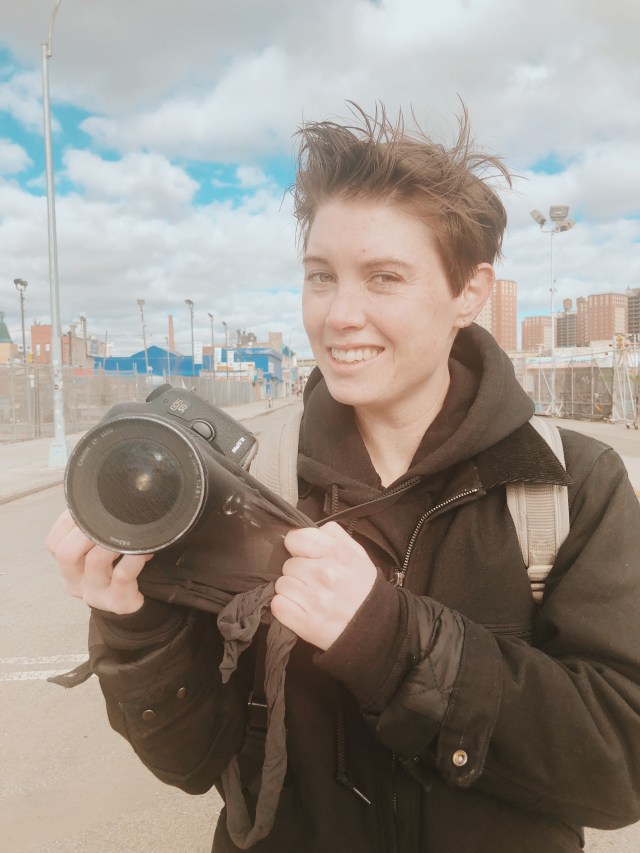
Hanging with some tights
Here’s an example without and with:
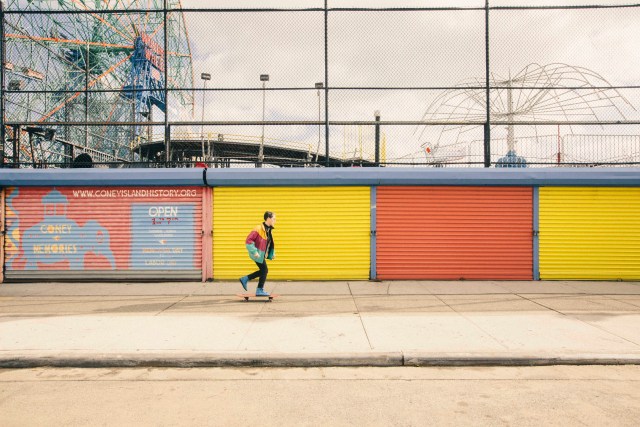
Nothing over the lens

Tights stretched over the lens!
Next! Chapstick! Vaseline! Lube? Whatever you have! The key here – and I cannot stress this enough – is to order a cheap UV lens filter that goes on the outside of your lens. If you are using your phone or a disposable, this is less important as long as you have the proper cleaning supplies.
You want to smear a small amount in a circle around the edge of the filter (or lens) – you can play around with where it is as it will blur whatever is covered. For concerts, I put a tiny bit around the edge and it makes the lights really fill up the frame and twinkle.
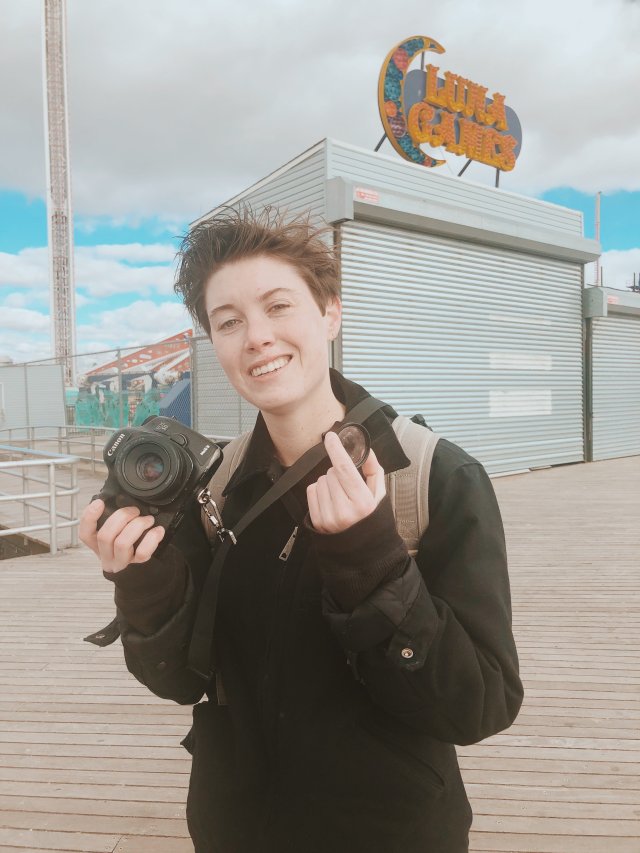
Holding my very dirty lens filter
For this I used cherry chapstick because I forgot vaseline and then I went and rolled in sand dunes so my lens was covered in chapstick and sand. I liked it so I kept it. (Note: It was very hard to clean so I was grateful I did not apply it directly onto the lens.) This is also applied very liberally and way more than I would use to produce a subtle effect.
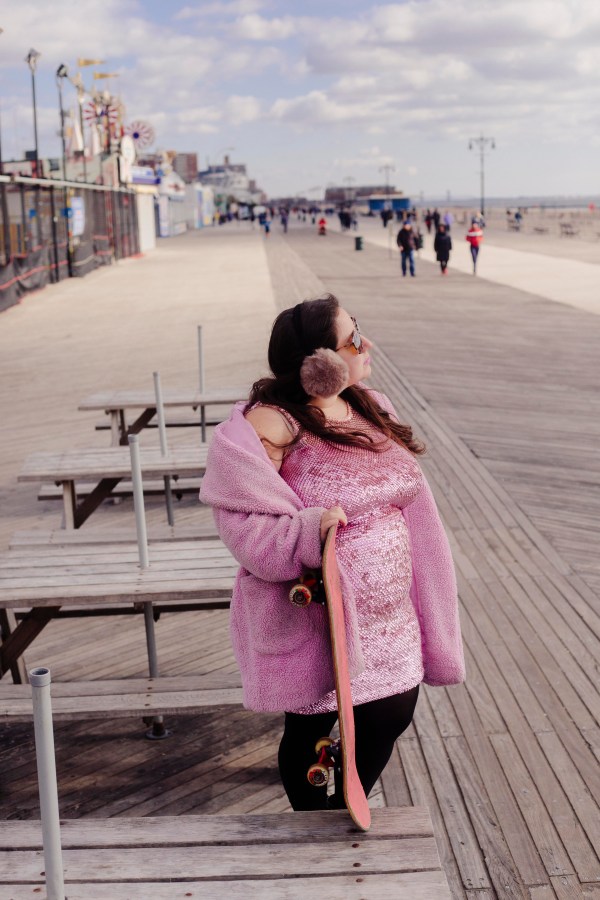
Without
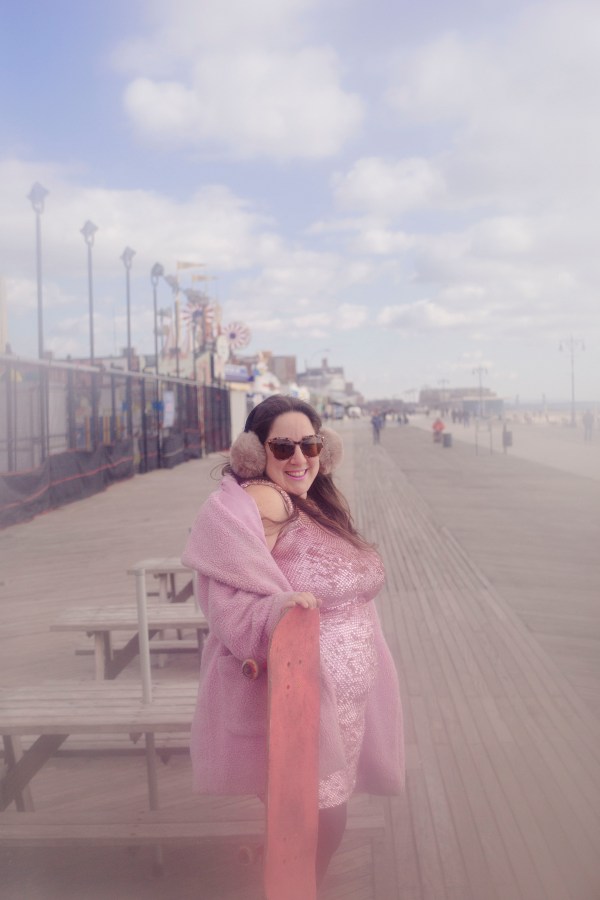
With!
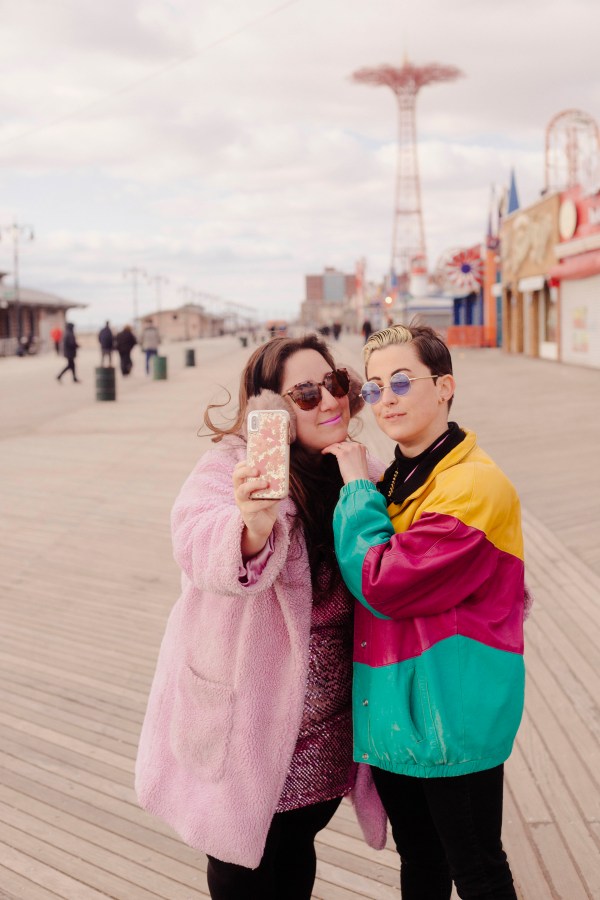
Without

With!
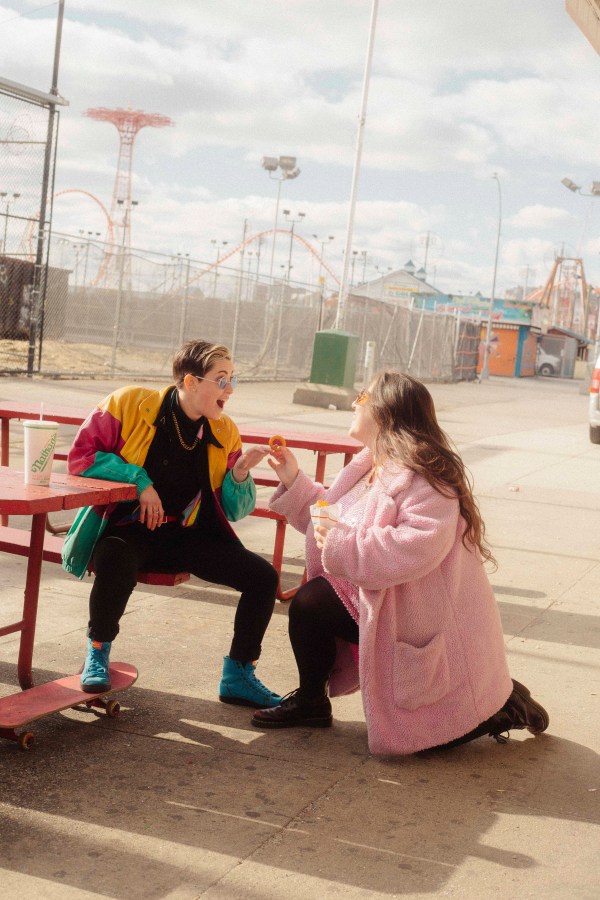
Without!
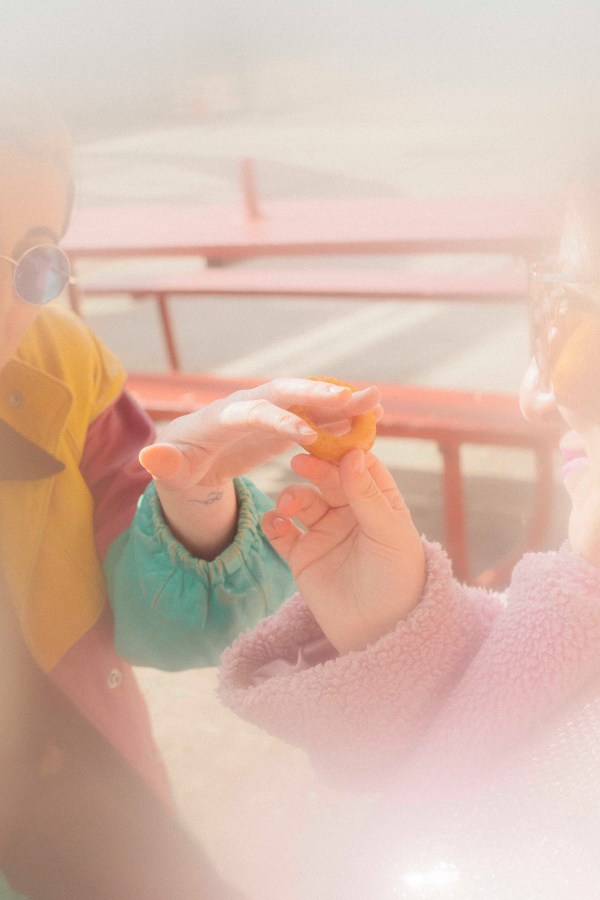
With! (I had to complete the story okay)
If I can leave you with any tip it’s just to literally put stuff in front of your lens. The most well known options are prisms and crystals but you can use your phone if you set the screen to black and hold it along the edge of your camera! Cut open a ziplock bag and stick the camera through it! I’ve even cut open a paper cup and shot through the bottom.
Once you’ve taken these amazing fun new photos where some things worked and some things really didn’t (life is a journey) it is time to edit! Get wild, make cool art, alter reality, send me what you make!
Here are some bonus images!
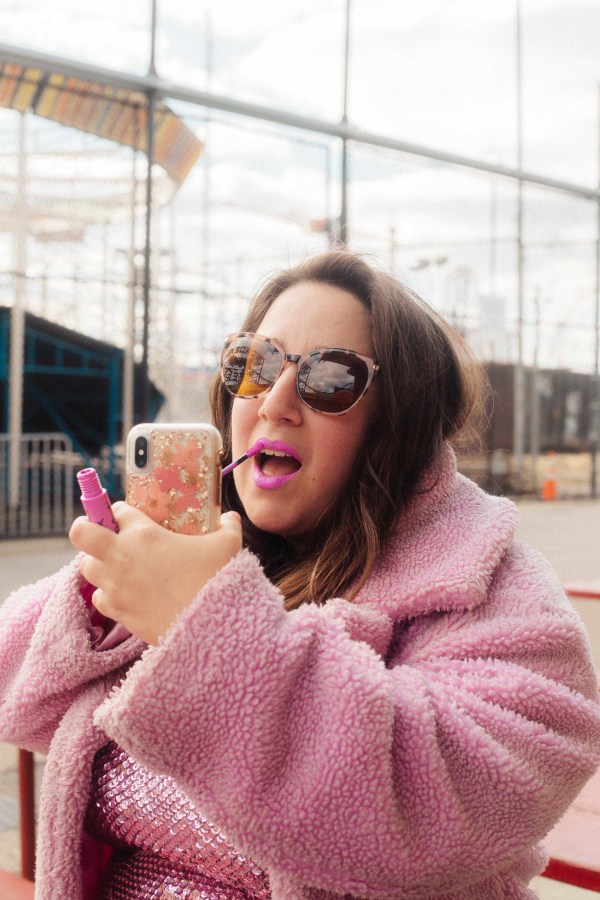
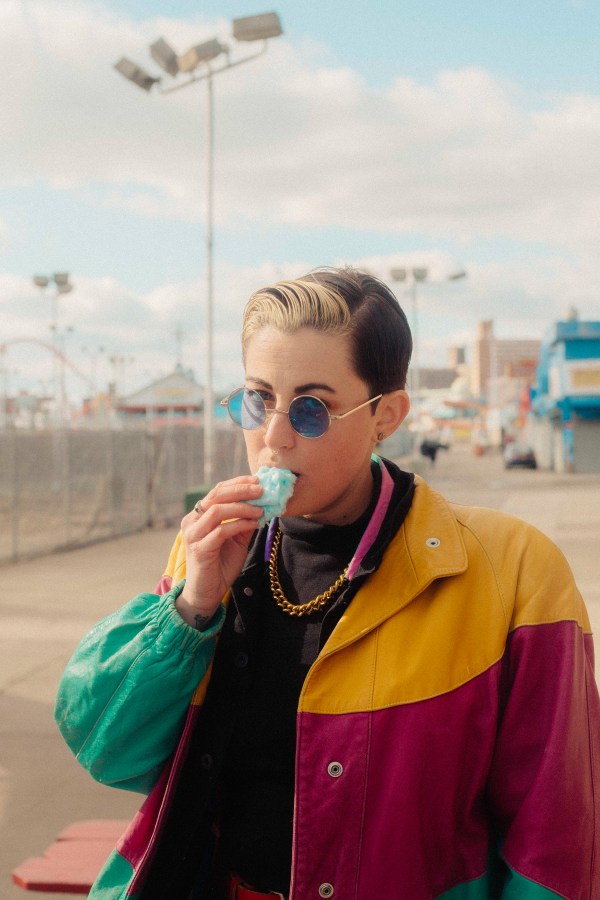
Talking With Candy Feit About ‘Cruel To Be Kind,’ Her Photo Project Highlighting Kink and Intimacy
Cruel To Be Kind is a photography project by Candy Feit that explores the ways in which our sexual pleasure can be based in our emotional pleasure – or displeasure. Feit, a New-York-based documentary photographer and artist who focuses on creating deep narratives about people and their relationships, writes in her artist statement: “These photos investigate the connection between pleasure and pain, and how kink can blur the line between where the body ends and the brain begins.” The images, which include a wide variety of acts including bondage, knife play, blood play, needle play, and degradation, showcase glimpses of nakedness (both literal and emotional) and connection between the subjects in ways that I have not been able to stop thinking about since originally seeing these photographs more than six months ago. “It’s all in the moment between the smack, the punch, the pinprick and the slash, and the emotional release that comes when the pain is acknowledged,” writes Feit.
The moment I got a sneak peek of this work on Instagram, I knew I wanted Autostraddle to publish a full gallery, so today truly marks a dream coming true. These photographs blew my brain apart; I feel so grateful for the care Feit clearly put into capturing each scene. Stories about kink are often told in only one palatable way – these photographs make space for different narratives and messier story lines. These photographs make space, period.
It is with pride and excitement that I tell you we’ve published a gallery of 14 images from Cruel To Be Kind on A+ today, so if you’re an A+ member you can head over to that post and check out the gallery immediately. If you’d like to see the gallery and you’re not an A+ member, now might be the perfect day to subscribe! And if you’re interested in learning more about the project from the photographer herself, you’re in luck – we interviewed Candy about her inspiration, her process, and her intentions with the project and we’re publishing that interview right here on the main site for everyone to read.
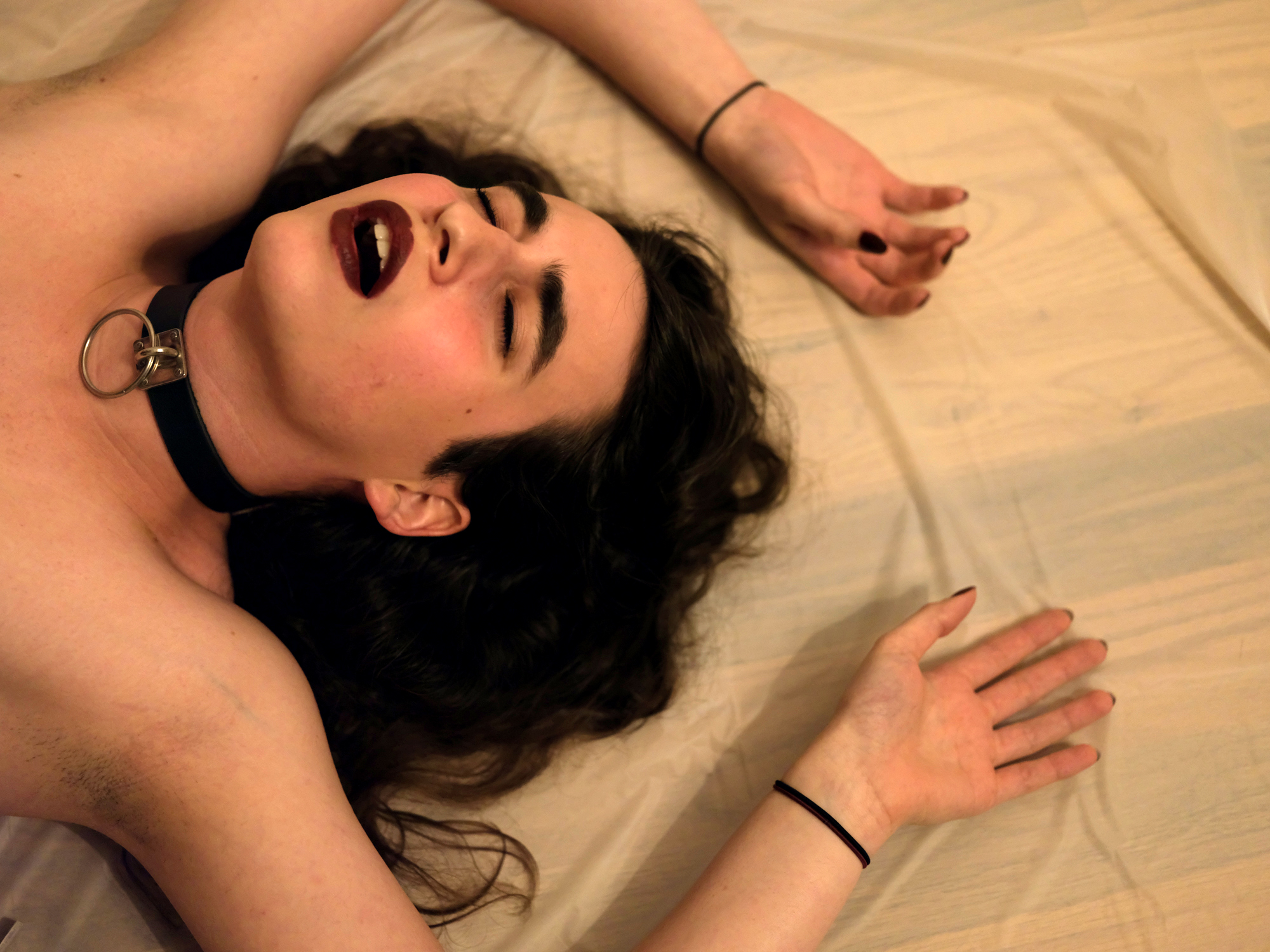
How did you come to this project? Did you set out to document this work or is it something that “found you” so to speak?
The project found me. A friend of mine started talking to me about a person she had met who introduced her to kink. She had a pretty profound reaction to it – something really resonated for her and so we spent a bunch of time talking about it. She had identified as straight for as long as I’d known her but something about playing with women in this particular context was engaging her in a really interesting way.
She introduced me to a friend she had met through the scene and we really connected. She was just super thoughtful – very engaging and had this great way of explaining her kind of kink and play in a way that was both very emotional and physical but also quite intellectual.
So once I met her and a couple of other folks in her scene I was sure that this was something I was really interested in exploring photographically. It did take quite a bit of time to figure out what it was I was trying to document and what interested me about what I was seeing.
How does this work speak to other photography work you’ve produced over the course of your career? Is it very separate from your other work or does it feel as though it is a piece of a larger whole?
There are things about this project that are a total departure from my previous work. I’ve been working as a photographer since 2004, mostly in west and south Africa and South Asia – so it was different for me to work on something that is centered around a pretty small community in New York. I shot the project digitally which is a departure as I usually work in medium format film.
I’ve been working on a project in Southern India for the past six years centered around a group of trans women. So I am used to negotiating around a pretty substantial language barrier and of course being a foreigner – so trying to be sensitive to that. But in many ways this project was more challenging and more outside of my comfort-zone. I know the people I have been photographing in India really well at this point and there is an intimacy with them that’s been built over time. With this project – speaking the same language, being able to ask and understand questions – it was a real gift.
Because I also shot the work digitally I could pretty immediately have dialogue with the folks I had photographed. So while I was sure what I was photographing was interesting and meaningful to me, I could see from their reactions that I had captured them in a way that they also felt was both beautiful and revealing. The dialogue and feedback with them has been really valuable.
One of the things you wrote in your artist statement for this project is “kink can blur the line between where the body ends and the brain begins.” Can you expound a little bit on this?
This was really one of the things I noticed right away. I’m not sure if it’s because I was lucky to meet the people I did who introduced me to the scene, but everyone was really open and clear with me that they engaged in kink in both a physical and an intellectual way. Of course each person experiences this really differently, so forgive me for generalizing my answer bit. But when someone first explained to me the difference between sex and kink my mind was really opened. I didn’t really know much about this world at all so I am sure I had some preconceived notions of what kink even meant (and still this is an extremely complicated topic). But almost all of the play I photographed had nothing to do with orgasm, genitals, or anything else related to “conventional sex.”
That became one of the most interesting things for me to explore. The intimacy and vulnerability totally divorced from orgasm.
It feels like every Pride month we as a community end up in a (depressing) discourse about respectability politics. Particularly at this moment in time, why is showcasing this piece of our community – kink, pain, healing, and how they intersect – important to you?
Such an interesting question.
It’s funny – I started pitching this project around about six months ago and have had a lot of positive responses from people really connecting with the work deeply. But the negative responses I’ve gotten both from queer people – only 1-2 – were extremely negative. Like, “why would I do this work when it’s obvious that all of these people are obviously traumatized” – which totally blew my mind.
I have to say that response really confused me because that was exactly the opposite of what I experienced after talking/watching/photographing these folks. To me these photos are such a clear indication that are so many ways to connect. And that all of those ways – even if it “grosses you out” – are meaningful, important, and even beautiful. So the idea that in order to be acceptable queer folks need to hide parts of our queerness that make people uncomfortable is pretty repulsive.
To see the Cruel To Be Kind photo gallery on Autostraddle, click here.
Look At These Butch Heroes
Let’s take some time to celebrate the butches that make this world better.
PHOTOESSAY: Shoog & Zaire on Proving the Divinity Of Fat Folks
Shoog’s Story
I first started taking photos when I was gifted 50 disposable cameras, dumpstered from behind a Walgreens. At first, I took photos for fun; I loved taking images of my friends and getting them developed, turning them into intricate collaged photo albums. I realized early on that photographing my friends held deeper meaning than just normal everyday snapshots as I watched my fellow weirdos grin big when seeing themselves depicted.
As I grew older and into my queerness, my photography began reflecting my queer community. I started exploring themes within queer culture, such as #QueersInNature, a body of work that explores the deep connection queer folks tend to have with flora and fauna, and #RadQueerSpaces, a place to see the holy queer interiors that house our dreams. This work is important to me not only because it makes my friends happy but also because it documents moments in time with and for a particular set of folks not often considered in mainstream history.
As I grew into my fatness as an identifier, my photography reflected that. I surrounded myself with people who I found the most magic, folks who lived in bodies marginalized by society, similar to mine. After starting #BodiesLikeOceans, I watched as my photography took on a life of its own. I started getting messages and emails about how seeing fat people, queer people, trans people, disabled people, often folks with multiple intersecting marginalized identities in photography was changing people’s views of their own fatness, and others. My photographs depict fat people as beautiful and powerful, happy and strong, and my work made folks of similar circumstance feel empowered.
So here I am. It’s my job now! I take pictures so people can see how beautiful they are. I also take pictures so people know they are not alone, and that there are fat happy beautiful people in the world living it up and loving their bodies, even if just for an hour.
My goals for the future are huge and unending! I want to have billboards of fat bodies up in big cities, my work blown up and displayed alongside other fat artists’ work. I want to meet other fat artists from different countries and collaborate on some kind of large scale world W I D E exhibition. I want to photograph 100 fat people loving on each other all at once. I just want to continue to prove, without any doubt, that fat queer trans and other marginalized folks are beautiful and valuable. I have one million other ideas, but that’s a start.
This specific photo shoot came about when Zaire messaged me on Instagram. I was pretty full, didn’t have much time in Oakland left, but something told me that I should take it. From the moment I met them, I knew they were someone I definitely wanted to know.
They are from the South, and we both come from religious upbringings. With their shock of fluorescent hair and their fluffy sidekick Spiky, they were photogenic as all hell. They were down to do whatever, which is so great for me because it lets me feel free in my artistic practice, to pose and place people where I feel like they look best. I had been saving these tiny little pine cones that I had collected on the coast of Oregon for like a month and a half, not knowing what to do with them, but I knew what I wanted to do when I saw Zaire. I asked them to lay on their side in the grass, and I arranged the pinecones in a circle. Something about the difference and sameness of the texture the pinecones created and the texture of their stretch marks felt really powerful, especially when they looked directly into the camera for my favorite shot. I really like showing connections that our bodies have with nature, because nature is often thought of widely as magical, beautiful, perfect – and that’s how I intend to prove the divinity of fat folks.
Zaire, photographed by Shoog
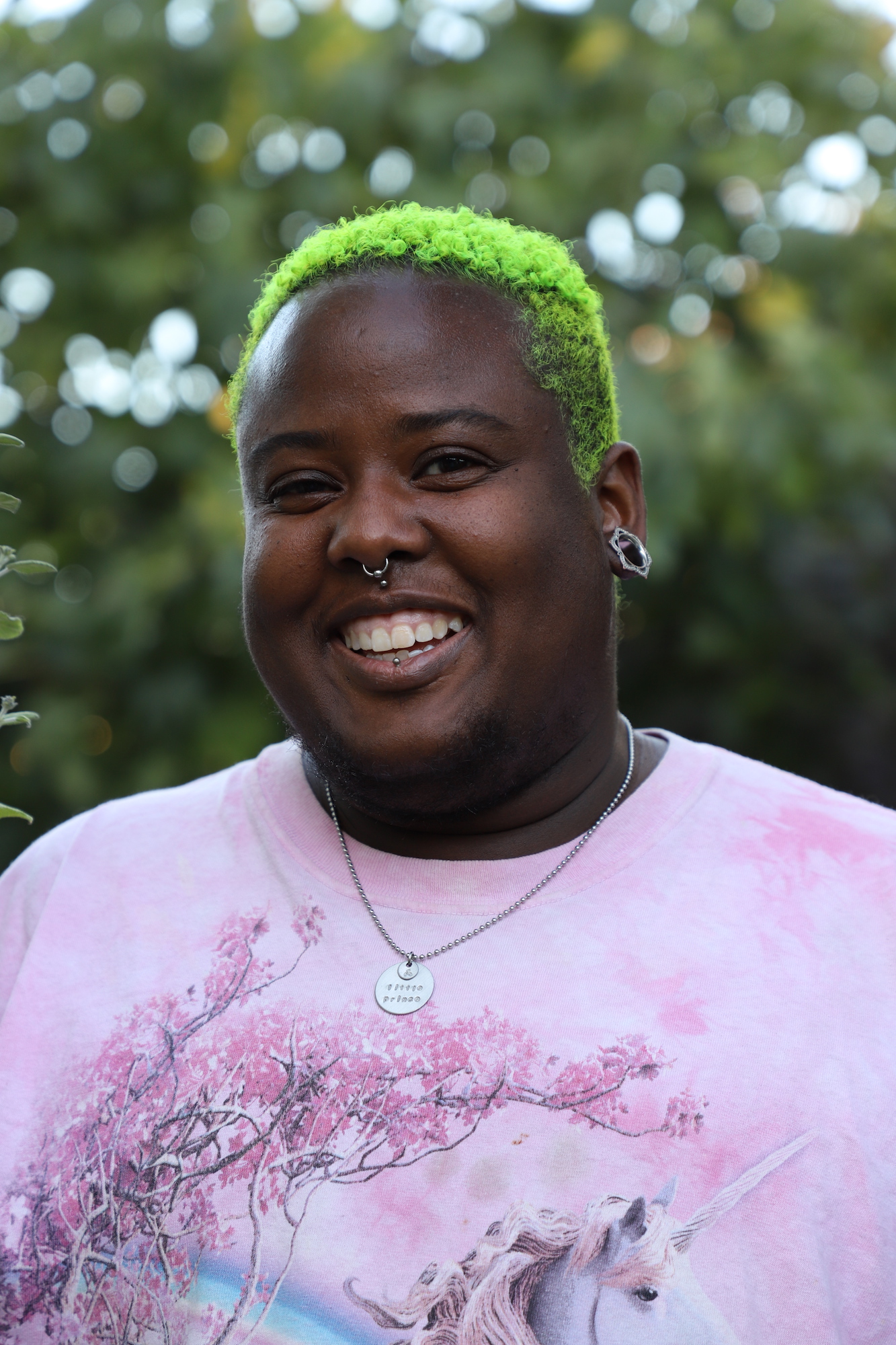

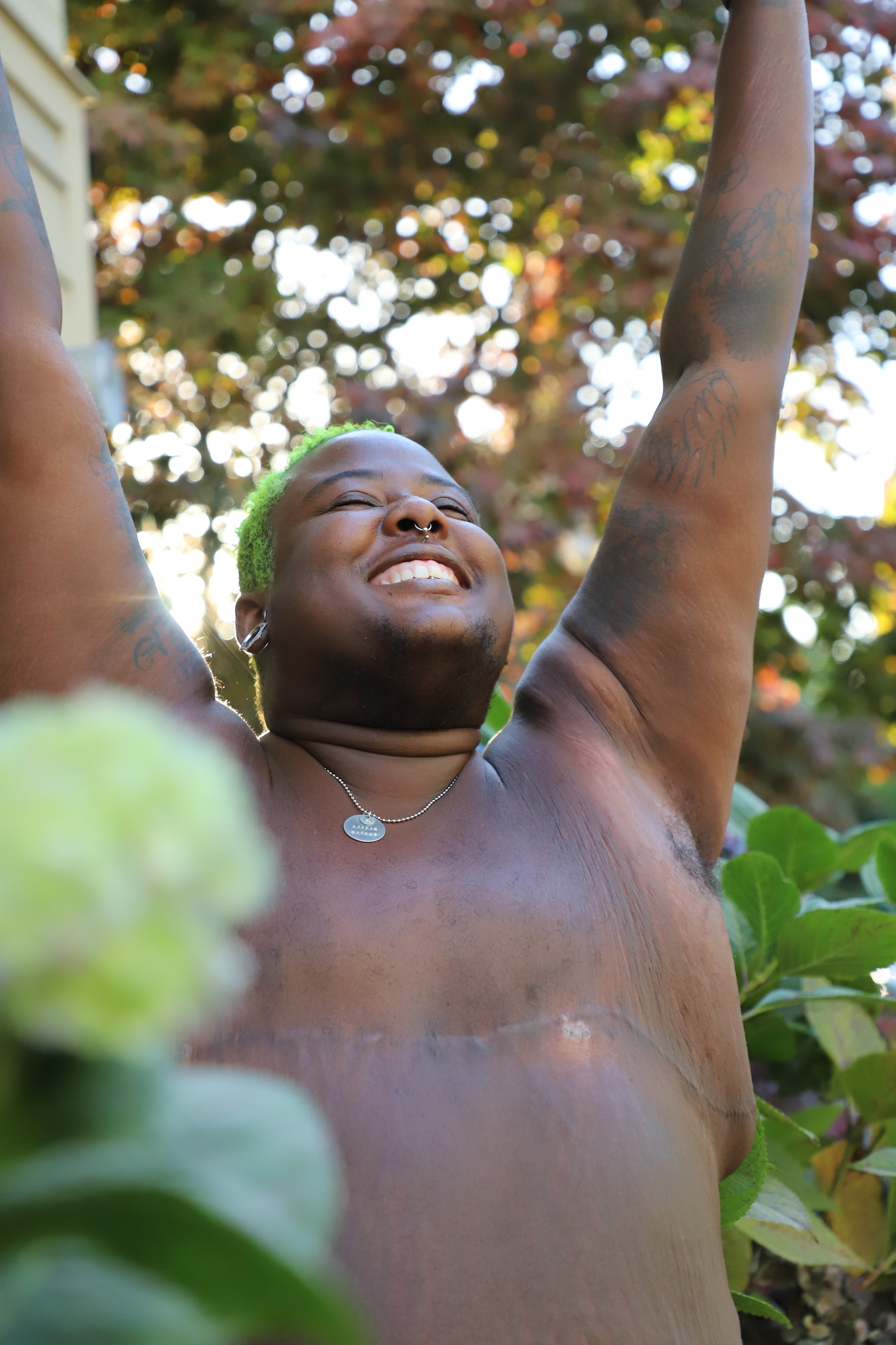
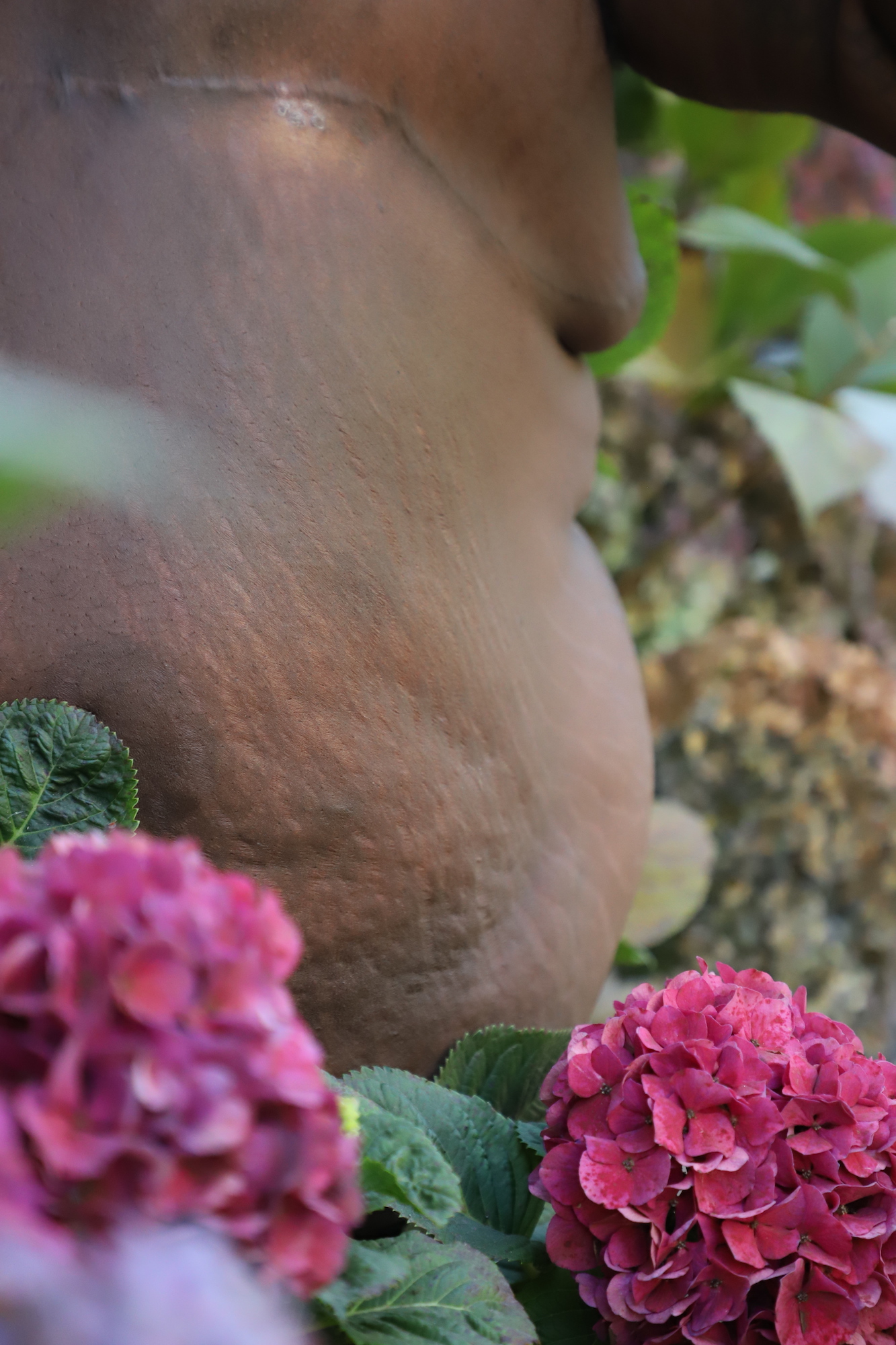
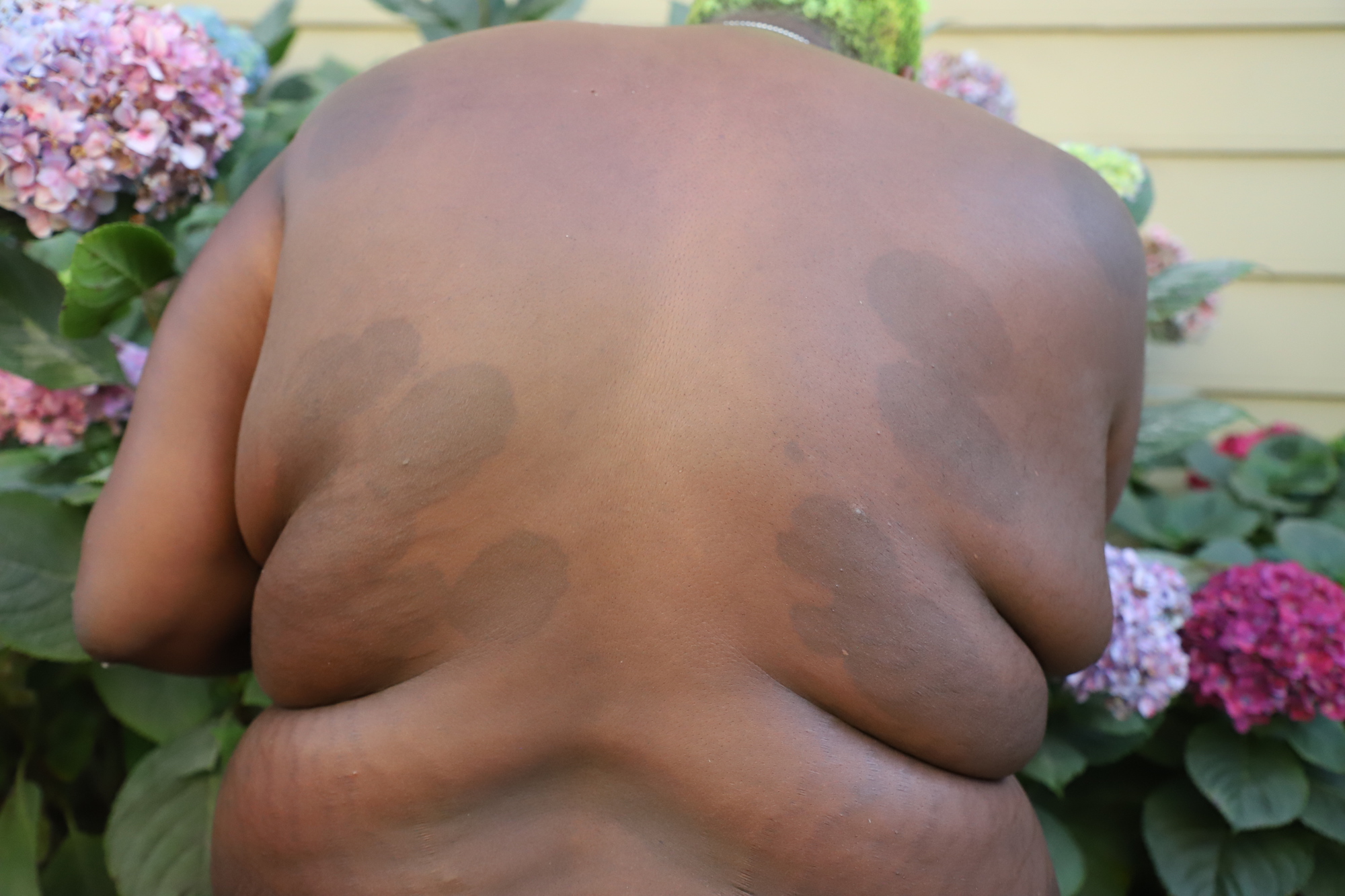

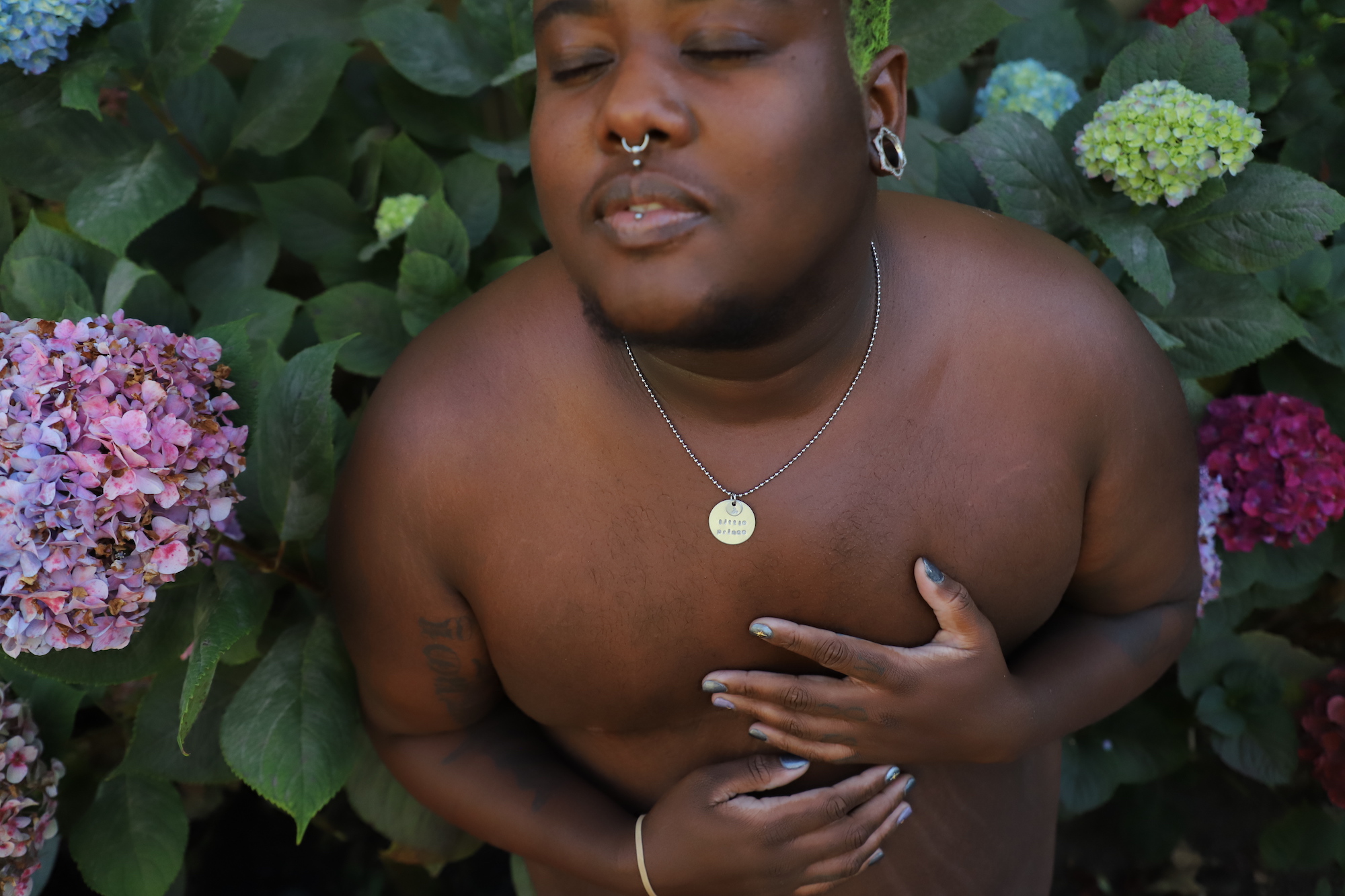
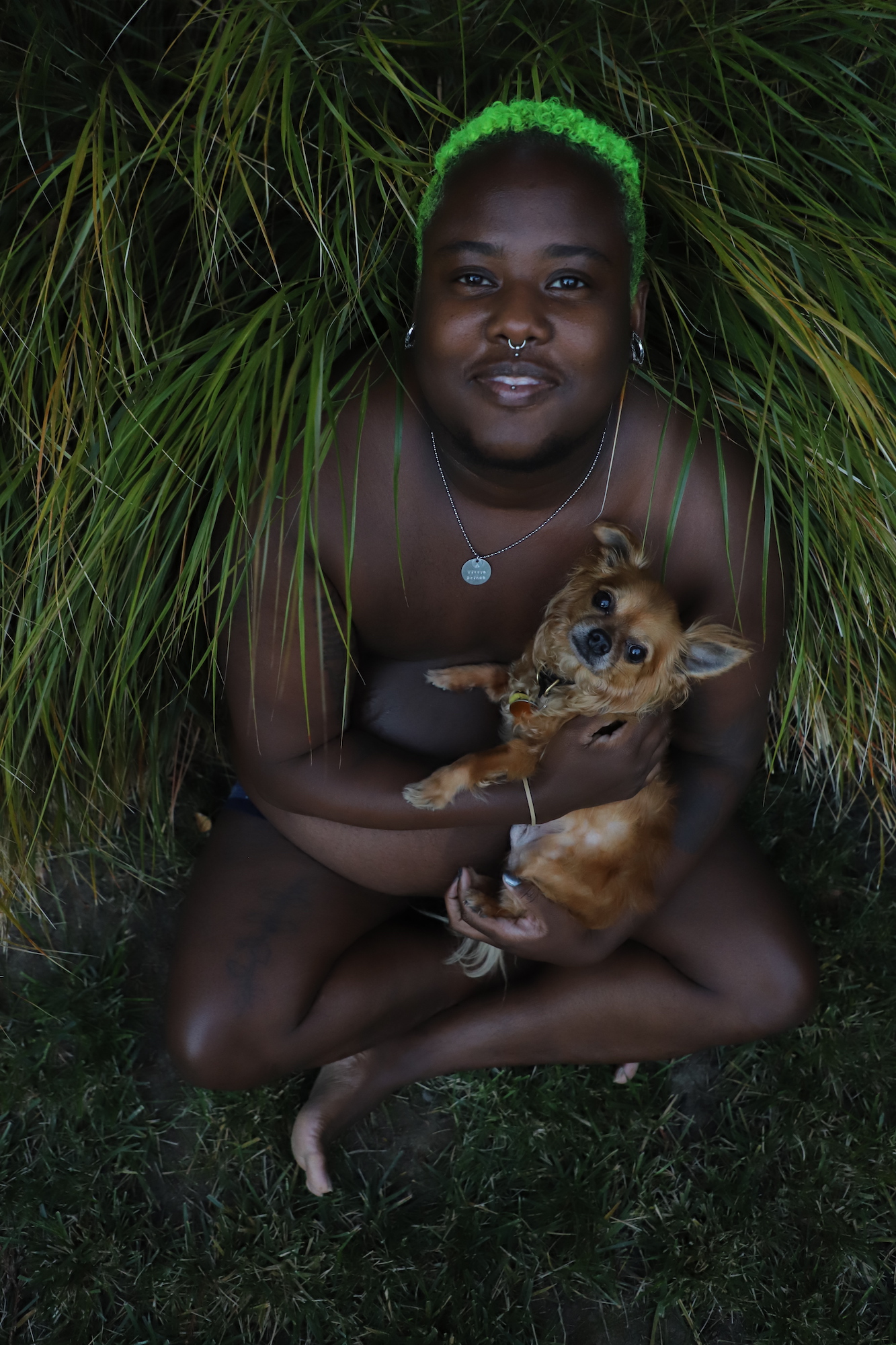
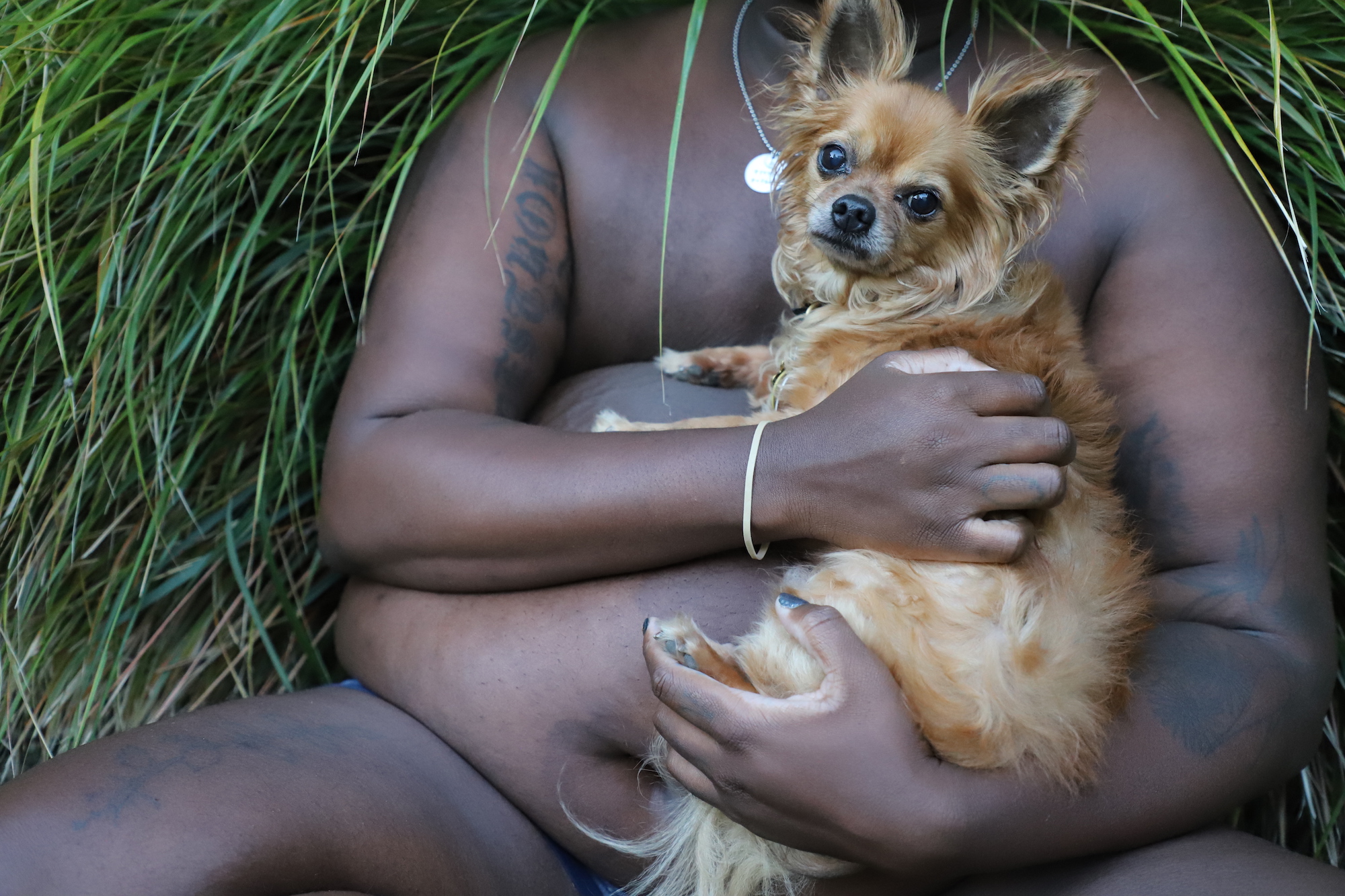
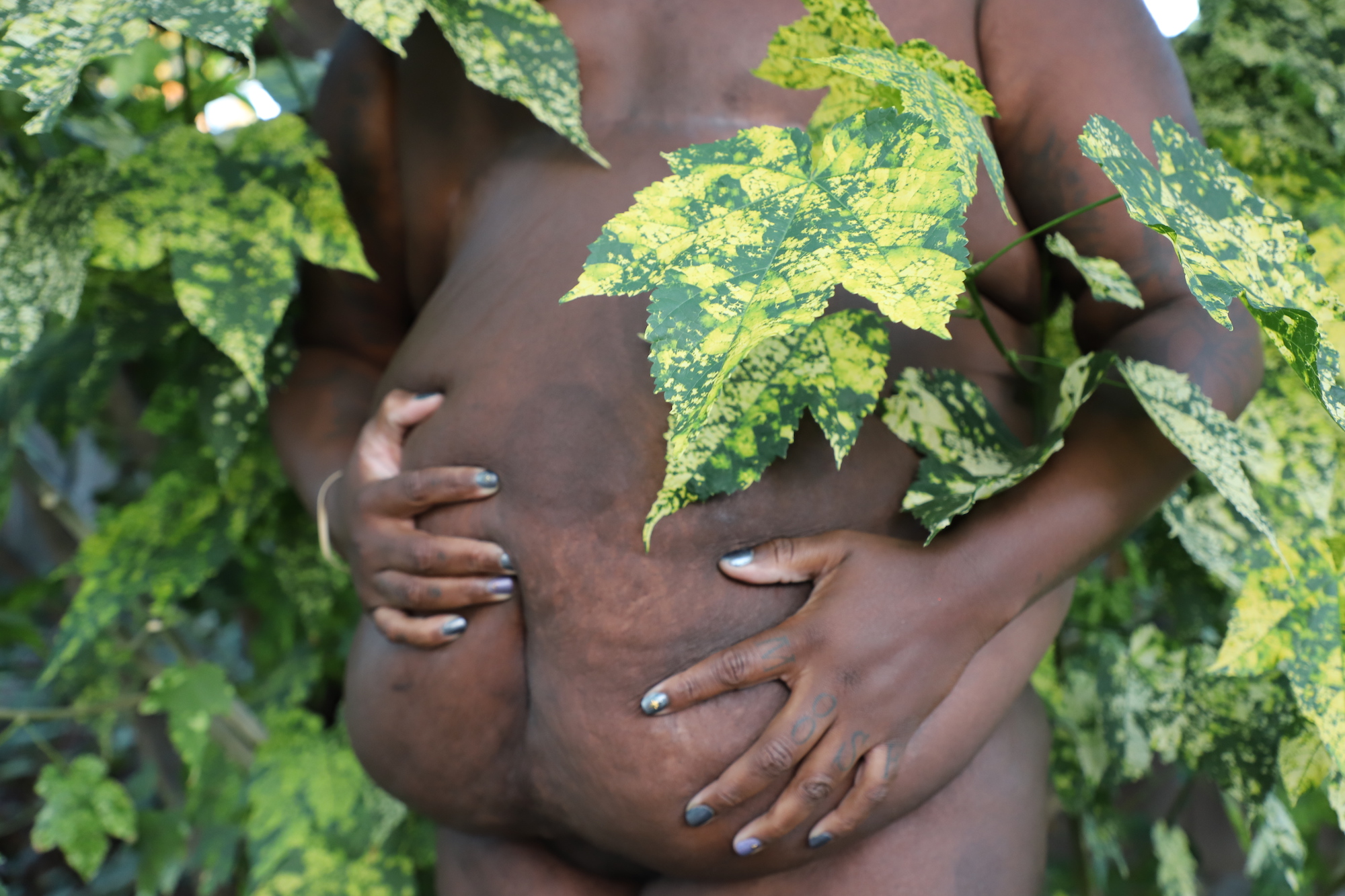
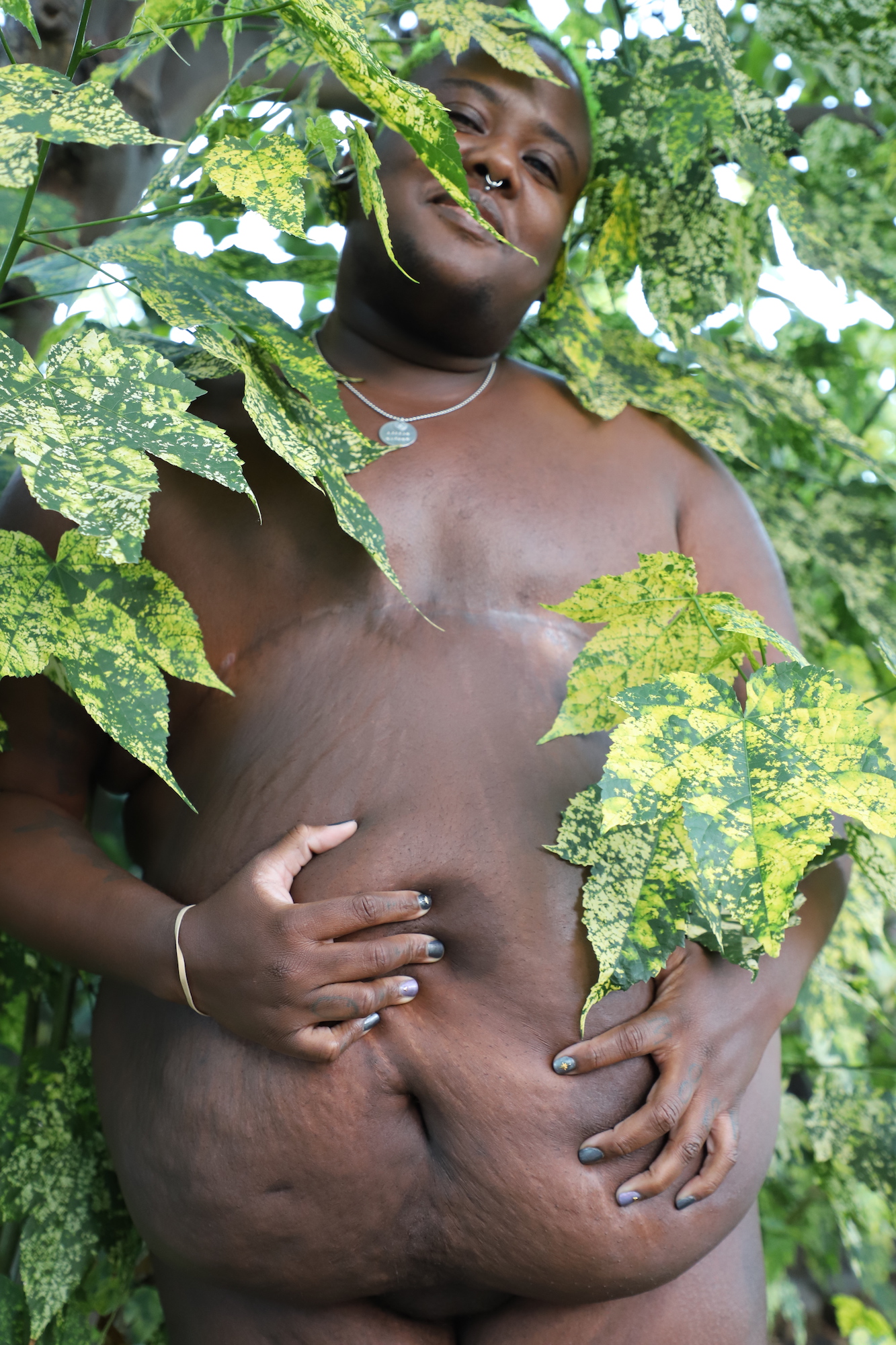
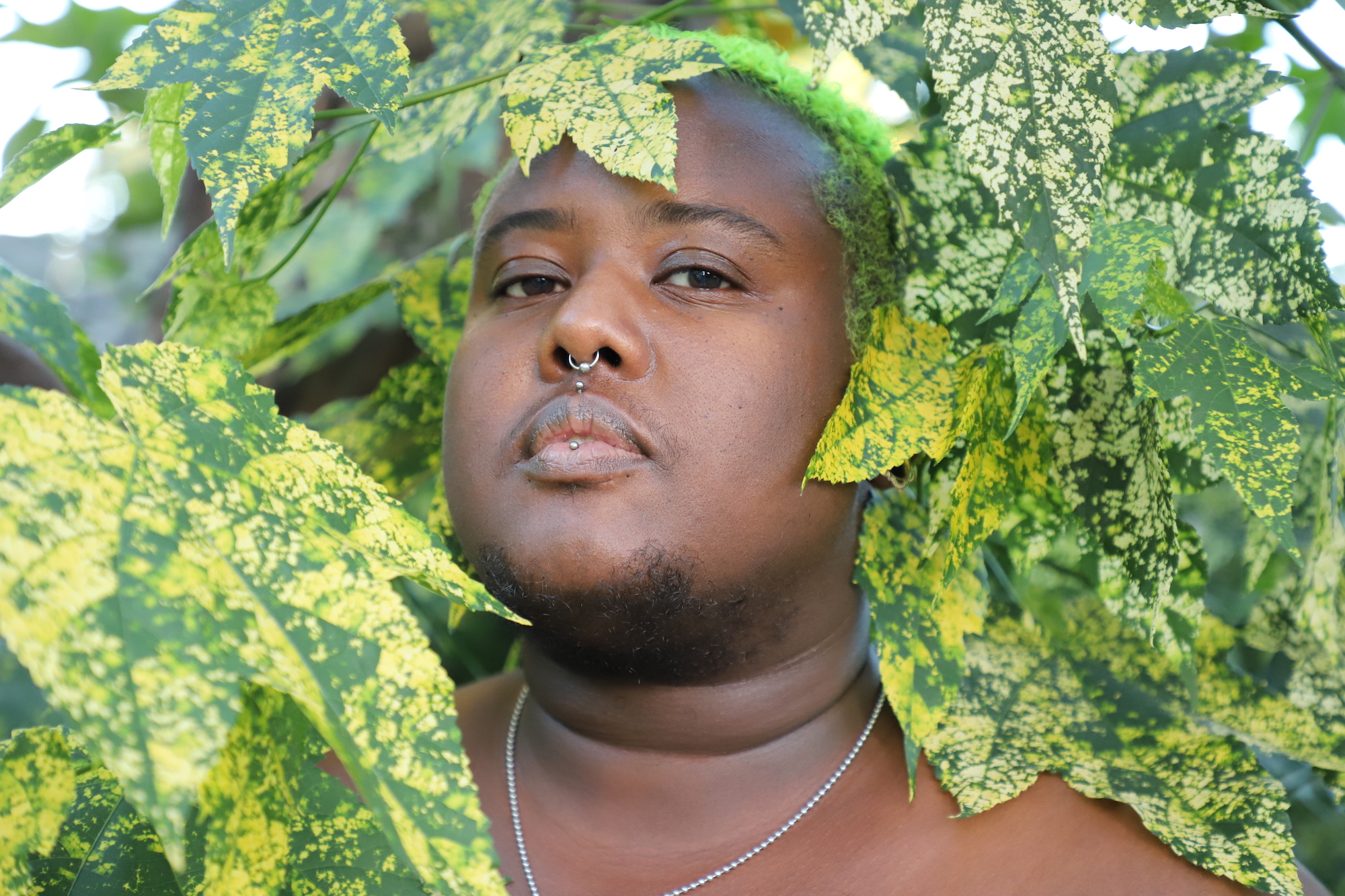
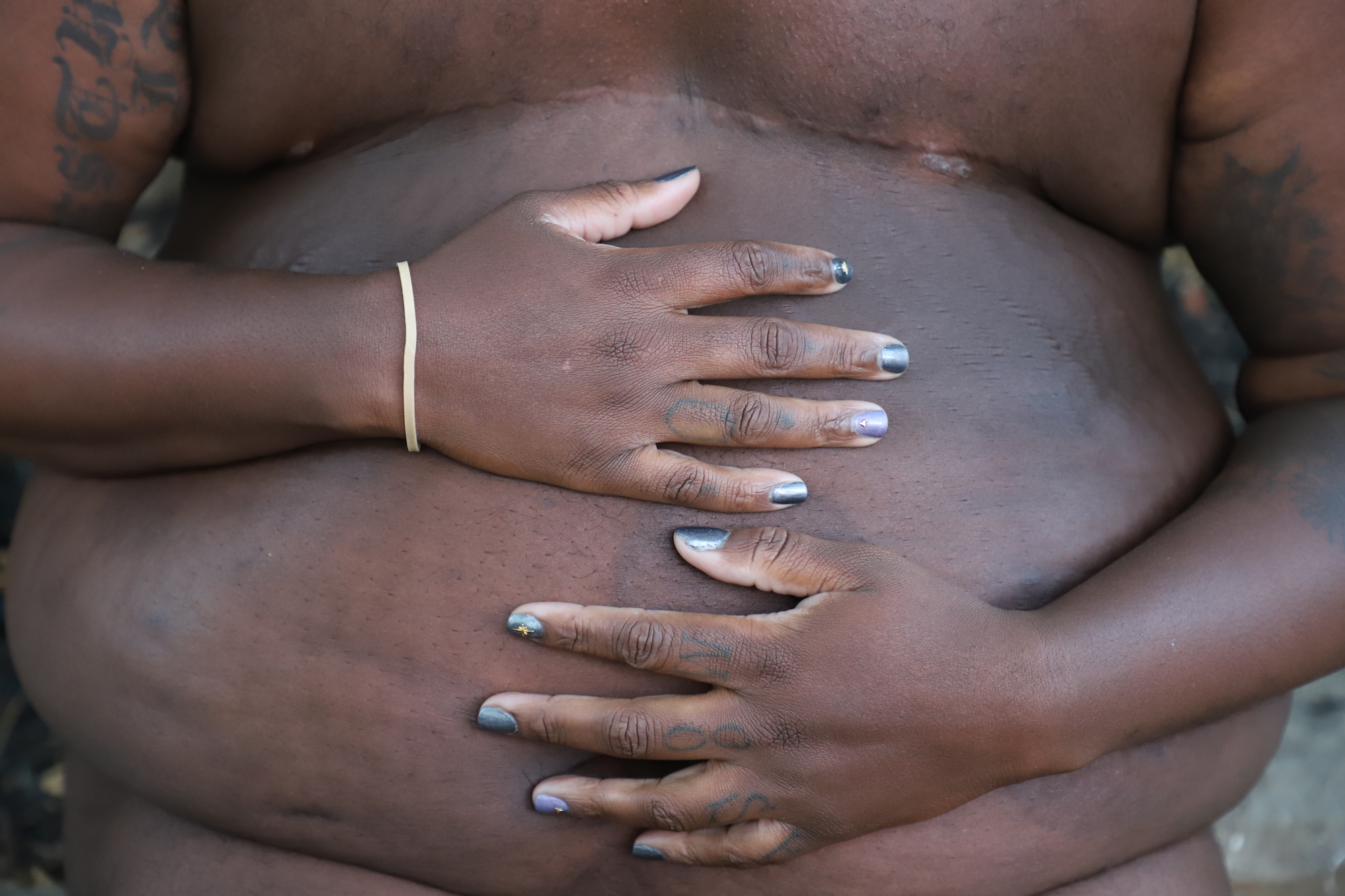
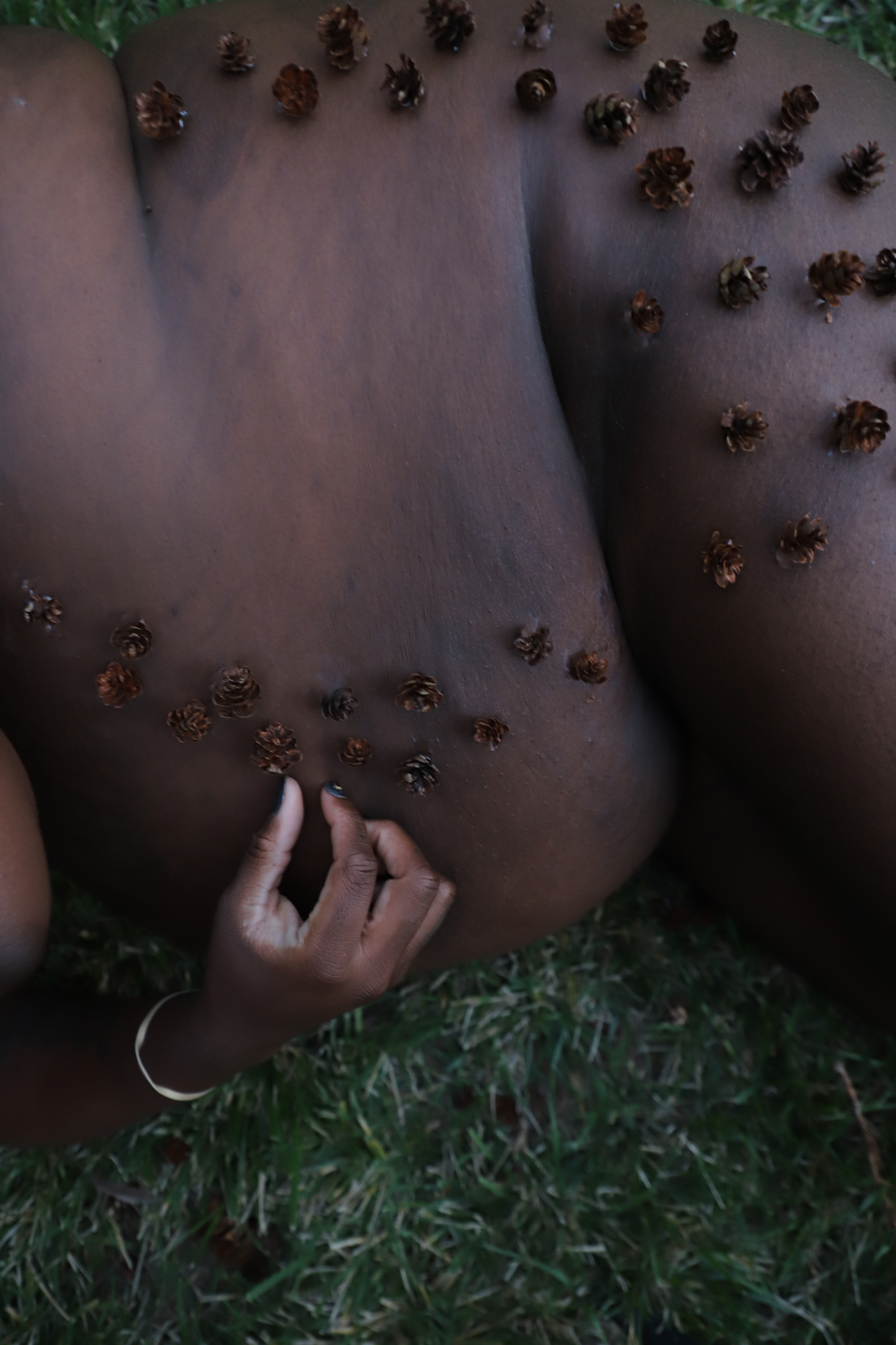
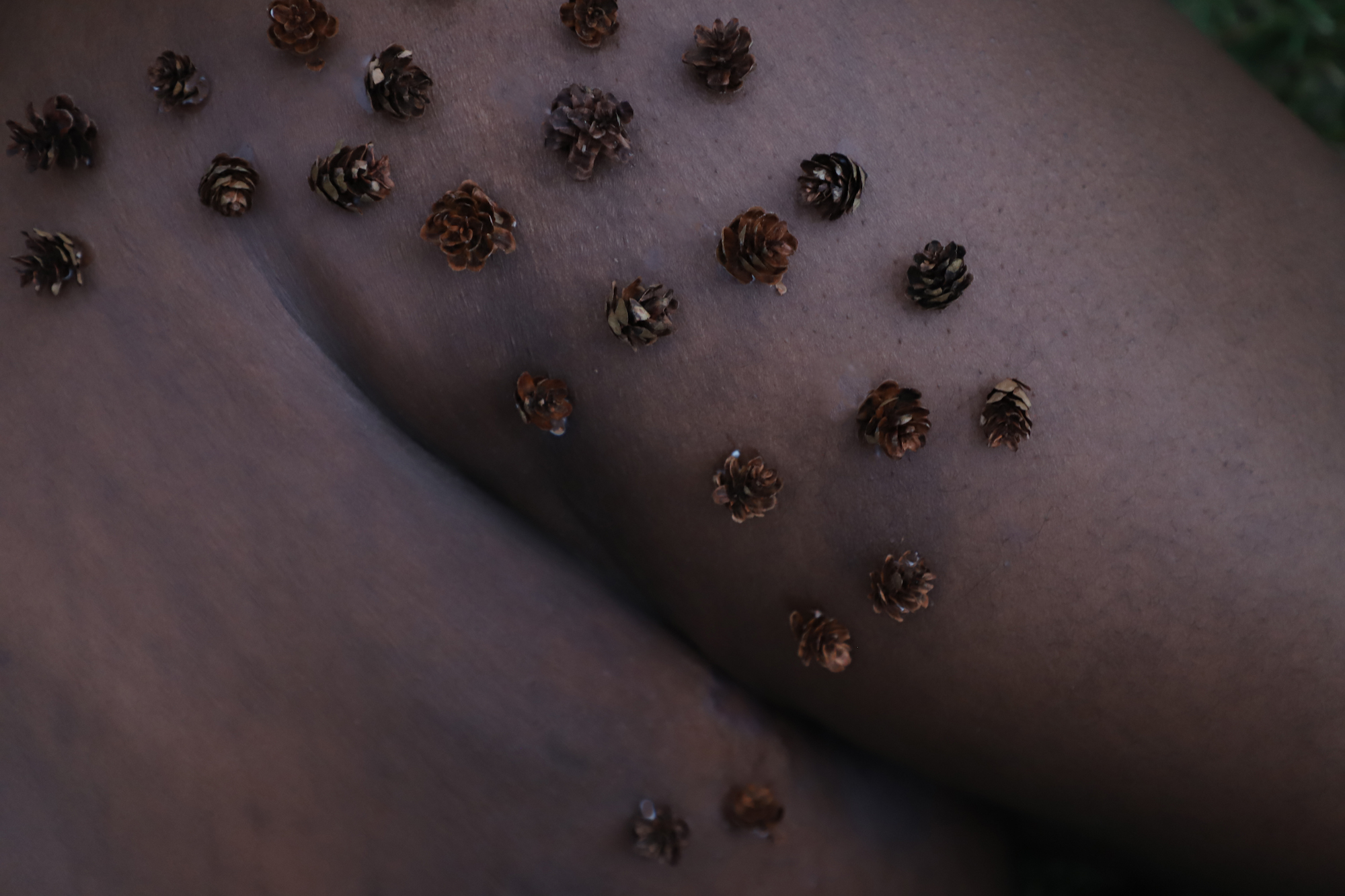
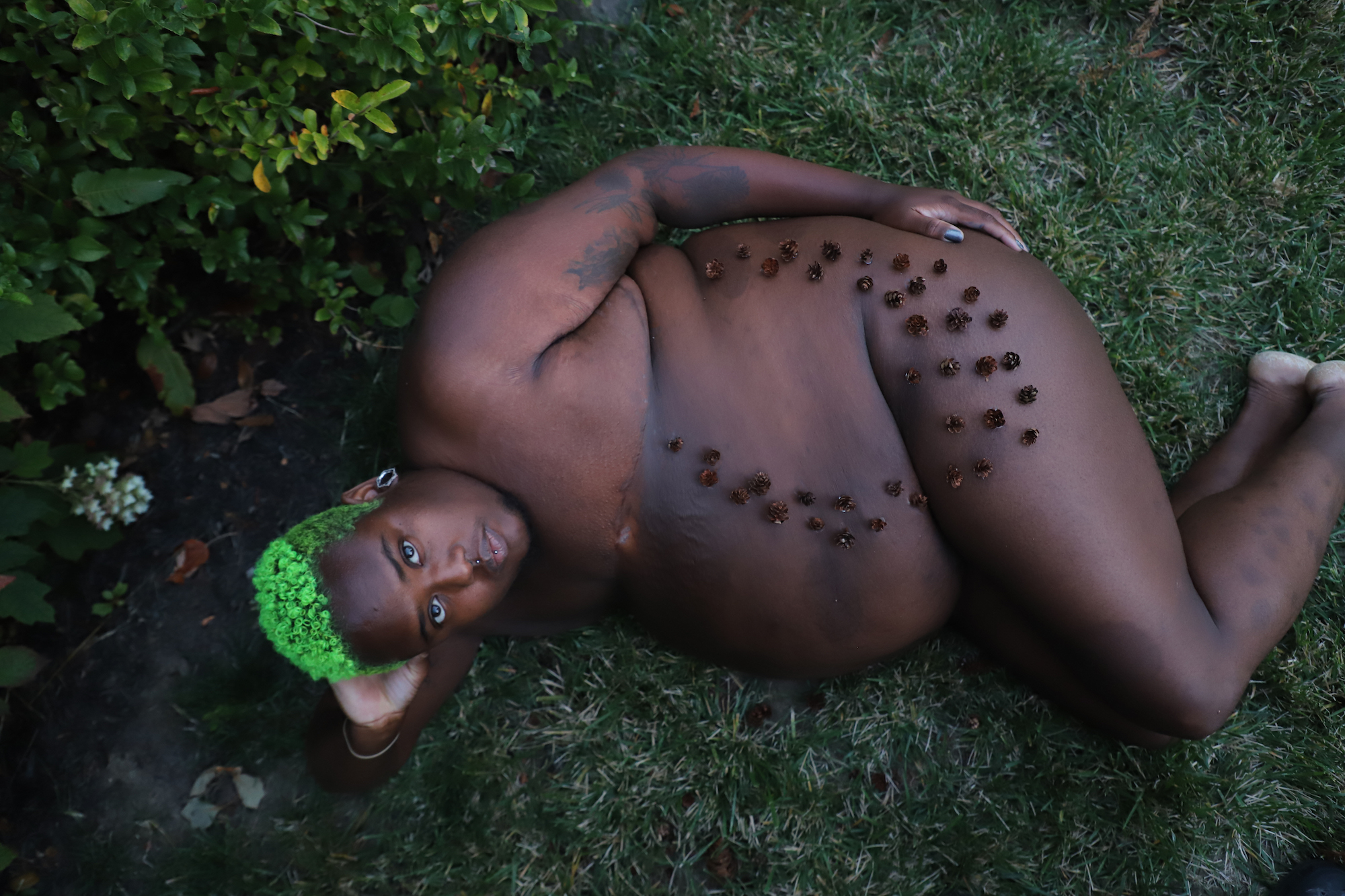
An Interview with Zaire
Shoog: What does being Southern mean to you in terms of how you think about your identity and how other perceive you?
Zaire: Whenever I think about being a Southerner, I always notice this split in my identity. I haven’t been in the South for almost 10 years now and I deeply miss it. I think I felt more settled in my identity in a lot of ways back home in North Carolina, and in a lot of ways I knew I could never exist in a way that would feel comfortable or true to who I am or my values there.
When I first moved the West Coast I intentionally stopped using my accent. I never stopped using it out of shame; I was just exceptionally annoyed with how many people would laugh in my face after I would say something and then ask me to repeat it for their amusement. But that act right there, of completely changing the way I talk, altering my own voice, to exist in a state of false comfort around others, is what stands out most to me. At the time I would have completely denied that that was what I was doing but in retrospect, it’s the bare-bones truth. And once I acknowledge that, that’s where the splitting I mentioned occurs, because I notice these parts of myself that I love intensely, like my accent (that I’ve since stopped hiding), that I suppressed to exist outside of my home. But also what is home if I can’t be who I truly am?
There are so many identities that I have that conflict with each other and I’m constantly in this process of reconciling them. I’m also going to be honest and say that I’m never sure how others perceive me anymore. I exist in this space where I have to be hypervigilant for my own safety and it’s completely overwhelming. Being black, queer, fat, Southern, uneducated, gender non-conforming all overlap in these very intense ways that often mean I’m not sure if someone is staring at me because they’re falling in love (out of fetishization) or planning my murder.
Often times I don’t know what people are seeing when they look at me until they open their mouths to label me as a thing; this process of constant dehumanization, erasure, and fetishization has been traumatizing in itself, in addition to the ways that I hide/have hidden and destroy/have destroyed parts of myself, makes it almost impossible for me to trust anyone’s perception of me because more than likely, even if they get to experience parts of me, it’s still only parts of me and never my full identity.
S: Are there places and/or people you have found safe haven in/around? I know for me I wouldn’t be alive if it was not for my friends who make me feel like my existence is important and crucial. How do you find relief?
Z: I think the safest space for me is typically my bedroom! But there are definitely times I feel safer in queer freak/slut spaces – but I’m still always on edge.
Queers aren’t as radical as they think. There are numerous ways that I see white queers replicating oppressive dynamics and refusing to have a more nuanced view on things. Social climbing is everything to a lot queers so you have a lot performative allyship with no actual actions behind it. You know like, the irony of being called a nigger in front of someone with a Black Lives Matter shirt just goes over so many queers’ heads.
If you’re not popular in queer spaces you really gotta pray that your survival never depends on the queer community. Like the number of black trans women I see fundraising for survival is ridiculous, especially when you think of the number of queers saying things like “protect trans women at all costs” but really what I see is protect them unless it inconveniences you; and really if I have explain the ways black queers and black trans women are left behind in queer community protection that just means people aren’t paying attention. Ignorance is still bliss, even within our queer spaces and I don’t trust that queers can get it together anytime soon.
The most relief I find is among a small handful of people I call friends and in bed with my dog. I don’t trust people easily and I’m always protecting my heart. My mental health is really a combination of a lot of things, growing up poor and black and in the South meant I experienced a lot of things at a very early age that could quite possibly break a lot of adults but that was normalized for me. Coming out of that and realizing that my experience wasn’t typical for a lot of people was shocking and heartbreaking and infuriating. Honestly there’s a lot of generational trauma and mental health issues within black families that no one talks about, we just don’t address it because we can’t, we have a bill to be paid, we gotta find a way to put food on the table, we gotta find a way to take care of a rotting tooth. We’re so focused on basic survival that focusing on mental health is a “white folk problem” you know. Like wellness is such a foreign concept to us we associate it with a different race.
It’s definitely been hard surviving in this body with all these identities I hold. I remember being depressed as a kid. The first time I heard “Bag Lady” by Erykah Badu, I cried because I knew that would be me. I was maybe 11 years old. Which is just like wow, how much baggage can an 11 year old hold to hear a song like that and be reduced to tears?
I can barely hold down a job, I can’t hear compliments without wanting to retreat into my shell, I’ve stayed in shitty relationships, I’ve allowed myself to be abused, I’ve been abusive, maintaining housing is a constant struggle, people are genuinely surprised when I’m knowledgeable on something and all of these things are just like a snippet of things that I carry with me and mental health is a constant uphill battle. I’m not even sure if wellness in terms of my mental health is a thing I strive for – I really just want to be okay. I want to feel okay.
My goal is to grow and to not leave this realm the same person I’ve been for so many years. I want to love myself, I want to be a better communicator, I want to identify my toxic behaviors and rid myself of them, I want to experience something truly good and believe that I truly deserve to experience goodness without feeling guilty.
S: What were you thinking going into the photo shoot? Were you excited or nervous? How was the whole experience for you in terms of being seen? And how did you feel about the results from the shoot? What do you see when you look at the photos? What emotions come up for you, when you see yourself shining? And how do you think that it has brought your attention to your beauty?
Z: When I contacted you about a shoot the things most heavy on my mind were all the ways that I’ve been slowly trying to destroy myself. I started secretly trying to kill myself when I was 12. I was a cutter until I was 21 and had the worst breakdown of my life. At some point in middle school I was gaining weight and a family member decided to stand me in front of a mirror and ask me how I could be okay with what I saw and when I insisted that I liked what I was looking at (which was me), pointed out everything “wrong” with my body.
I couldn’t be in front of a mirror up until a few years ago and that was only to catch a glimpse of my outfit or something. Almost 20 years later and I still couldn’t look myself in the eye and was only beginning to accept that I have an eating disorder (which I’ve had since I was 12). I was in a relationship, that was very damaging to both my ex and I, for almost seven years. We broke up a little over a year ago and I’m still finding ways that being in that relationship impacted me and my relationship with myself.
So I came to you in a state of exhaustion with all these things that have been weighing on me for so long and I wanted to find a way to celebrate myself. I’ve been having more days where I catch myself in a thought process that I’m finally able to interrupt and reframe in a way that feels conducive to growth. I’ve been having days where I catch myself in the mirror and I finally feel comfortable saying, “Goddamn! If you ain’t one sexy unicorn!” I’m moving towards these spaces I want to be in, slowly, but I’m still moving. When I’d seen your photography before I’d noticed that the energy I feel when I look at your photos is an overwhelming sense of contentment. Genuine celebration and genuinely being present in that moment, and I knew that I needed that for myself to move to my next phase of healing. Which is wild because I avoided cameras for so long for the same reason that I avoided mirrors.
I was definitely nervous as all hell when we met but I immediately trusted you and felt comfortable. I didn’t know what to expect from the process but I felt good the entire time. It’s kinda wild to me cause I’ve never seen pictures of myself that genuinely make me feel beautiful and these photos are just, wow. I saw them and I was like how on earth…! I think surprisingly I feel this overwhelming sense of grief. Almost like, I can’t believe this is who I’ve been trying to destroy for 31 years. It’s so rare for me to be able to see any good things about myself and when I look at these pictures I’m like oh yeah! And I can suddenly list all these good qualities I appreciate about myself. The shoot brought me home to myself.
S: Why do you think it’s important to document bodies like your own? Why is it important to share stories like yours?
Z: I don’t think black bodies are celebrated enough, at least rarely in ways that aren’t tokenizing or fetishizing. I don’t think black women’s bodies are celebrated enough, especially ones that don’t fit this hyper-sexualized, ultra femme, super curvy – slim in waist, thick ass and thighs – mold. I rarely see a celebration of bodies like women’s bodies like mine: big bellied and flat assed. Or a celebration of black genderless bodies that aren’t masculine or thin or look like they belong to models. I have an “I have my own chicken and waffles recipe” kind of body, an “It’s Tuesday and I’m too tired to go on” kind of body, a “Yes I do wake up early and make biscuits and gravy from scratch when I’m in a good mood” kind of body, a “Sometimes I can’t get out of bed because the pain is too intense” kind of body. I have a body that is all these things that we aren’t taught to do anything with but hide.
In the summer as a kid I knew to stay out of the sun too long so I wouldn’t be blue-black when the school year rolled around but fuck that, now I lay in the sun butt ass naked as often as I can.
Who’s ever celebrated a fat kid from the South whose only relationship to gender is the deep internalization of what it means to be a poor black woman from the South? Who’s ever celebrated a genderless freak with psoriasis scars the size of small dinner plates? Who’s ever celebrated that one that got out of being a Jehovah’s Witness as soon as they could? Who’s ever celebrated people who have nightmares every night and still wake up fighting to try/trying to fight? Who’s ever celebrated that little black girl still alive inside of them waiting for someone to show them a real kind of love? And not romantic love but what it really means to be held and supported and cared for and believed in.
I think that’s why it’s important to document bodies like mine and to share stories like mine. Because no one else will. No one is gonna push to give us a voice, to make sure we’re seen or heard. I guarantee there’s another little me out there needing to see this and maybe she or they won’t right now, but eventually she or they will.
I agreed to do this interview to mark the end of a very long time period of my life. Completing this interview marks the official death of me trying to destroy myself and the birth of the phase in me where I celebrate everything I was I taught to destroy.
Also, this is for that black, country ass, fat freak child struggling to find anyone or anything that resembles them: I hope you find this and know that there’s another side to all of this.
Artist’s Statement from Shoog:
When viewing these images I hope people keep in mind that this is a collaboration. I do not own or lay claim to these images. I could not have created this work without Zaire being an open participant in this art. As a white artist, I do not claim to own images that I co-create with black and brown folks, and if I make money from these images I do so with their permission, and we split the money evenly. This is a strict policy I have for myself to attempt to leverage some of my privilege as a semi-successful white artist living in a country that values my life and success more than a lot of my friends and peers. Folks who want to donate to Zaire’s GoFundMe for their and Spiky’s medical care can do so here.
Trapped At Birth
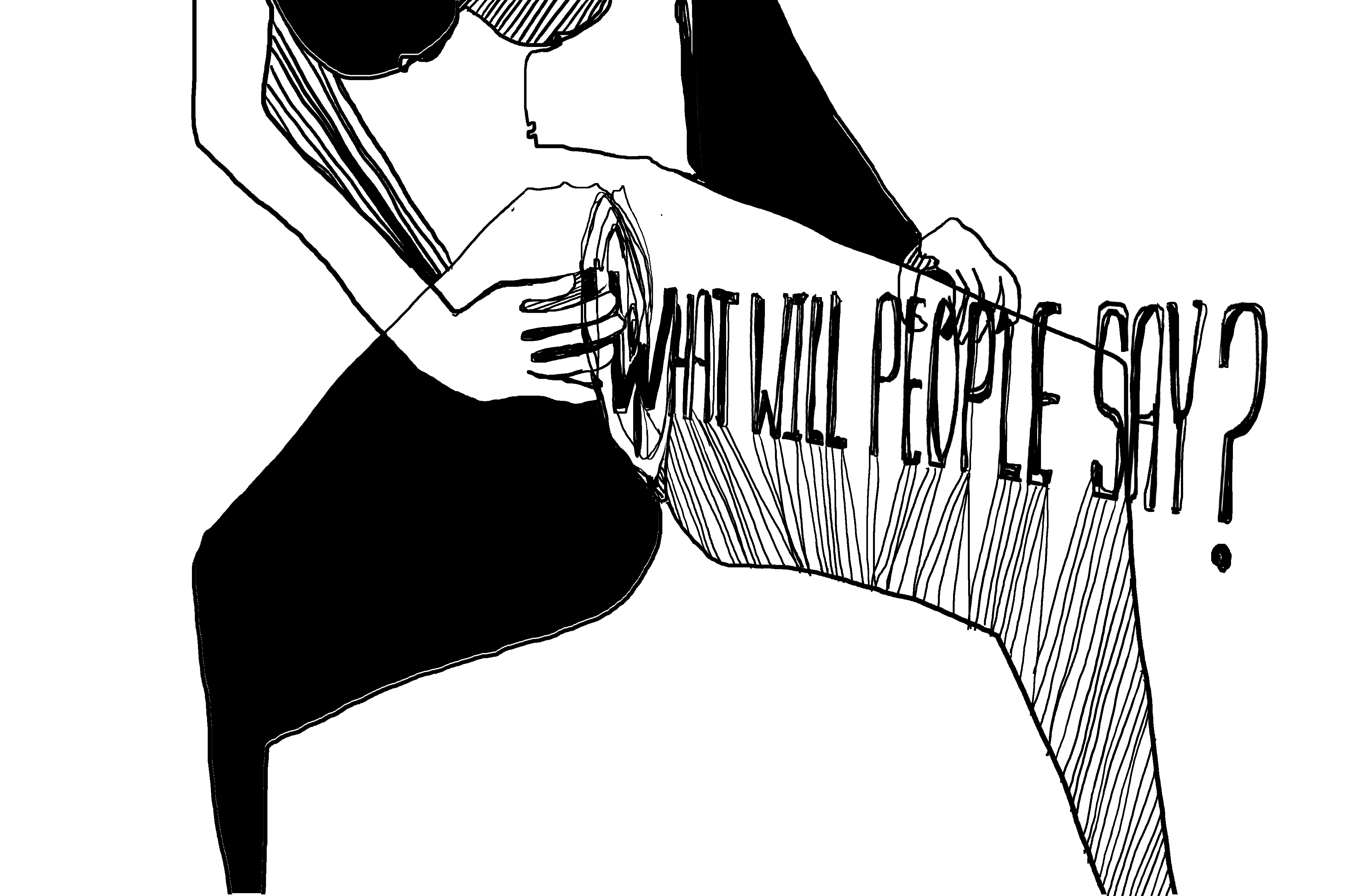
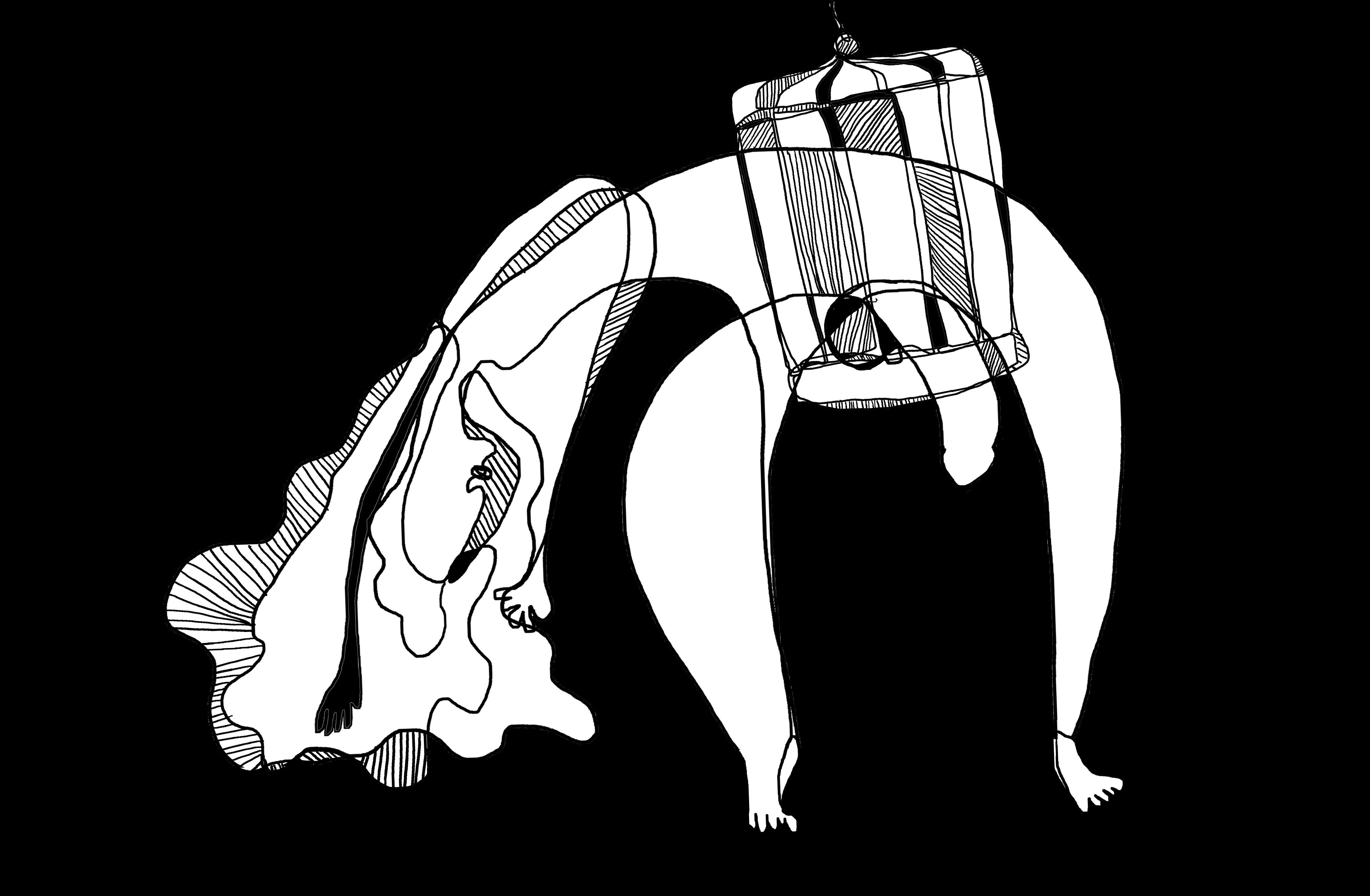
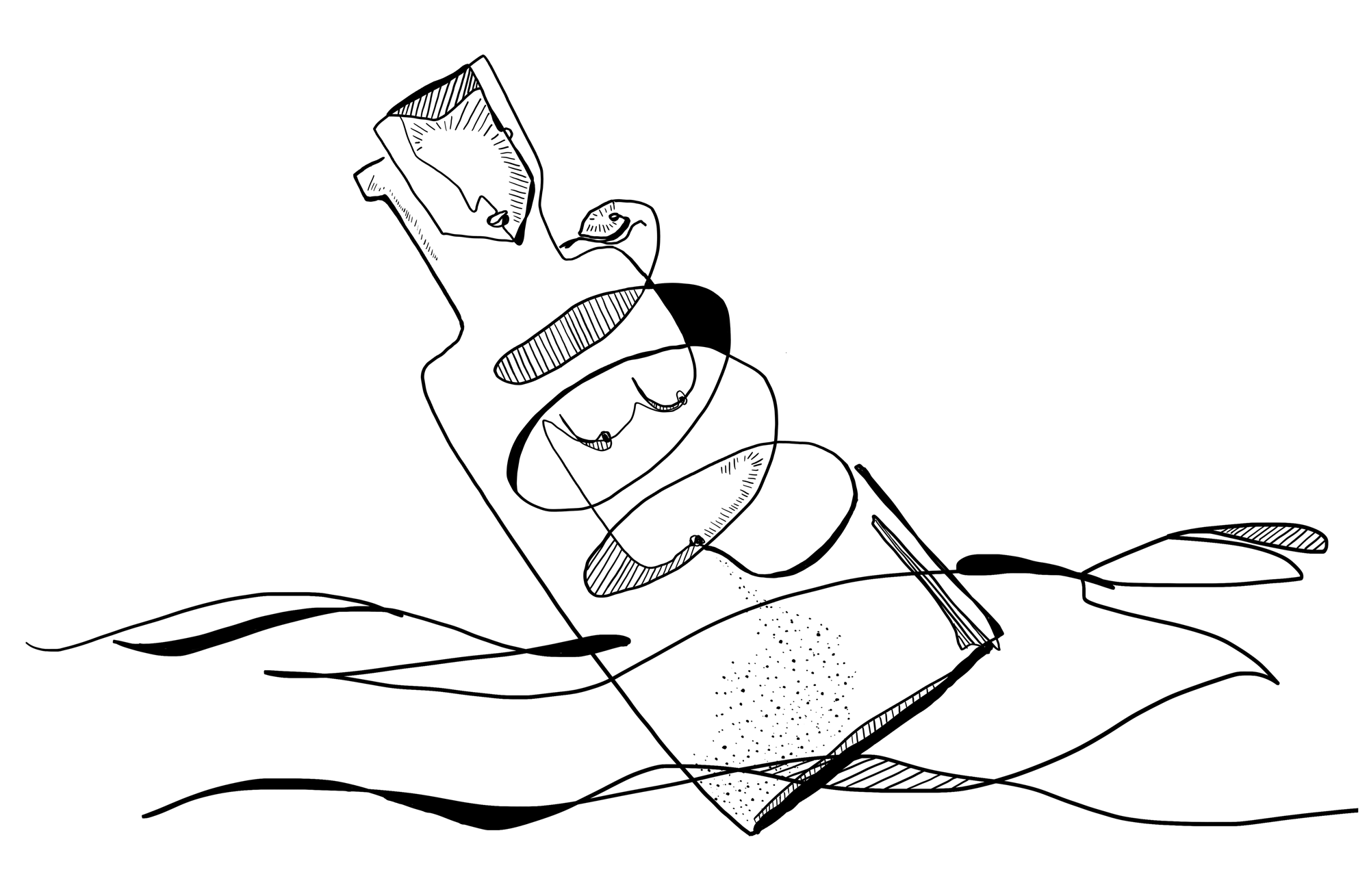
Trapped at Birth is part of a bigger series, The Human Trap. I want to express the struggles we face because of labels, names, gender, sexuality, narratives and more of what we’re born into in this world. I’ve been publishing parts of the project’s folds in various contexts, whether we’re talking about borders and alienation published in a New York-based online magazine or gendering migration done in collaboration with a MENA-directed journal for body and gender research. I just put my pen down and let my experiences, feelings and stories (mine and others) take the lead in one-line drawings. One-line drawings to me shows the most authentic level of the story I’m trying to tell. Once I commit to illustrating something, I’m letting go so that this story comes out naturally. It’s therapeutic. 🎈
For Your Consideration: Devastating Art When You’re Devastated
Welcome to For Your Consideration, a new series about things we love and love to do — and we’d like to give you permission to embrace your authentic self and love them too.
Like church on Sundays for the first 18 years of my life, I now go to the Met on Fridays as if it were a ritual, without even having to think about it.
It happened by accident. I came out of therapy one day in Chelsea somewhere, gasping for air, unsure of where to go or what to do. My friend said come to the Met, and I did. I walked over 60 blocks; through Times Square, a surreal and upsetting space to navigate during heightened emotions but alas I couldn’t bring myself to bury myself underground in the subway.
So I went to the Met one Friday and then the next and then the next. After long searching for one, I finally found a post-therapy routine that felt good.
(I’ve been in therapy twice a week for the past few months for reasons I’ll write about one day. But I’m not ready yet. I’m too… in it. It would feel like writing about drowning while drowning.)
After that first time, I realized that the Met was one of the only places in the city where I felt alive, one of the only places where it was possible to tune out everything and just exist — quietly, easily.
My friend once told me that therapy sessions could heal in the long run, but the immediate aftermath of a session often feels like opening a wound. “And then you’re just standing there bleeding,” she said. Exactly, I thought. Everyone should have a post-therapy routine for that reason, something to stop the bleeding.
And so, if you’re going to be emotionally raw for the rest of the day, why not surround yourself with devastatingly beautiful art to cauterize those wounds? I go to the Met to feel small and significant all at once. I feel anonymous there, but I also feel… meaningful. Like there’s a reason for me to be standing here, in this white-walled room that glows in natural light. The statues move me most. I still can’t believe that human hands can make curves and angles like this out of nothing more than stone.
In a brief and mostly inconsequential scene in the Netflix rom com Set It Up, a tourist asks Charlie if they should go to the Met. “Do you like beautiful art that makes you re-examine what it means to be human?” he asks. “Then, yeah, The Met’s worth it.” I’m not in the business of relating to or quoting male romantic leads in rom coms, but… I felt that.
For six weeks, I visited the Heavenly Bodies collection — the most popular costume collection that has ever been shown at the Met. It was worth the hype. Its meditations on religion, history, and modesty are complex and, yeah, spiritual. There’s scripture woven into this fabric, but there’s also a playful sense of humor.
The over-the-top fantasy clashing with rigid tradition in the Heavenly Bodies collection is, to put it in highly academic terms, a paradox that goes all the way off!!!! I don’t know how to talk about art at all, and it even intimidates me to tell someone I like a piece of art, because then I worry that they’ll ask why, and I’ll have to explain, and maybe I’ll sound like an art idiot. Fuck that! Wandering an art museum solo, silent, and slightly on edge is one of the best ways to do art museums. You can just let the art wreck you and not have to explain it to anyone.
Going to the Met in the midst of an emotional breakdown is a highly specific thing that I can’t very well recommend to everyone. But find your post-therapy trip to the Met. Figure out what it is that you can do to feel challenged yet grounded; inspired yet introspective. Maybe it’s an art museum or a gallery or a mural on the street. Take a moment to look at the art of others, to see the painstaking work that other people have done in their own heightened moments. Jot down what a piece makes you feel. It doesn’t have to be profound. It doesn’t have to be more than a word. Art grounds.
It’s okay to feel overwhelmed, but do it in a place that’s safe and allows for some fantasy. Art is the closest thing we have to time travel, so get away for a bit.
Anyway, here’s some art/fashion that has devastated me recently!
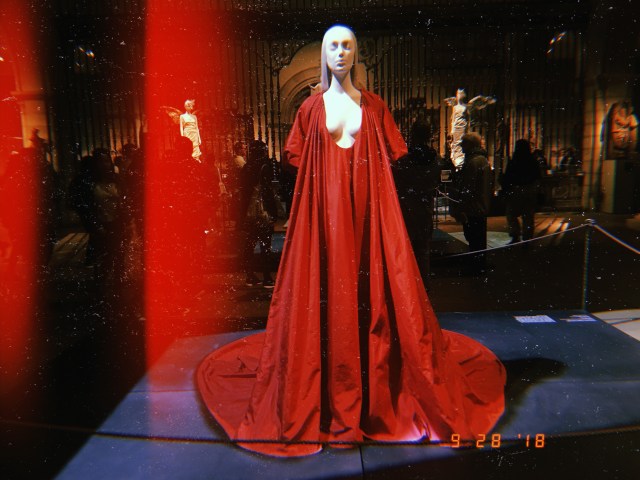
Around the third time I fell under this dress’ spell, I decided that if I were to ever wear a dress again in my life it MUST BE THIS ONE
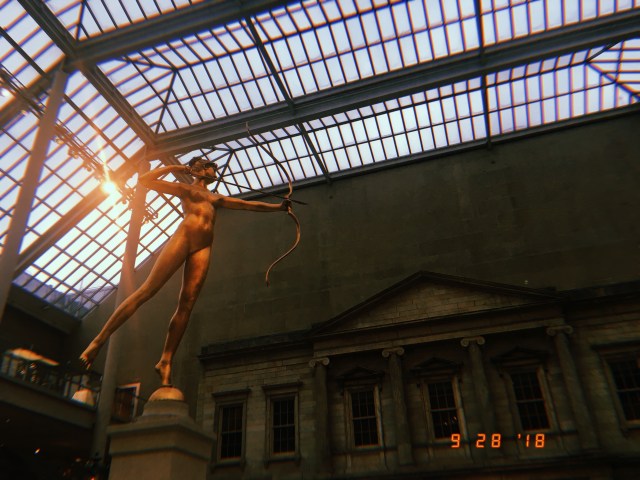
I love her
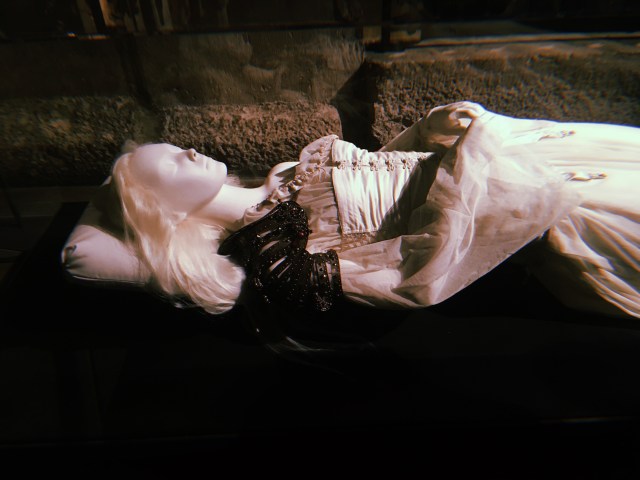
same
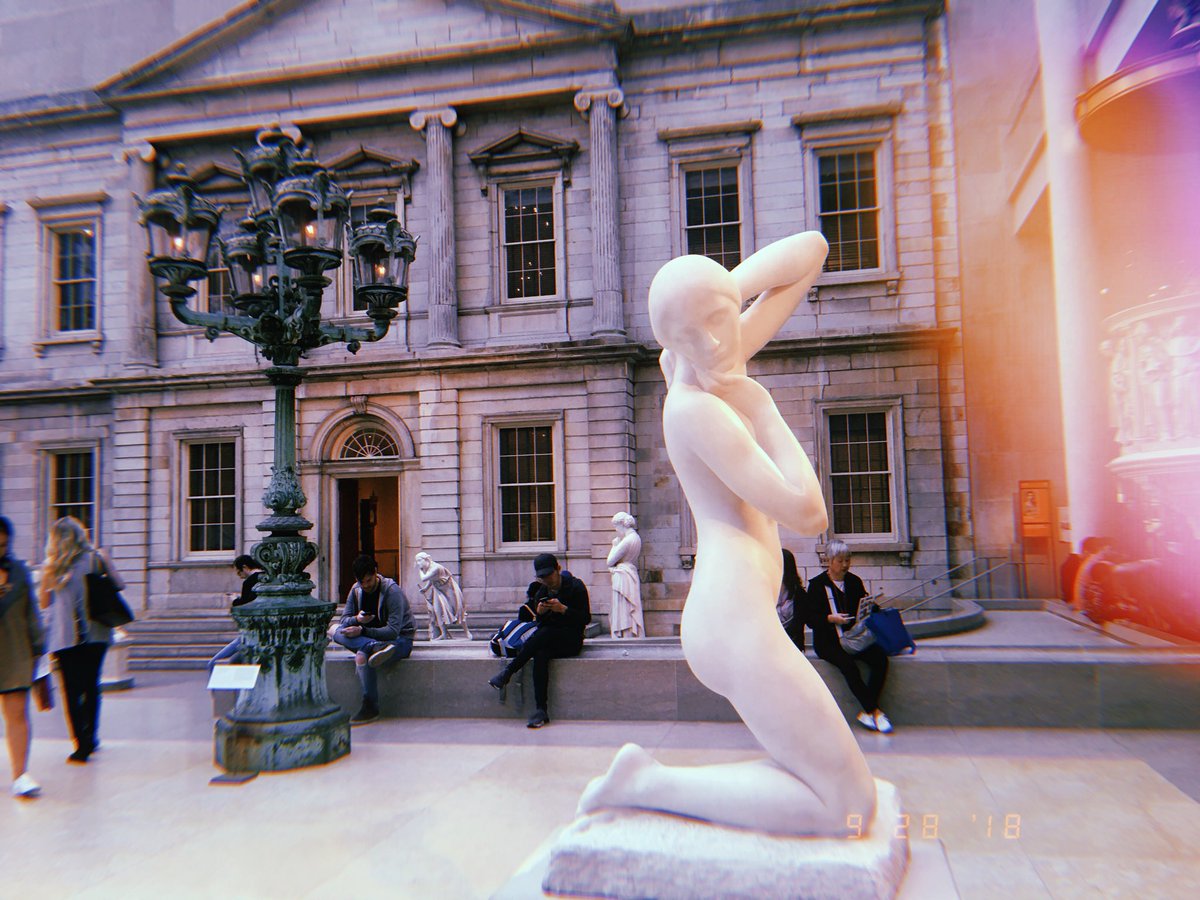
is she about to rip her own head off? mood!
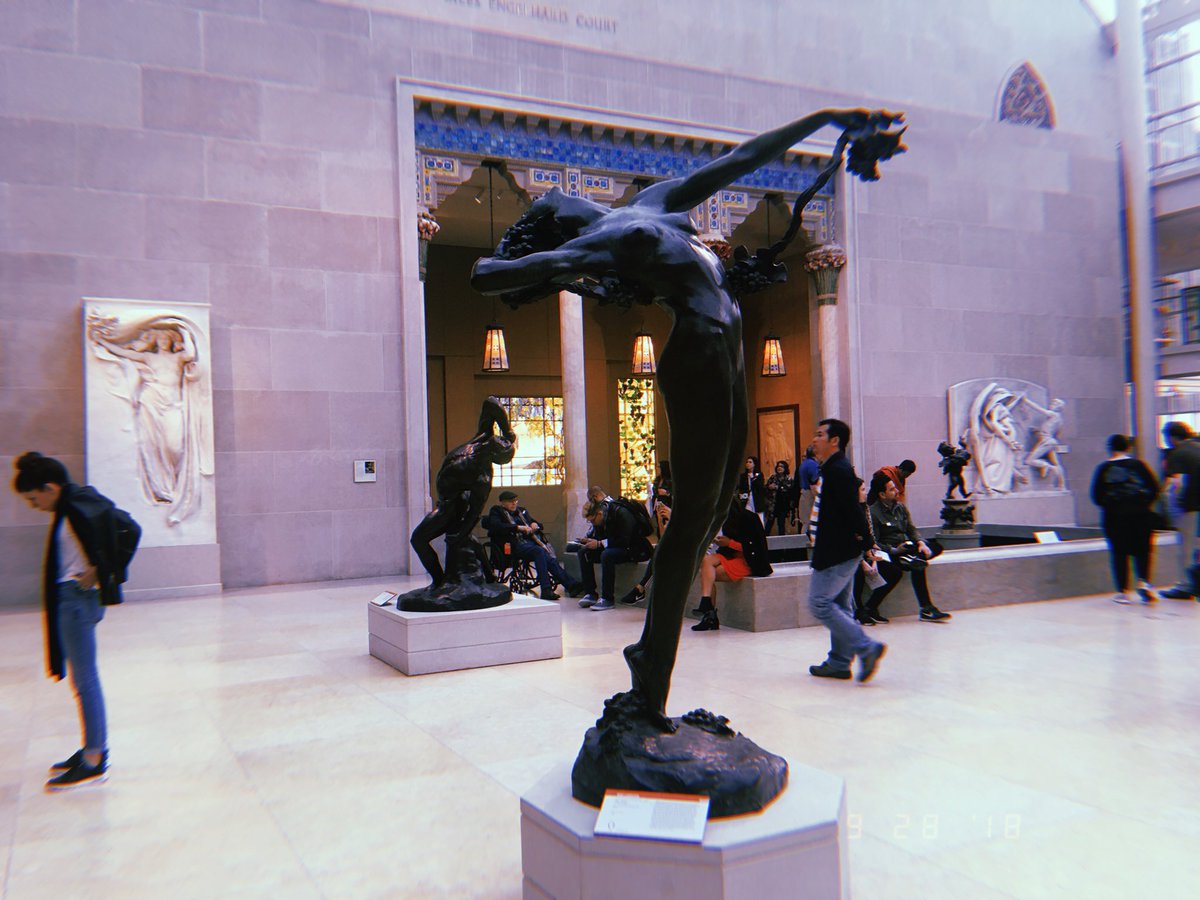
every statue at the Met is a mood
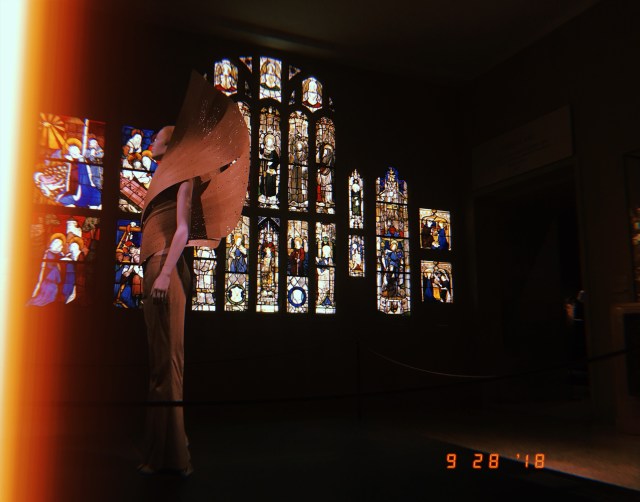
take me to church
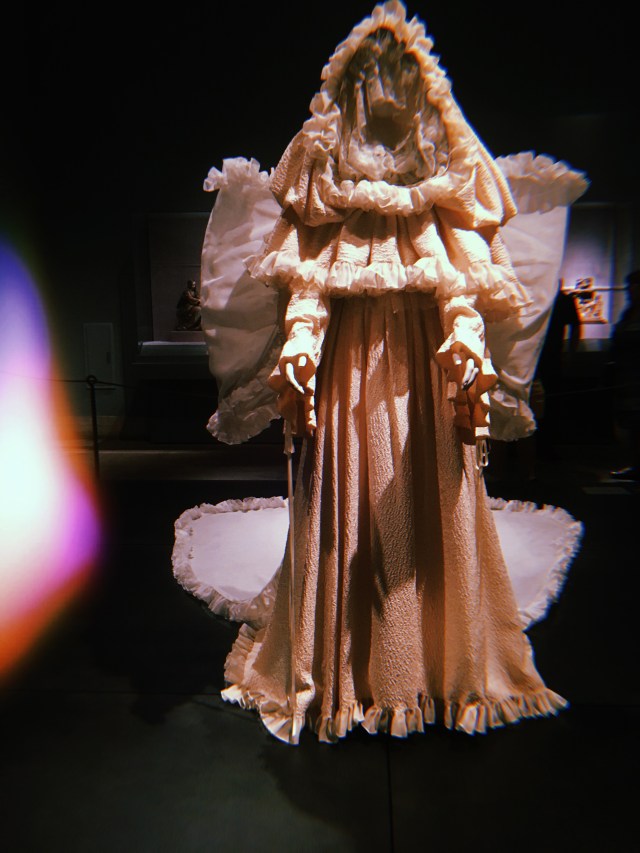
my spooky wife
PHOTOESSAY: Going Nowhere
When I think of being bad, I think of the little things that we’re not technically supposed to do but do it anyways, because life is about the little acts of defiance – it’s about breaking the rules just a little bit and having nights to remember.
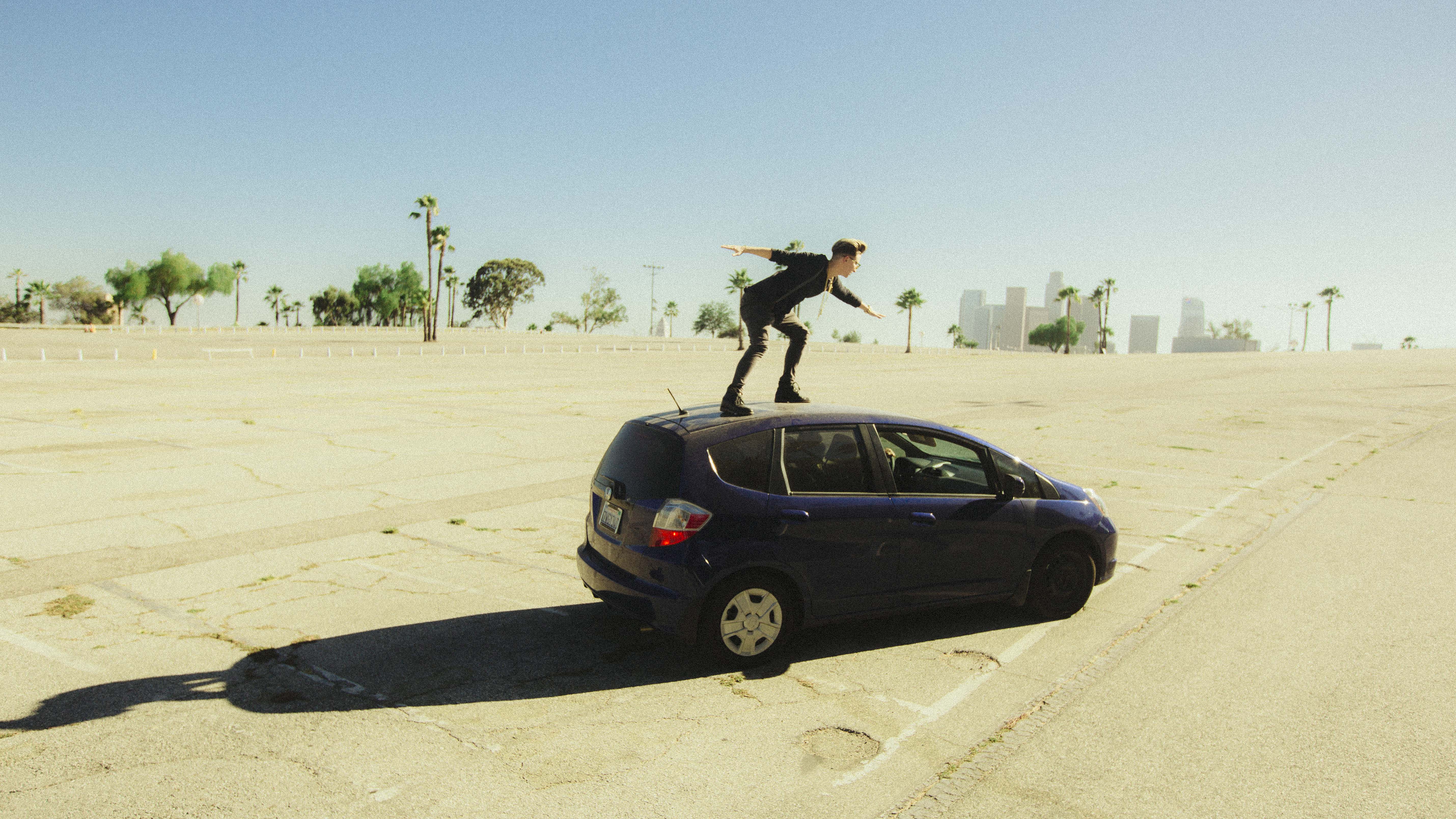

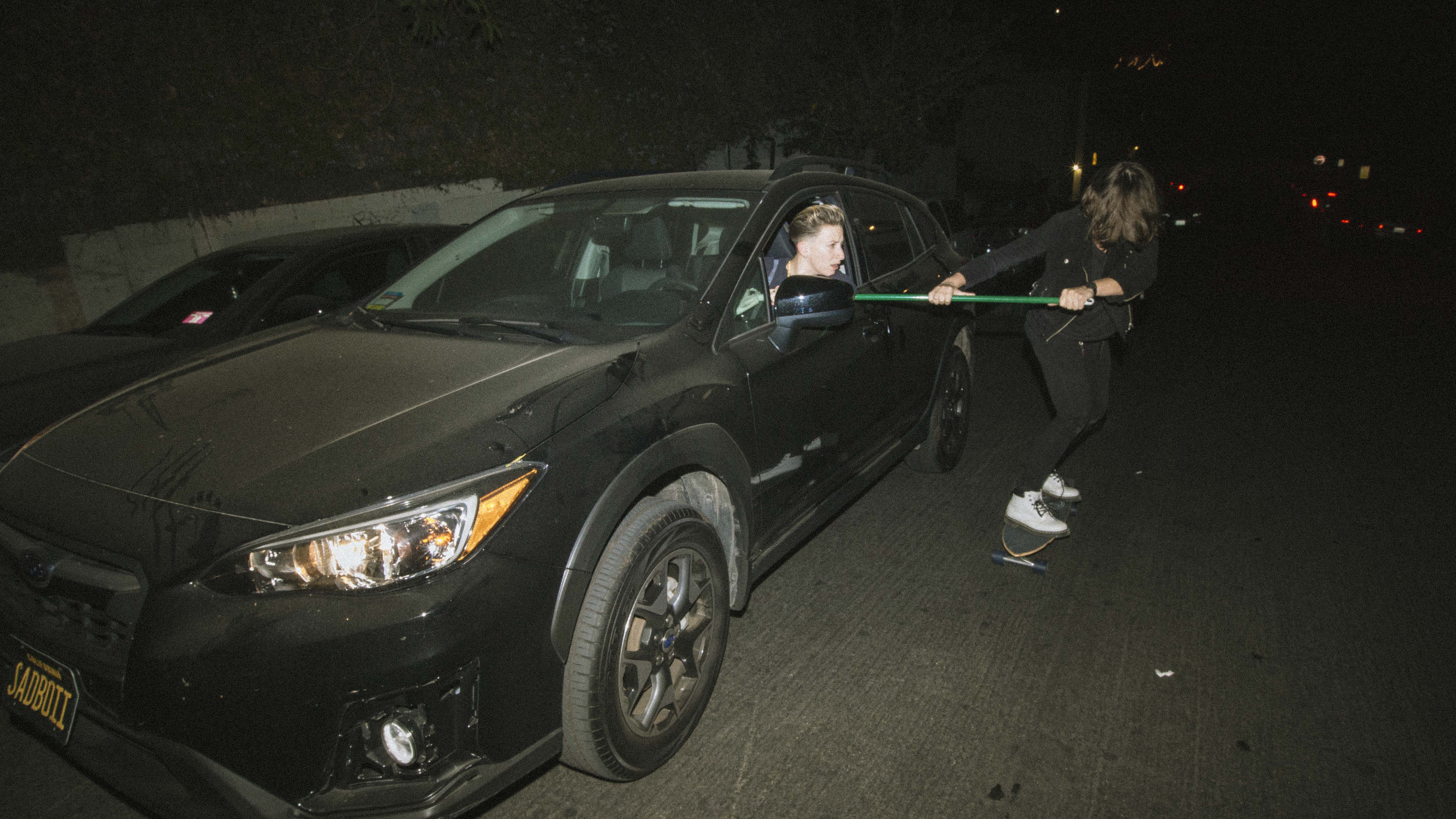
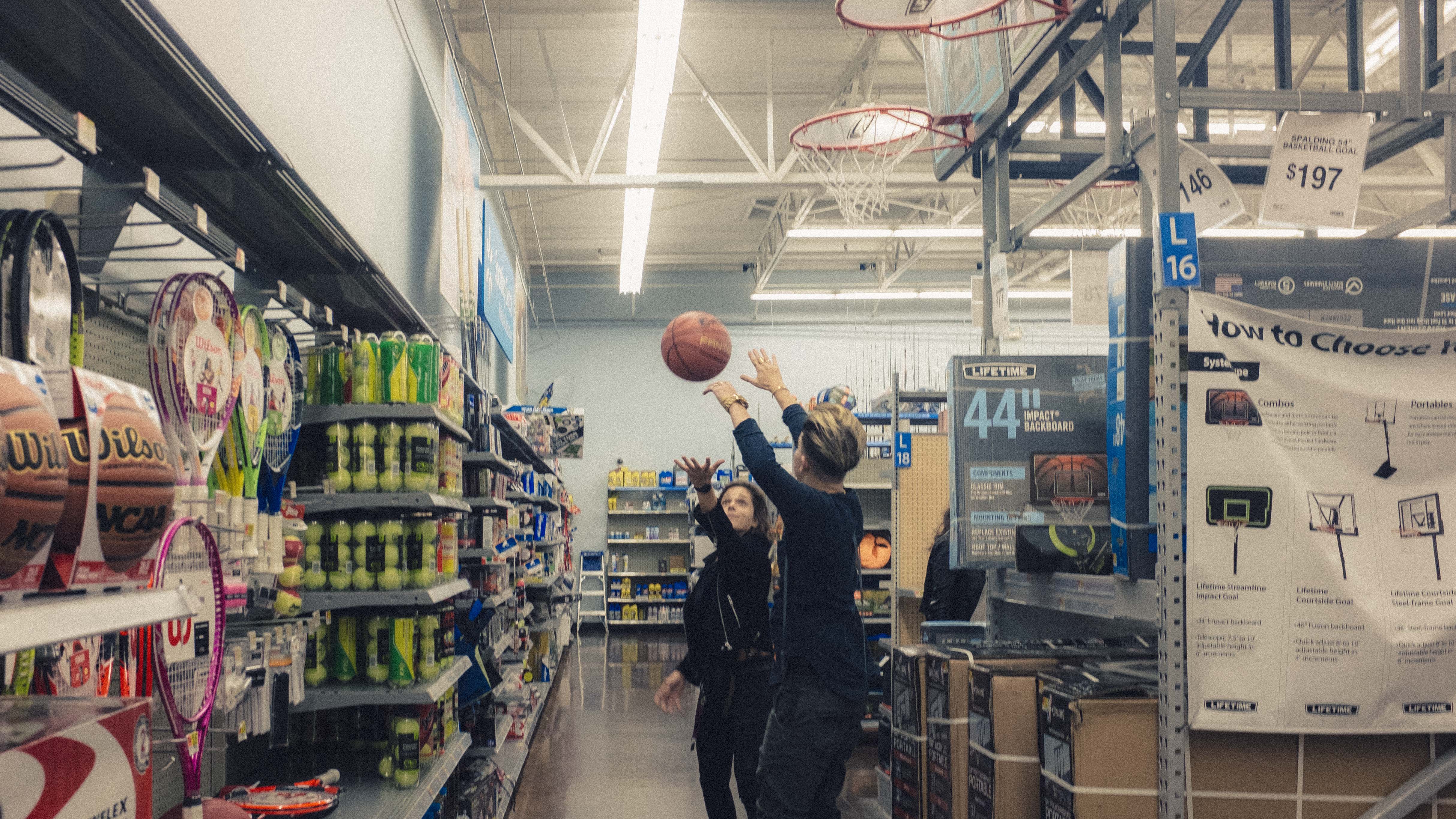

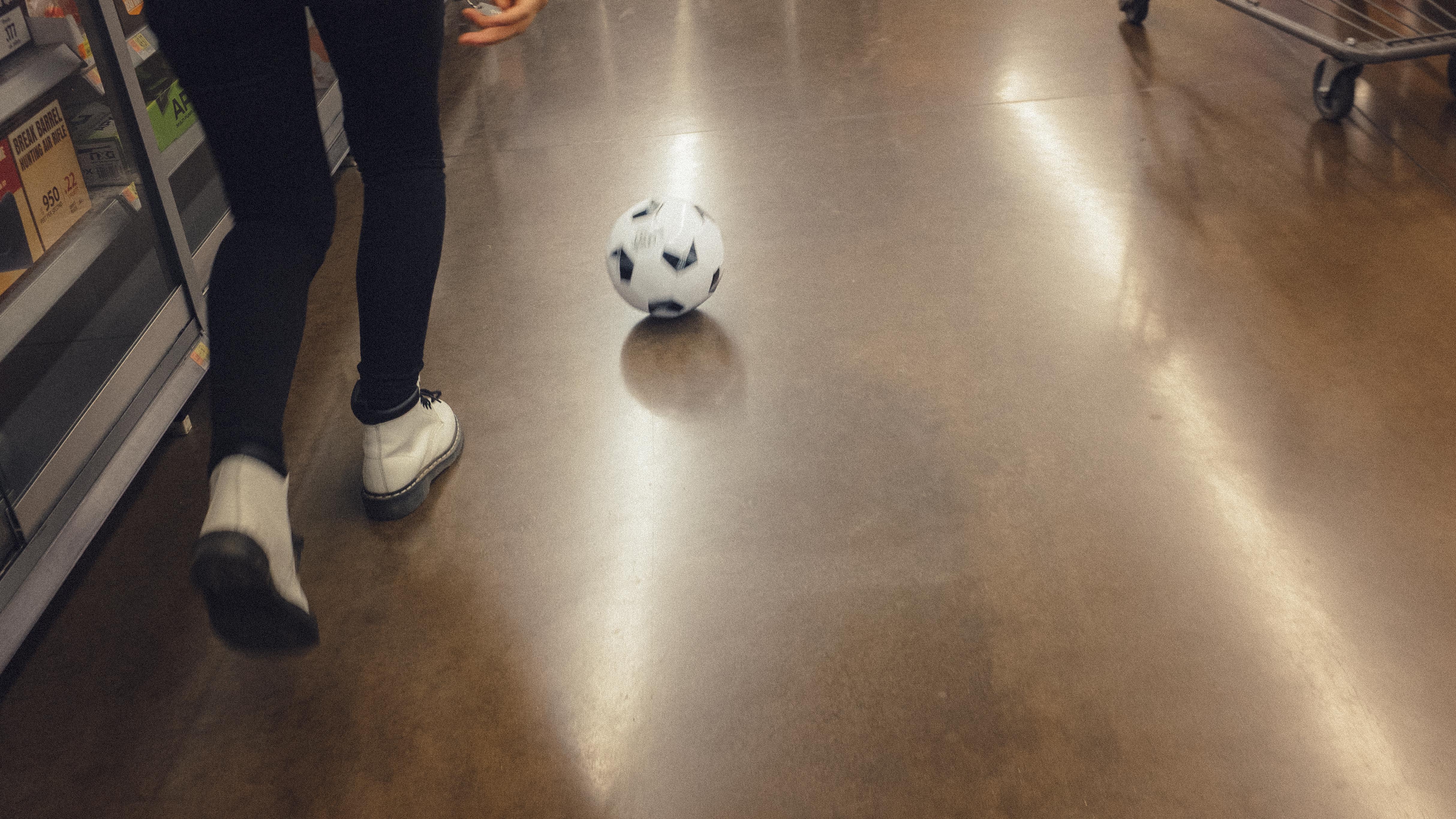

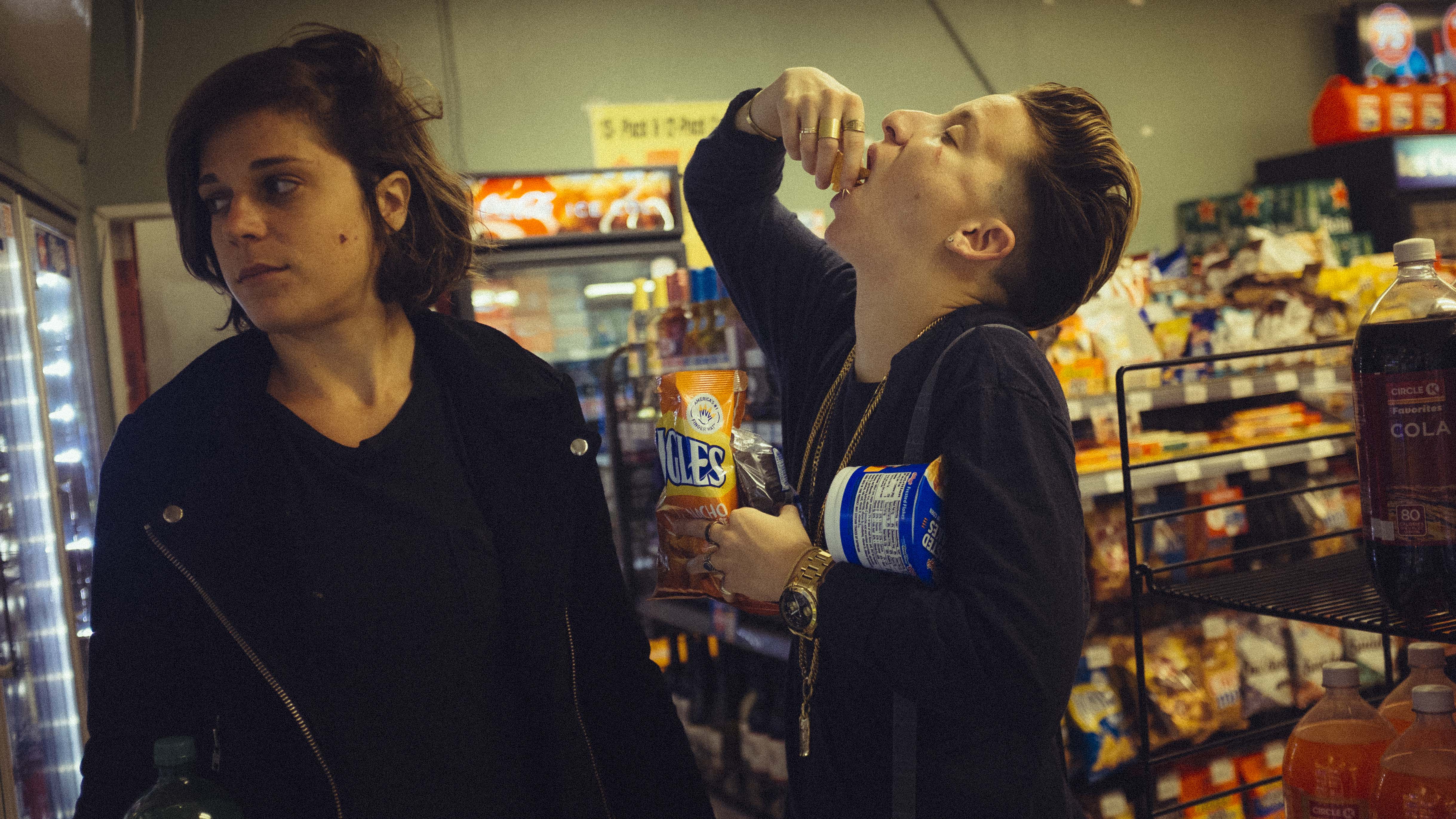
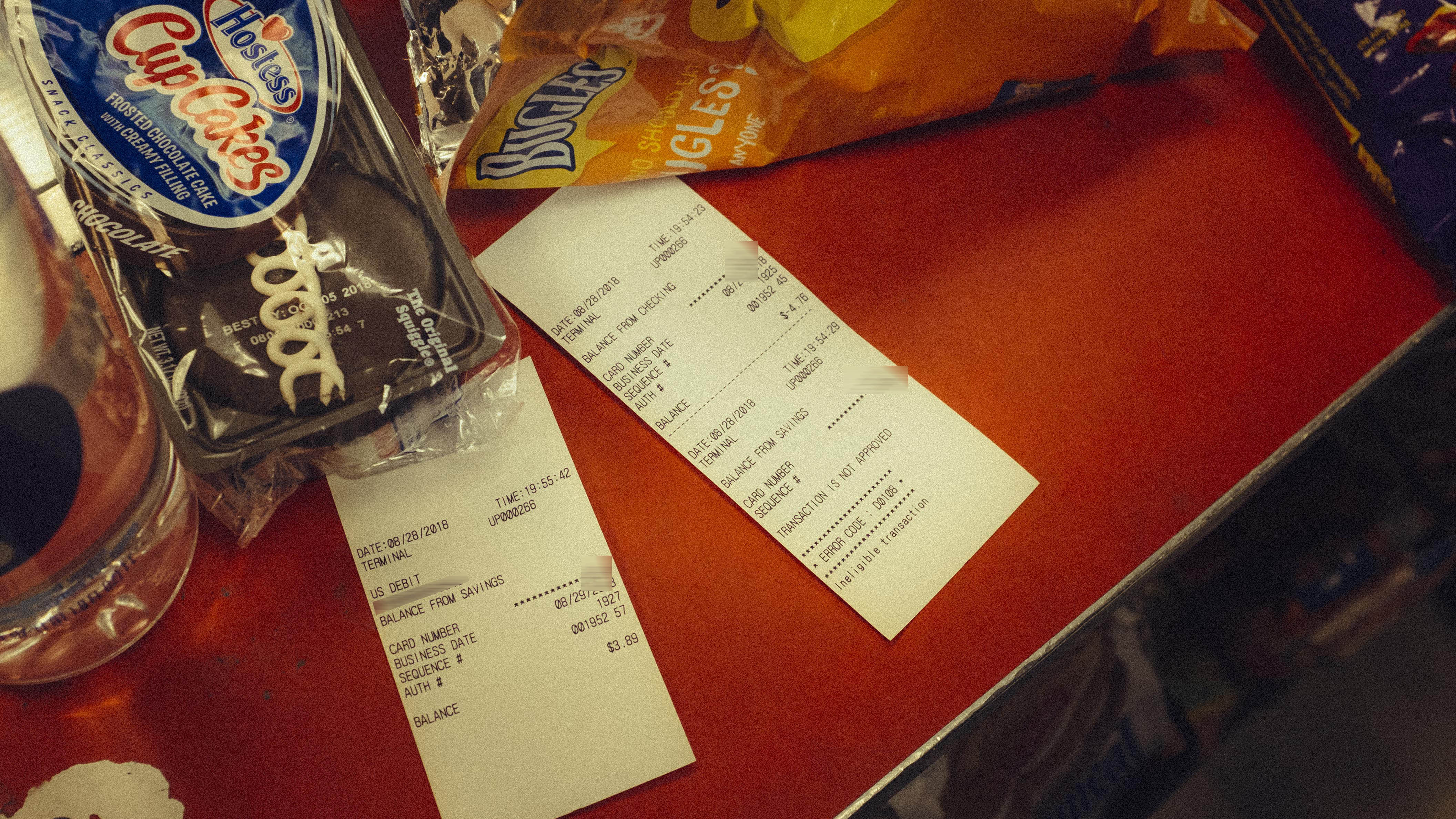
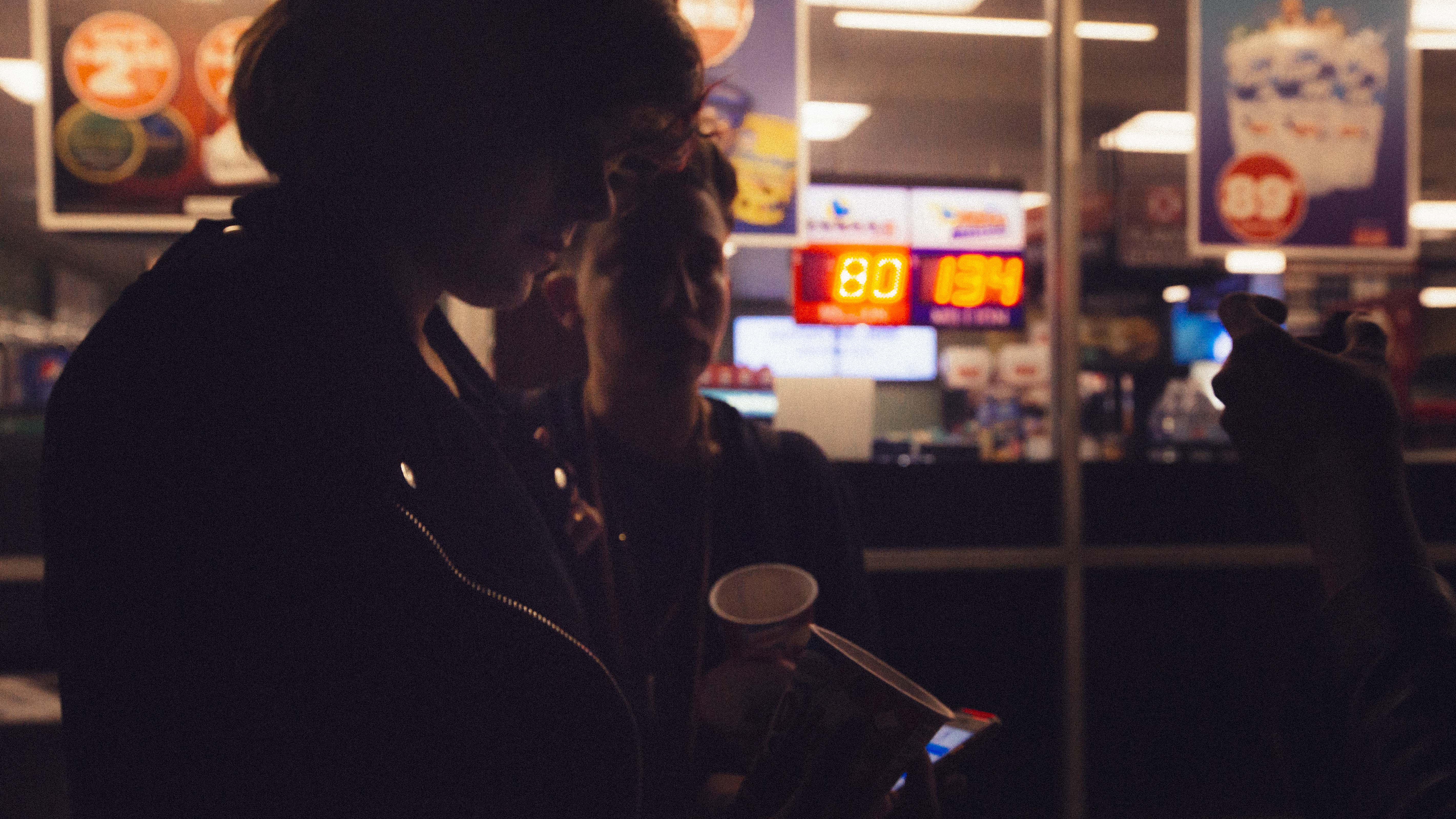
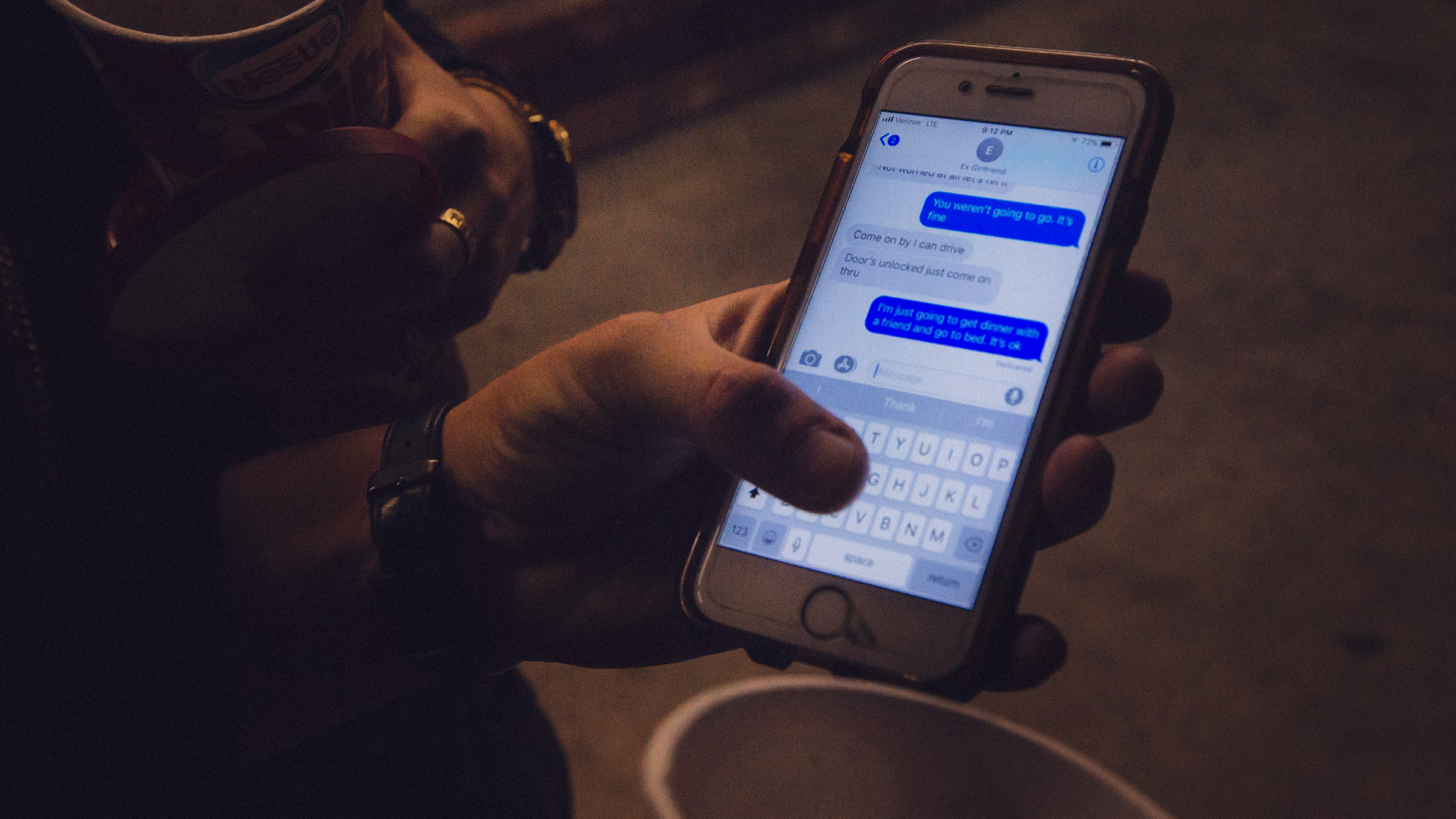
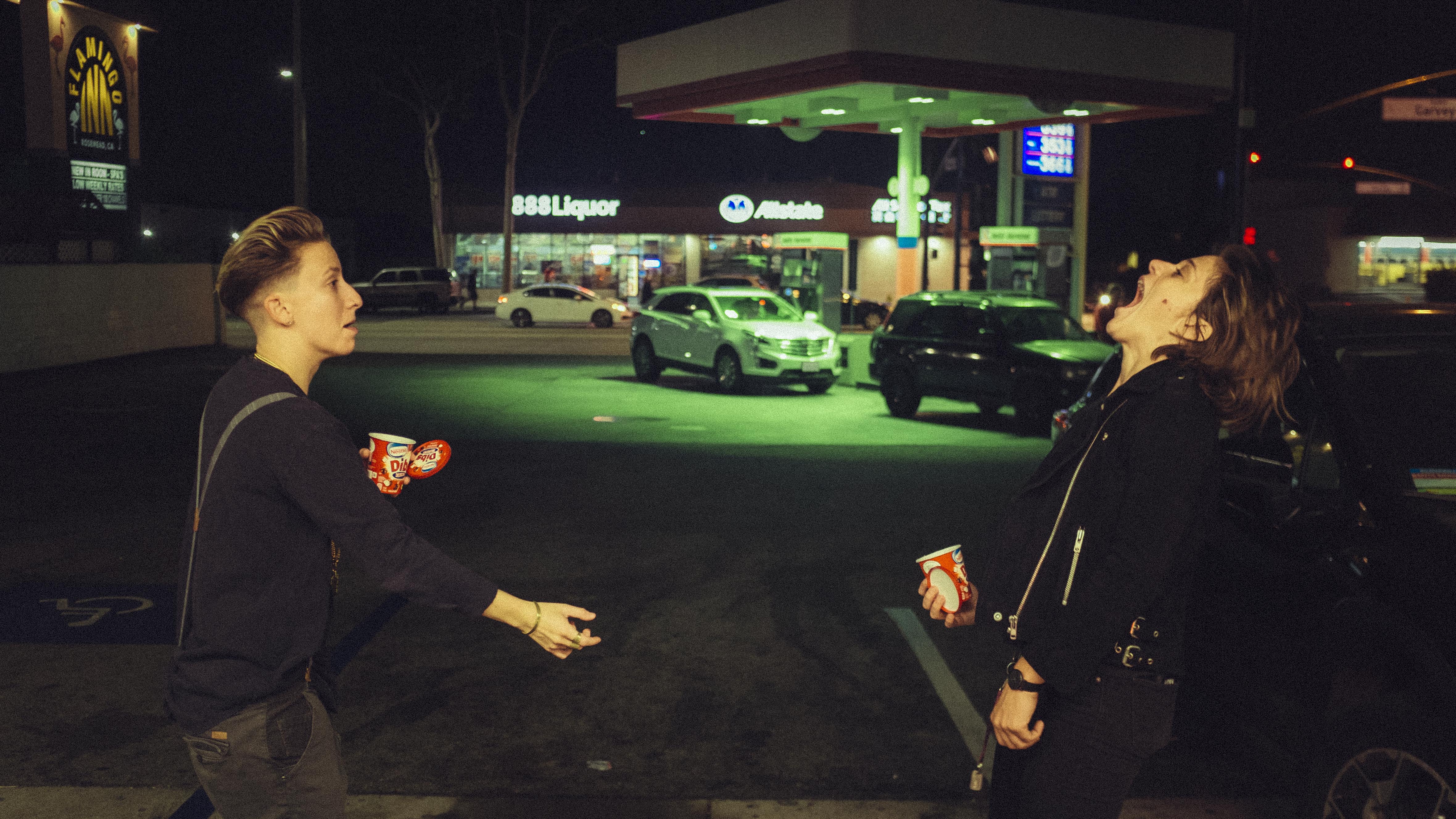
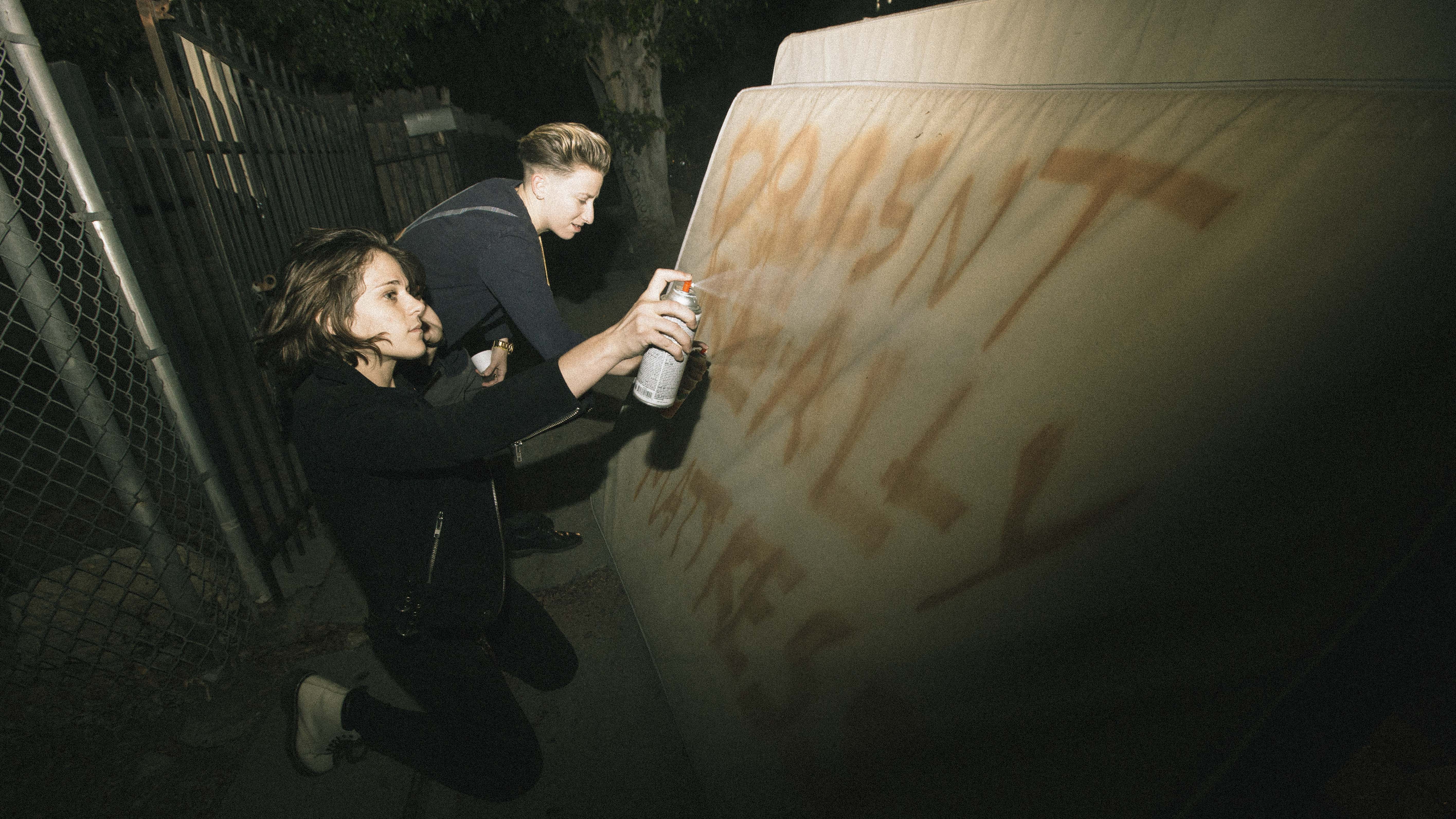
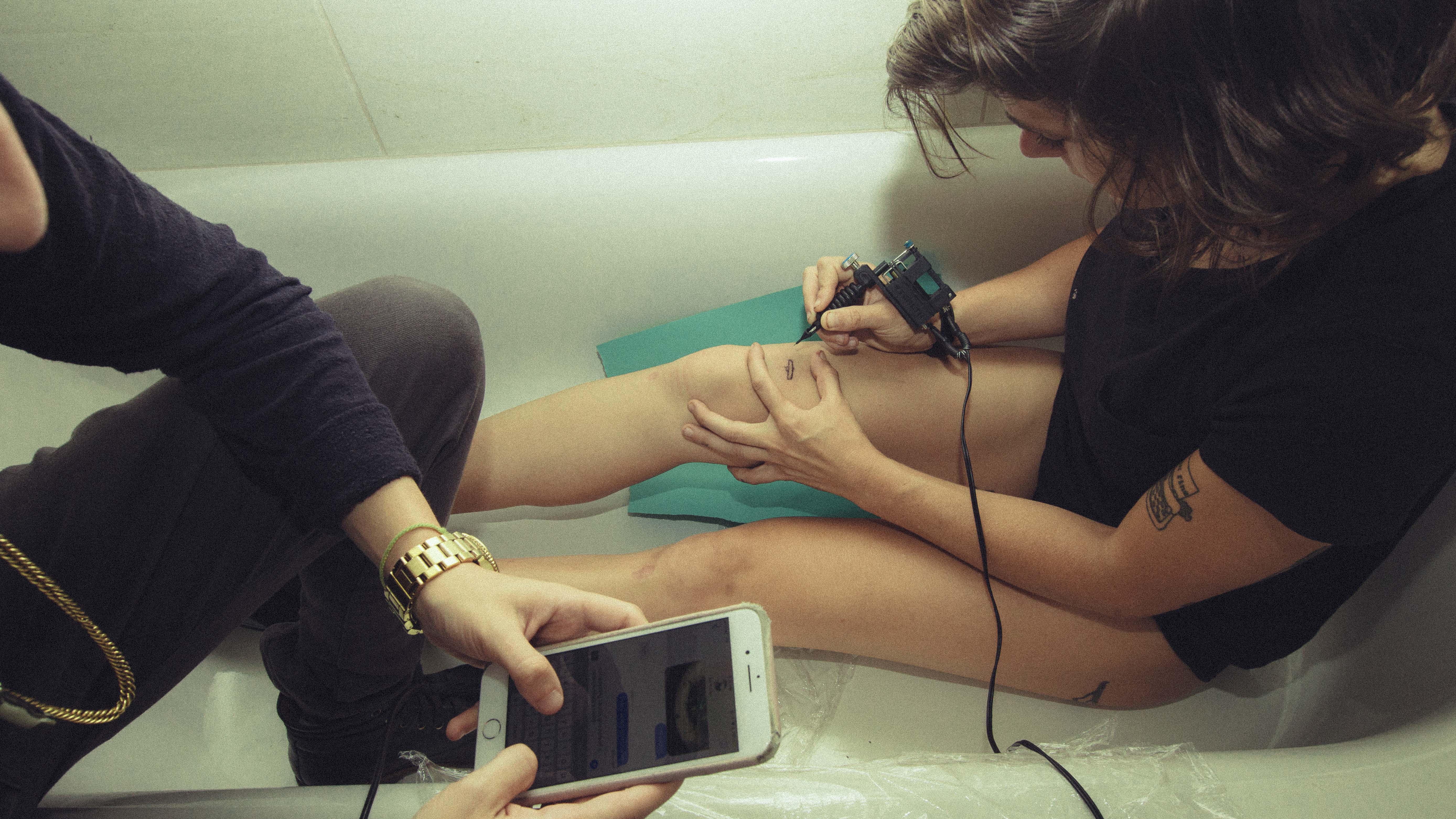
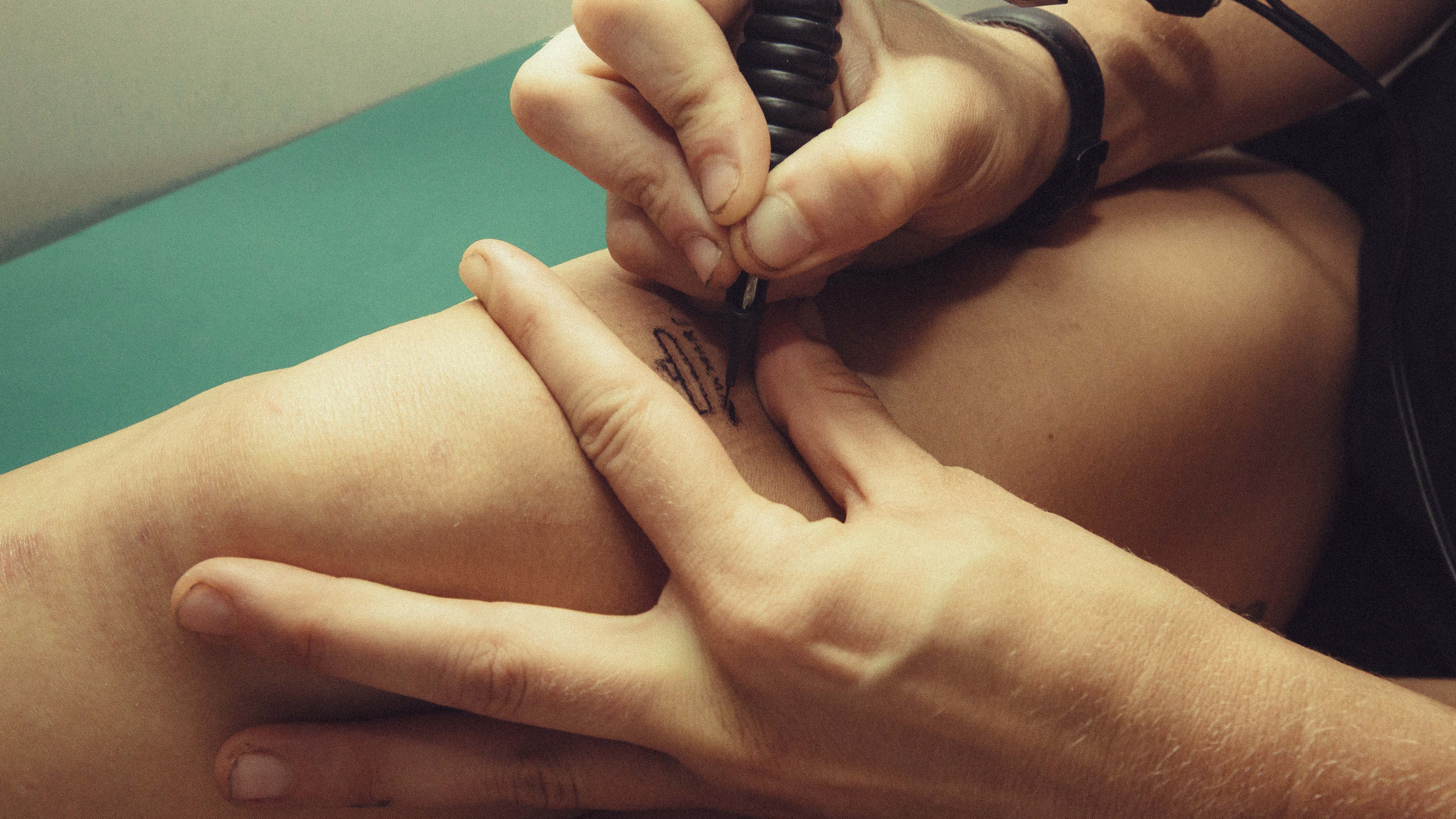
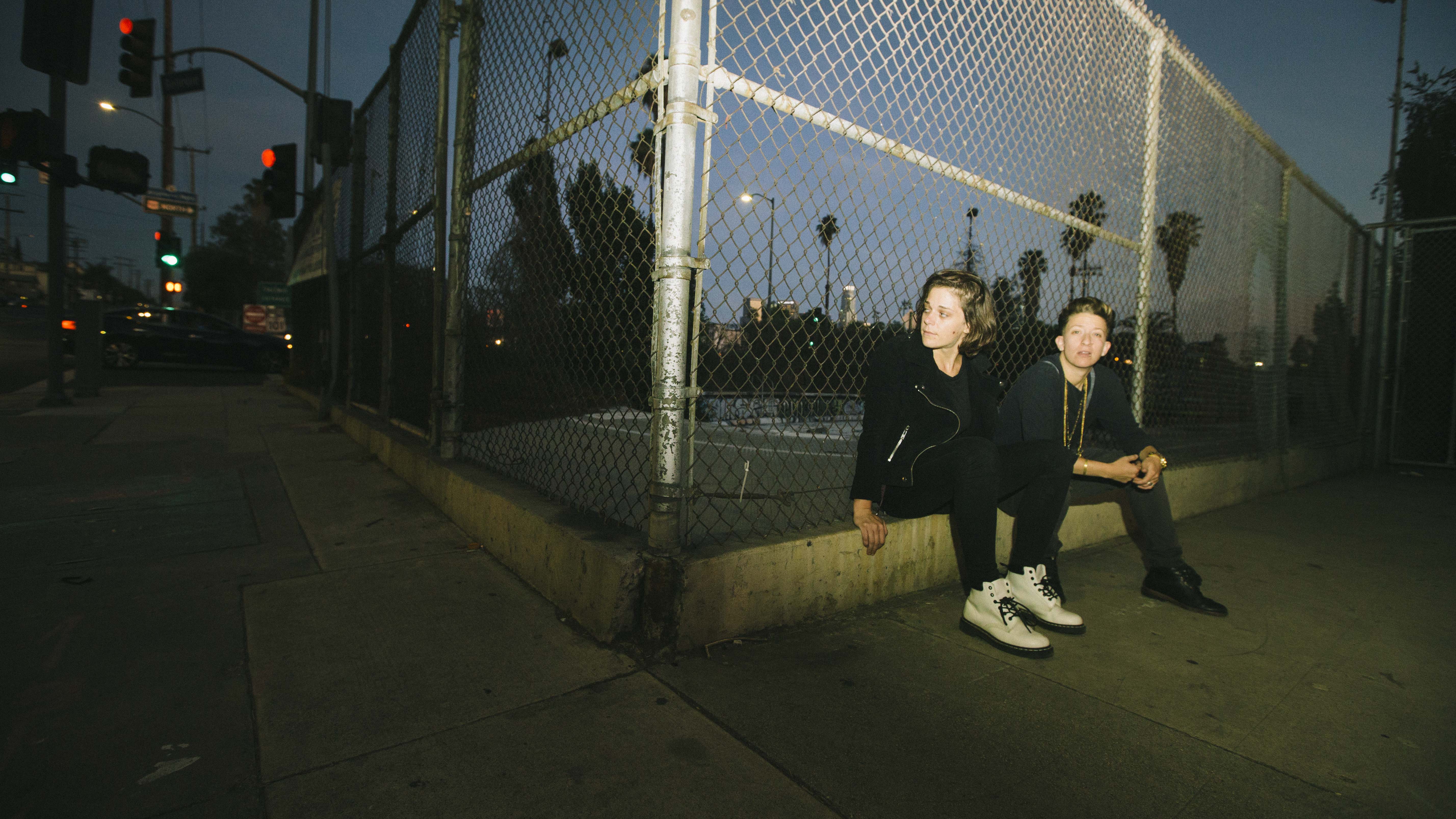
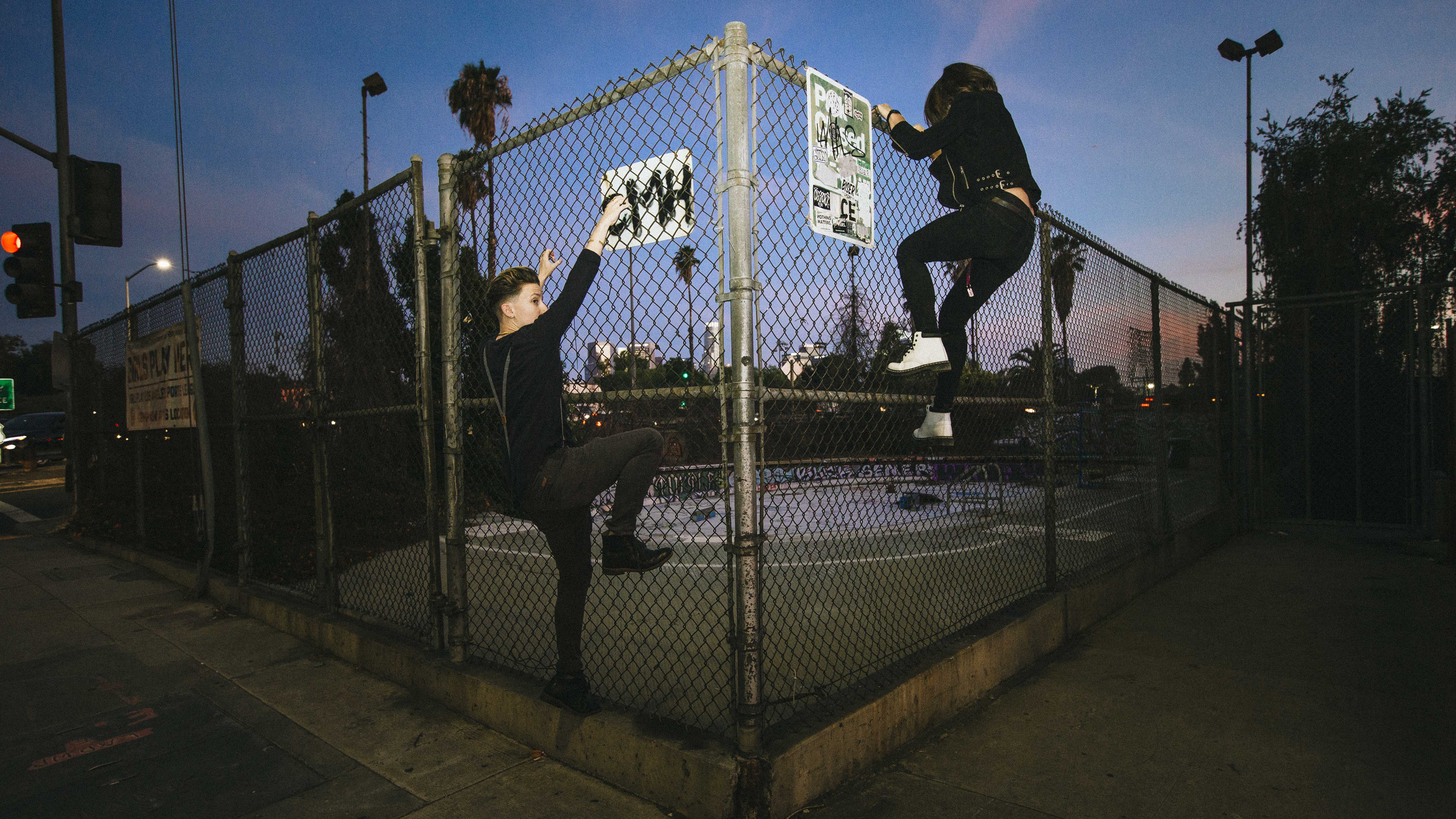
![]()
VIDEO! Getting in Bed With Kristin + Sophia Wallace: Clits, Shame, and the Patriarchy
This week Kristin got in Sophia Wallace’s bed and talked about cliteracy, feeling comfortable with body parts that we’ve been taught to feel shame about, book club crushes, the patriarchy, a missing giant gold clit statue, Sophia’s cute dog and her perfect bangs, and honestly, if you can believe it, so much more!
Step “Inside The Black Triangle” and Explore Queer Identities at Denver Pride This Weekend
When Rachael Zimmerman, a photographer based in Denver, Colorado, started shooting the Inside the Black Triangle series, it was a passion project. Rachael wanted to explore queer women beyond societal stereotypes, and decided to do so by photographing 100 queer identified women and having them speak about what their identity means to them. She also wanted to reclaim the black triangle, which was used in Nazi Germany to categorize atypical behavior — including being queer — but was later reclaimed as a symbol of solidarity and pride by lesbians and feminists in the 1960s and 1970s. “It’s important that we continue to reclaim language, unwanted stigmas, and symbols to make them our own,” Rachael said, describing the name of the project.
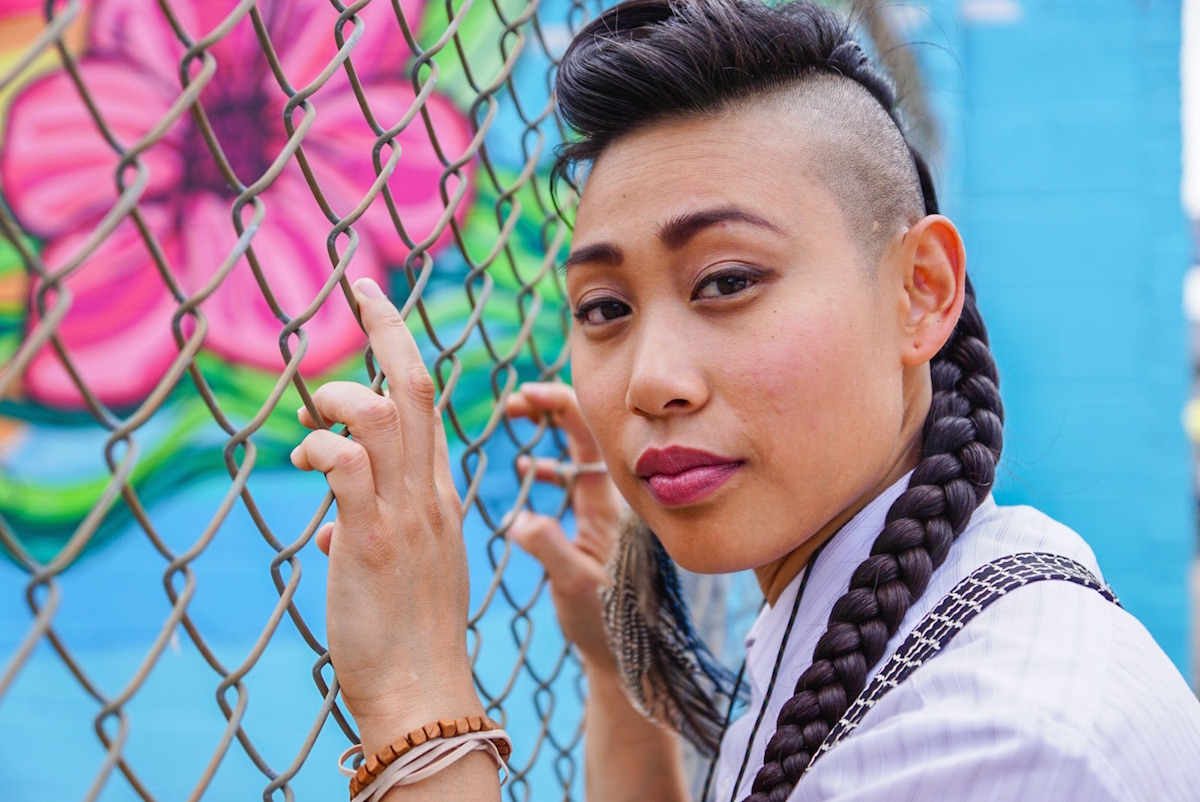
“Authenticity is so hard to come by these days since everybody wants to be, act and look like everyone else. Sometimes depending on the situations, I’ve held my silence and bit my tongue to save face, avoid conflict or danger. Fear can be a paralyzing and a daunting load to carry around.” – Joss, © Rachael Zimmerman 2016 // Inside The Black Triangle
Two years ago, when the project began, she did not imagine that it would evolve into what it has today: a vibrant, worldwide community in which queer women support each other and find inspiration through her beautiful portraits and the vulnerable and honest words that her subjects share to go along with the images.
“Inside the Black Triangle was created with the intention to share the struggles, joy, heartbreak, confusion and diverse experiences of queer women living in a heteronormative world,” Rachael said, sharing the mission statement behind her project. “Sharing stories leads to relatability, compassion and hopefully acceptance. Not only is empathy necessary outside the LGBTQ community, but now more than ever, equality is needed within the community. Acceptance and equality starts from within.”
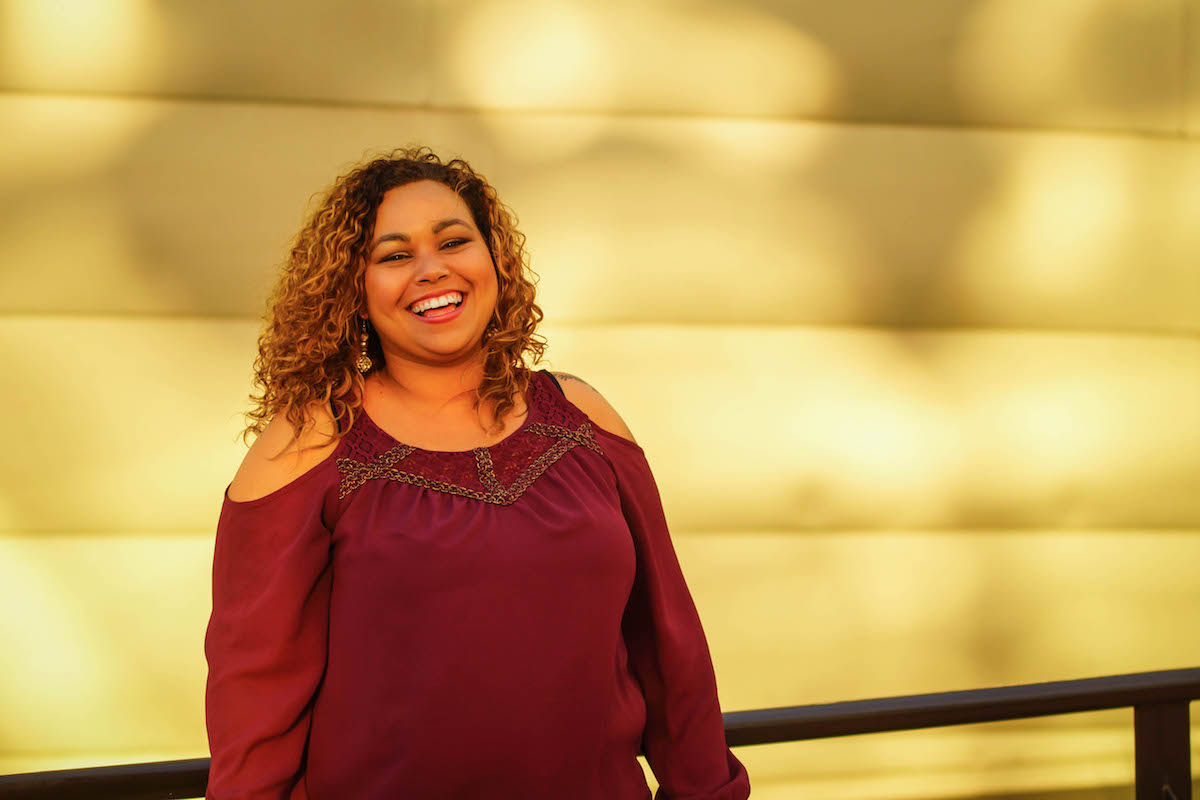
“It didn’t hit me that I was different until 6th grade. I met a beautiful, unforgettable girl on the bus and the undeniable connection we made scared the shit out of me. It broke me when she died; I slept with her jacket on for months. For a while after that I found myself stuck in a place of confusion. I mean, I didn’t just have feelings aimed toward girls. I loved Justin Timberlake and thought the boy that neighbored my seat in class was hot. What did all of these mixed emotions mean? I thought I hid it well but my mom was the first to call me on it. She gave me assurance that it was okay to be myself sexually; it was never her I was worried about, though, it was strictly society. Society, with their mess of labels. Society, making it difficult to figure out where I truly ‘belonged’. It wasn’t until I started a new life out of my comfort zone far away from home that I truly realized sexuality is not about belonging, but more importantly self discovery and self love. I’ve embraced it, and I love being a part of the LGBTQ community. Over the years I’ve been with men and women of all sorts, and when I had a lengthy relationship with a transgender person, I felt like I truly came into my own. However, the society that has always been near, and breathing down my back so to speak, has not changed. I’ve been continuously harassed and deemed ‘too pretty to be gay’, along with being questioned and drilled on my sex life. I want more than anything to break the stigmas. Society will probably never change, but the way people perceive themselves should never have to be compromised and that is what can be changed.” – Alex, ©Rachael Zimmerman 2016 // Inside The Black Triangle
Looking back on how the photo series began, Rachael said that when she was starting out she was just hoping to get some eyes on her photographs to increase awareness of her mission. Now, the series is an inclusive space to be “raw, authentic, and honest.” Rachael hopes the series and the community that has formed around it can act as ways to better the queer community and hold one another accountable. She describes some of her own personal observations about the ways in which the queer community has room to improve, including the fact that many of us still seem to prioritize masculinity, play into harmful stereotypes, and segregate based on race and nationality. “I’m so grateful for the women who courageously share their stories,” Rachael said of the subjects she has photographed for Inside The Black Triangle. “Strength is often found through vulnerability.”
When Rachael has photographed 100 women, she plans to put together a coffee table style book. Her hope is for the book to be circulated amongst friends, for it to spark conversation, and maybe one day in the future used on university campuses as a supplemental text. Rachael has also recently launched an apparel line to go along with the project, and Inside The Black Triangle is currently selling limited edition Pride t-shirts. All profits go directly back into the project.
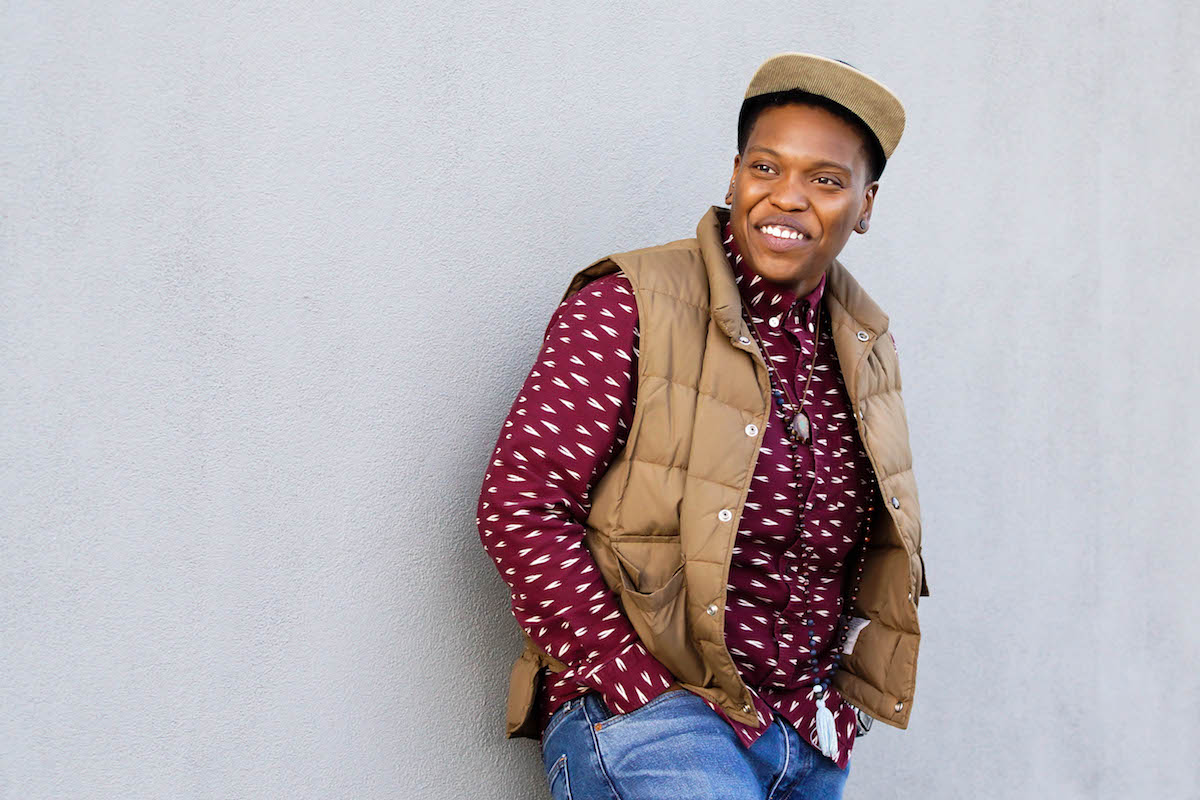
“Growing up in a small mountain town in Georgia, I had to deal with a lot of stereotyping. Being a black, lesbian woman in the south wasn’t as easy as snapping my fingers and saying this is who I am. I’ve always known my mom to be a lesbian and many people labeled me as one by default. The fact that I was athletic and very involved with sports did not help the stereotyping either. So, I spent most of my young adulthood internalizing my emotions—due to the fact that I felt people had it all wrong. If I were a lesbian, it wasn’t because my mom was or because I liked sports—it was because that was who I was. I deviated a lot from ‘the natural progression’ of coming in to my own. I had a wonderful boyfriend in high school. I still find men very attractive, but I feel I made myself want or need to like men. I felt I would be accepted if I did this…” – Ikeah, ©Rachael Zimmerman 2017 // Inside The Black Triangle
If all of this sounds so good to you and you’re like “wow, I really wish I could meet Rachael and learn more about you’d like to learn more about Inside The Black Triangle and maybe even pose for a portrait and also I live in Denver, CO” well my friend, you are in luck! Rachael will have a booth at Denver Pride, sponsored by Scissr the app, and will be shooting a Mini Pride Series for Inside The Black Triangle. She is hosting an Autostraddle Meet-Up on June 16 at 7:15pm, at her Pride booth, where there will be an interactive art activity! Learn more about her meet-up here, and if you go, let us know how it is in the comments!
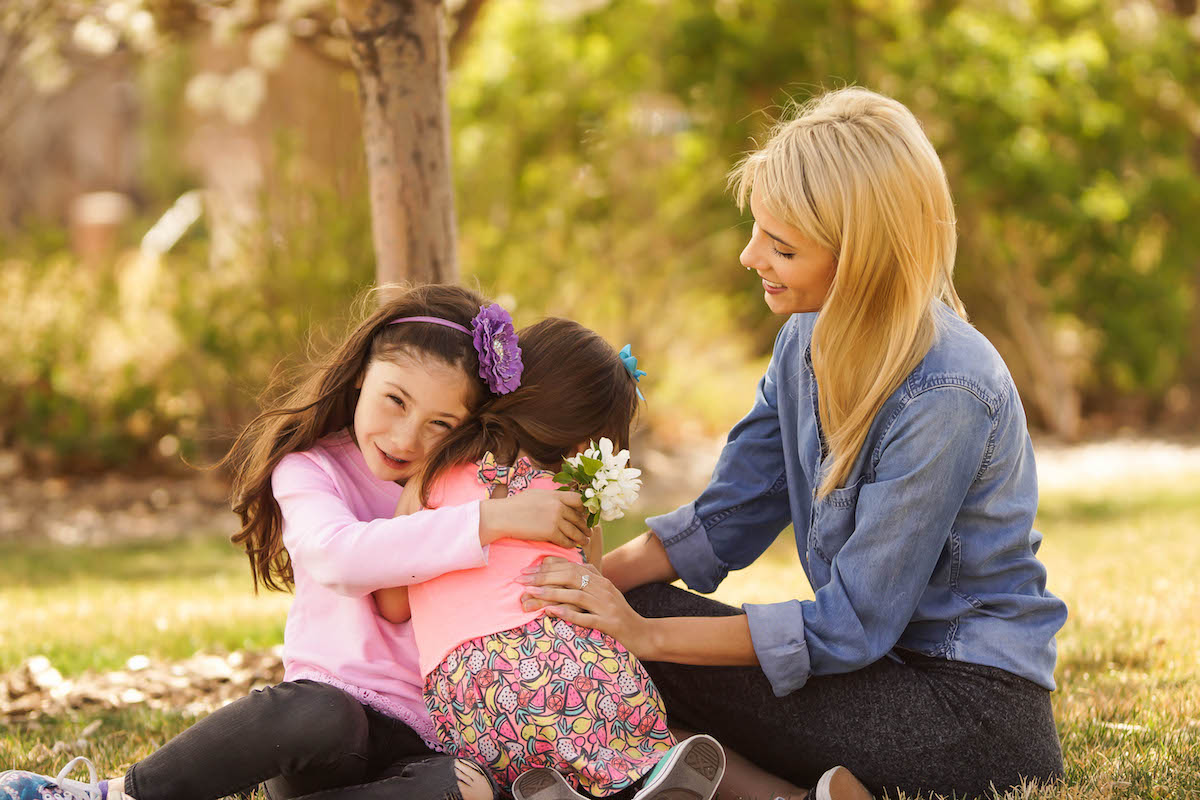
“It hurts knowing I denied so much of myself for so long. Finding yourself later in life is difficult, especially when you’ve lived as a heterosexual woman with children for nearly a decade. There is an internal uprooting and finding your place is a daunting task. Family assumed it to be a phase, as though I’m suffering from a temporary neurosis of sorts. I’ve had male acquaintances deny my sexuality for me only to promptly shower me with their grossly sexualized concept of lesbianism. My female friends wanted to make out with me when they were drunk, because all lesbians are sex fiends…” – Tasha, ©Rachael Zimmerman 2017 // Inside The Black Triangle

We were best friends, and we still are. It was easy to be in a relationship for so long because we get along so well and love each other so much. I think I had no idea that my attraction to and feelings for women were so inherently a part of me. Every experience that’s led me to now has been extremely valuable and important. But I do wish that my personal journey of introspection and self-love didn’t have to cause anyone else pain. It’s hard not to feel guilty and I work on forgiving myself everyday. Because choosing to love myself and live my highest truth has been indescribably beautiful, and completely worth all of it.”- Taylor, ©Rachael Zimmerman 2017 // Inside The Black Triangle
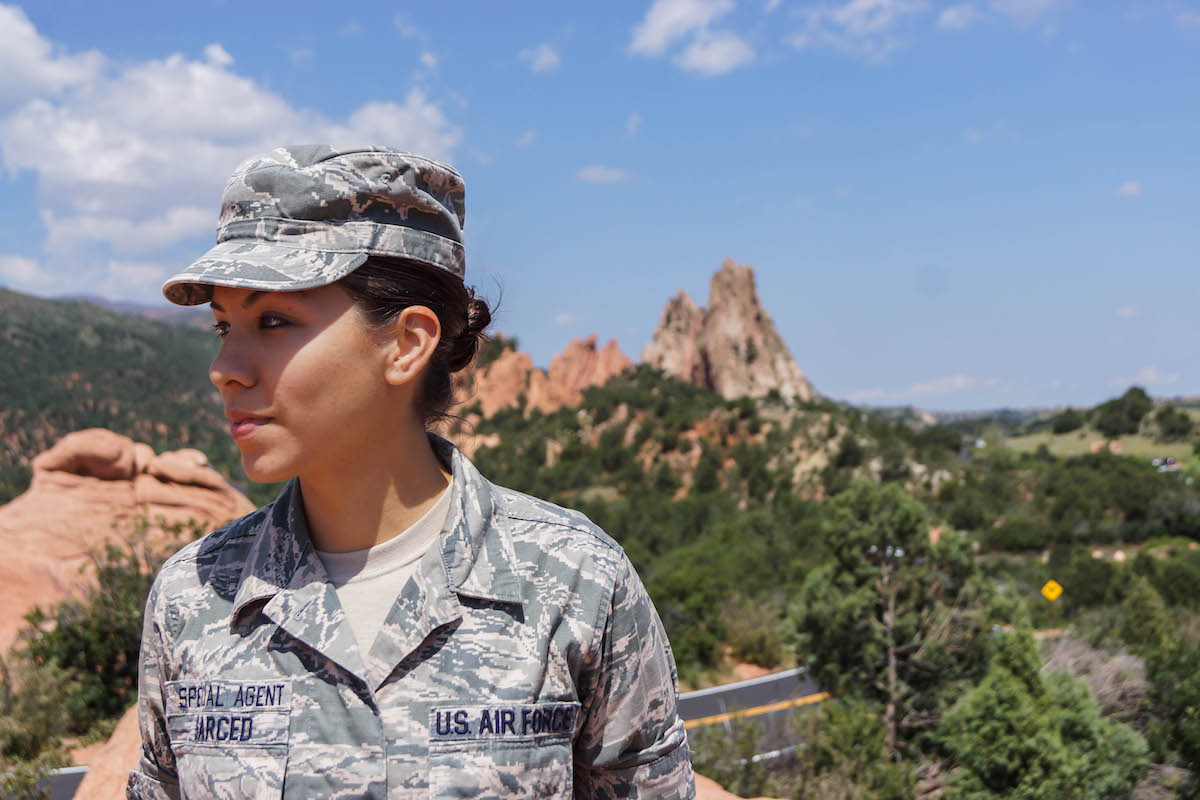
“I entered Active Duty in 2012 and realized it was not as different of a workplace as I had imagined. To this day I have not faced any adversity about my sexual orientation. Those who have been in the service longer always say “it’s a new Air Force” because of the changes that have taken place, and I am proud to be in the progressive side of this “new Air Force.” That being said, I cannot say if I would have the same experience if I were not feminine, or if I were trans. However, I have faith that this progressive “new Air Force” and military will create a culture where no one in the LGBTQIA family has to face adversity.” – Ali, ©Rachael Zimmerman 2017 // Inside The Black Triangle
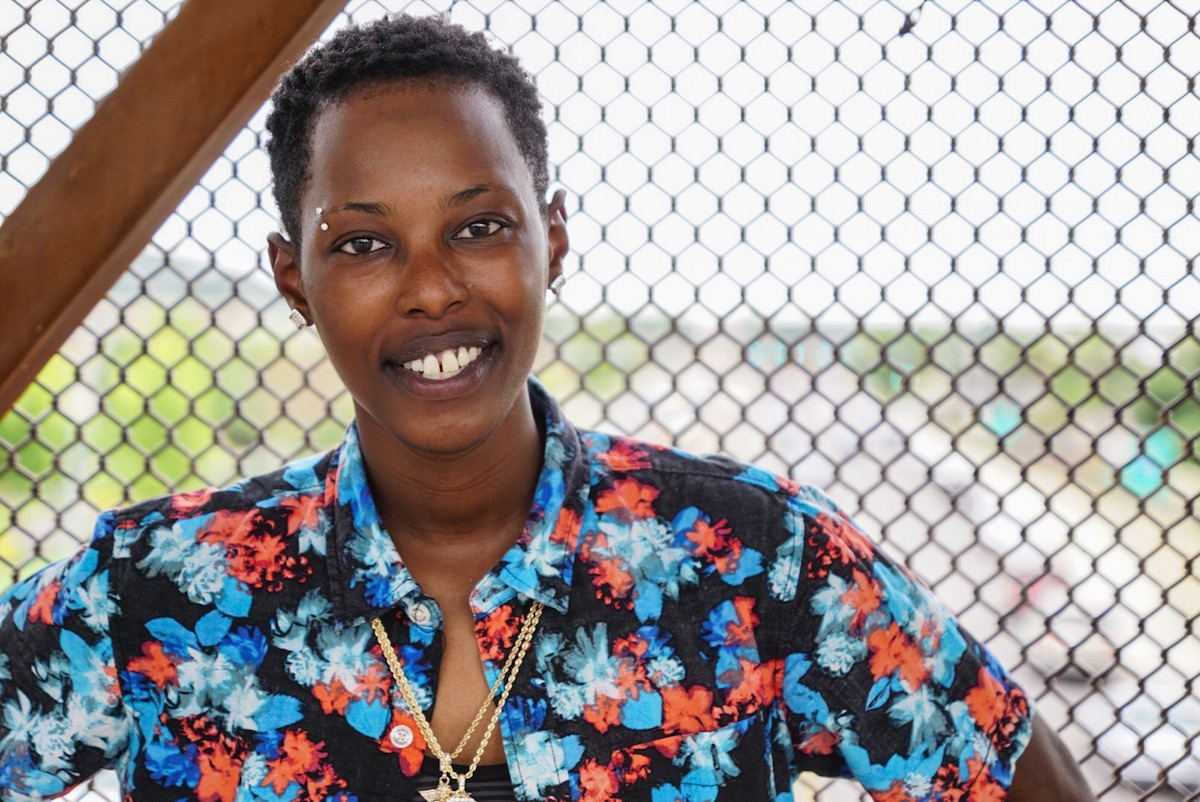
“I’ve been out in the lesbian community since the age of 16. I’m constantly learning and progressing as a lesbian stud. Currently I’m in school, studying welding. Most welders are men, but the males at school treat me equally even though I’m a lesbian. When people see me I don’t want them to just see me as a gay, lesbian stud, I would just like them to see me as another person. As time moves forward the community becomes stronger. My motto I live by is ‘Love others how you would want to be loved we all are God’s people!’.” – DeeLo, © Rachael Zimmerman 2016 // Inside The Black Triangle
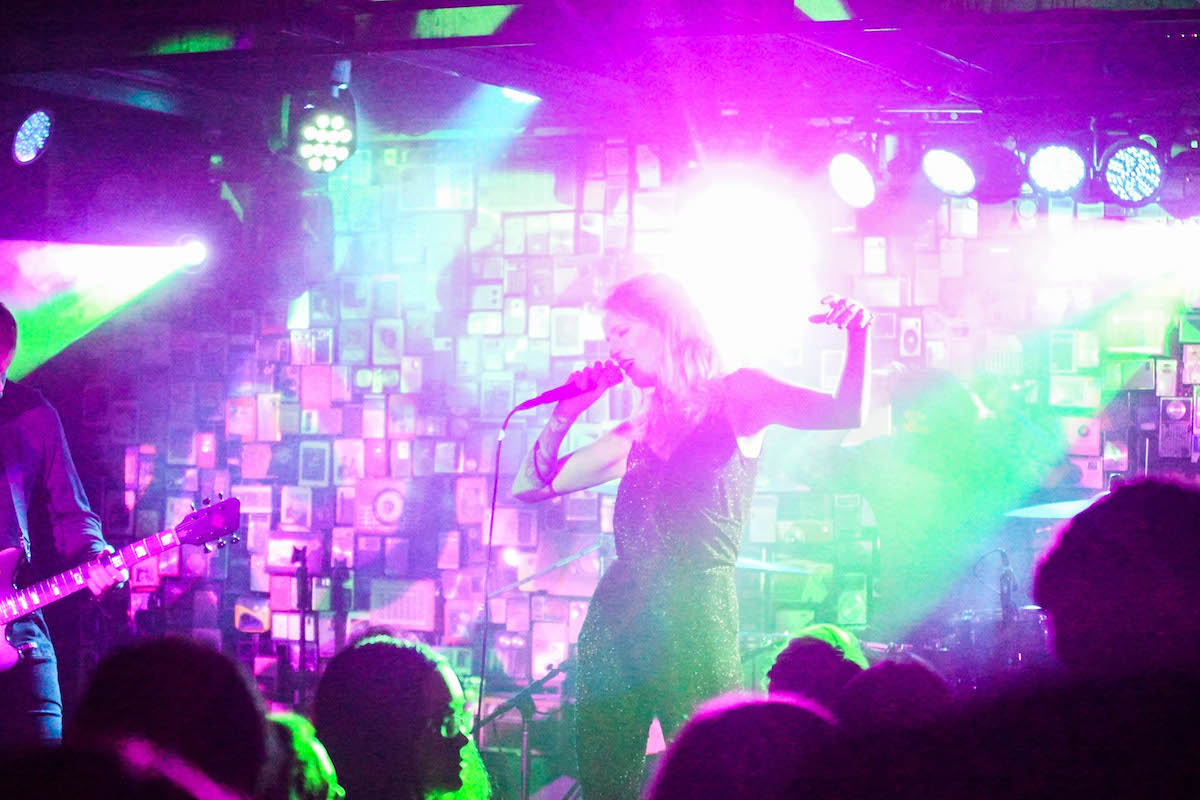
“I’ve always used songwriting to hide behind the things I really want to say to someone that I’m too afraid to say in conversation. ‘Unspoken’ is a song I wrote about falling into feelings with my best friend. We have always had this unspoken connection between us but I think both of us were too scared to acknowledge it…” – Emilie, ©Rachael Zimmerman 2018 // Inside The Black Triangle
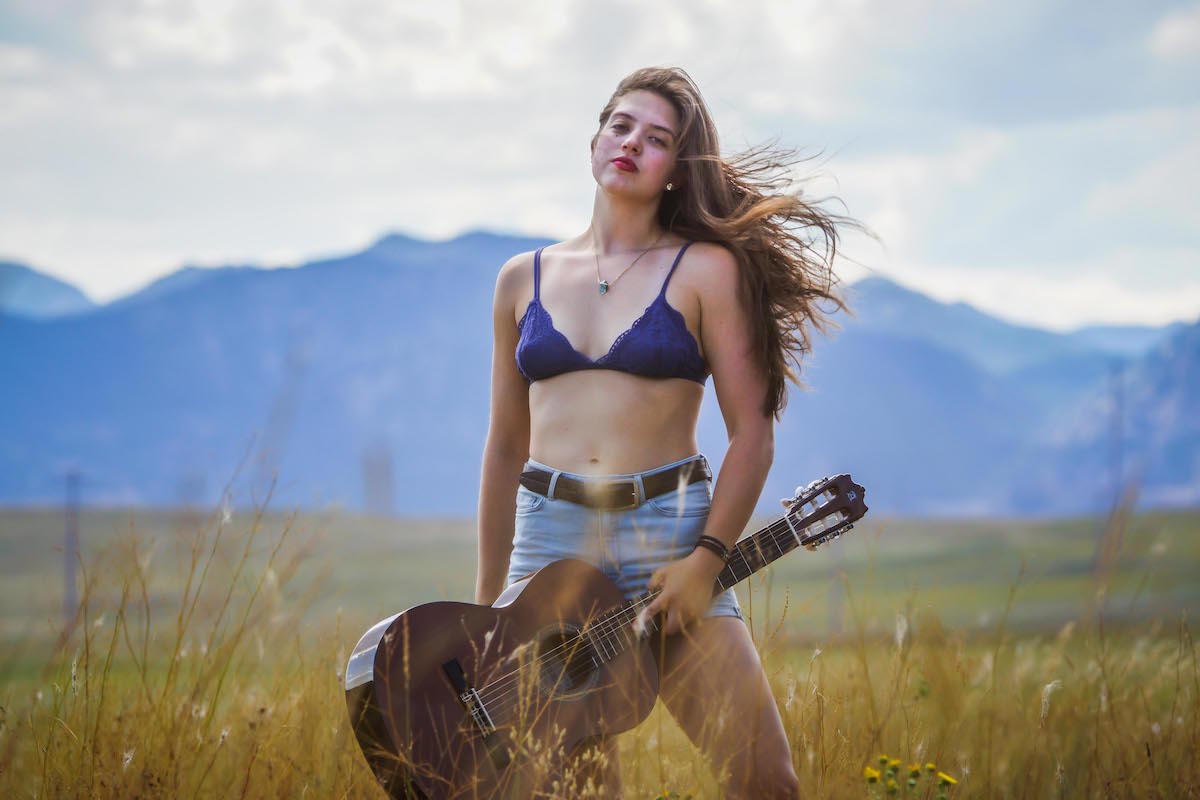
“As a singer/songwriter, many of my songs are about my romantic experiences with women. Music is an outlet for me to articulate and express feelings that make me feel vulnerable- things I find hard to put into words otherwise.” – Lena, © Rachael Zimmerman 2016 // Inside The Black Triangle
25 NSFW Sex Collages Inspired By Your Queer Erotic Imaginations and/or Lesbian Sexual Fantasies
At our annual A-Camp event this month, many humans gathered in a shared space to undergo a sacred ritual: making collages about their sexual desires/feelings while listening to me read aloud an erotica story about Catherine Zeta-Jones that our Design/Marketing Director wrote when she was 15. To prepare, I spent countless hours ripping pictures out of various used photograph books, desperate for diverse and queer-adjacent imagery and the work, my friends, was worth it. These are the collages that resulted from that life-altering experience, titled by their authors. Y’all are so talented!!!!
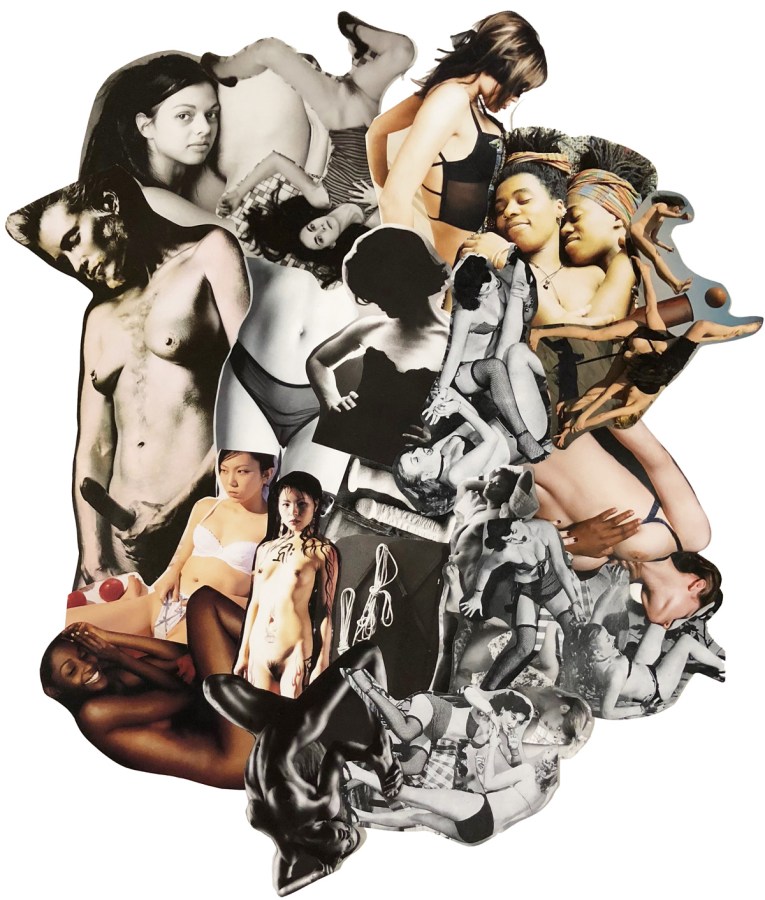
Bee Tsuchen // Pile of Babes/Orgy
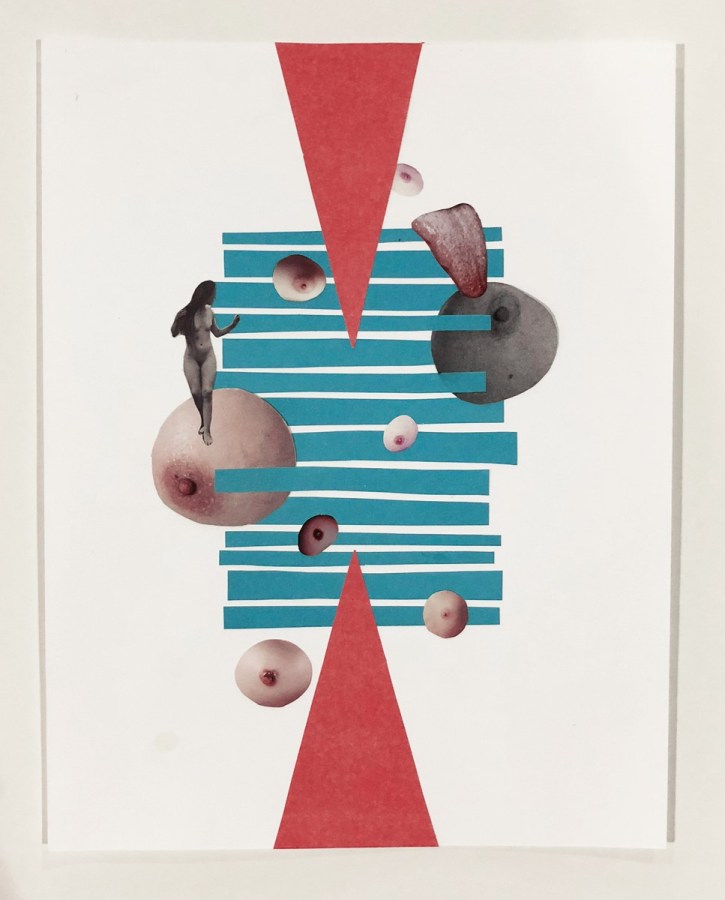
Dana K // Cosmic Tits
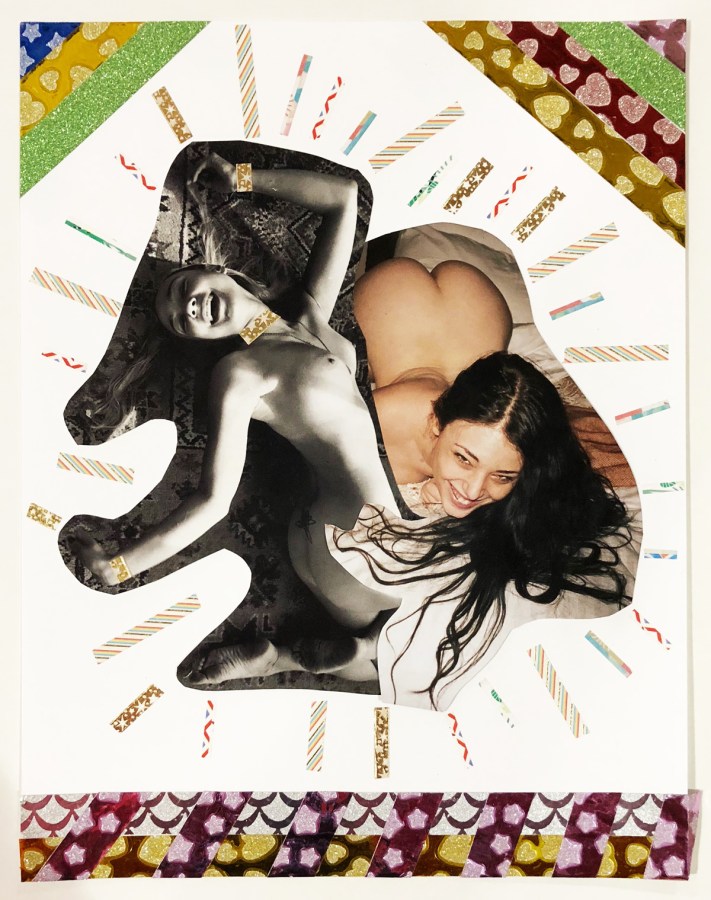
Manuela G. // “Ahhhh!”
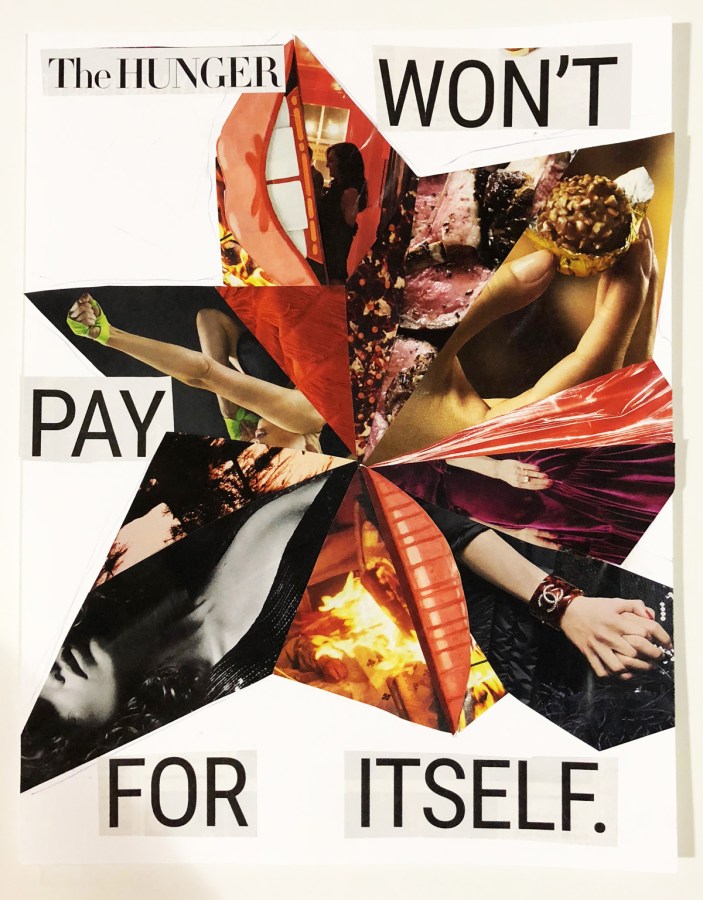
E. McNairy // Hunger Won’t Pay For Itself
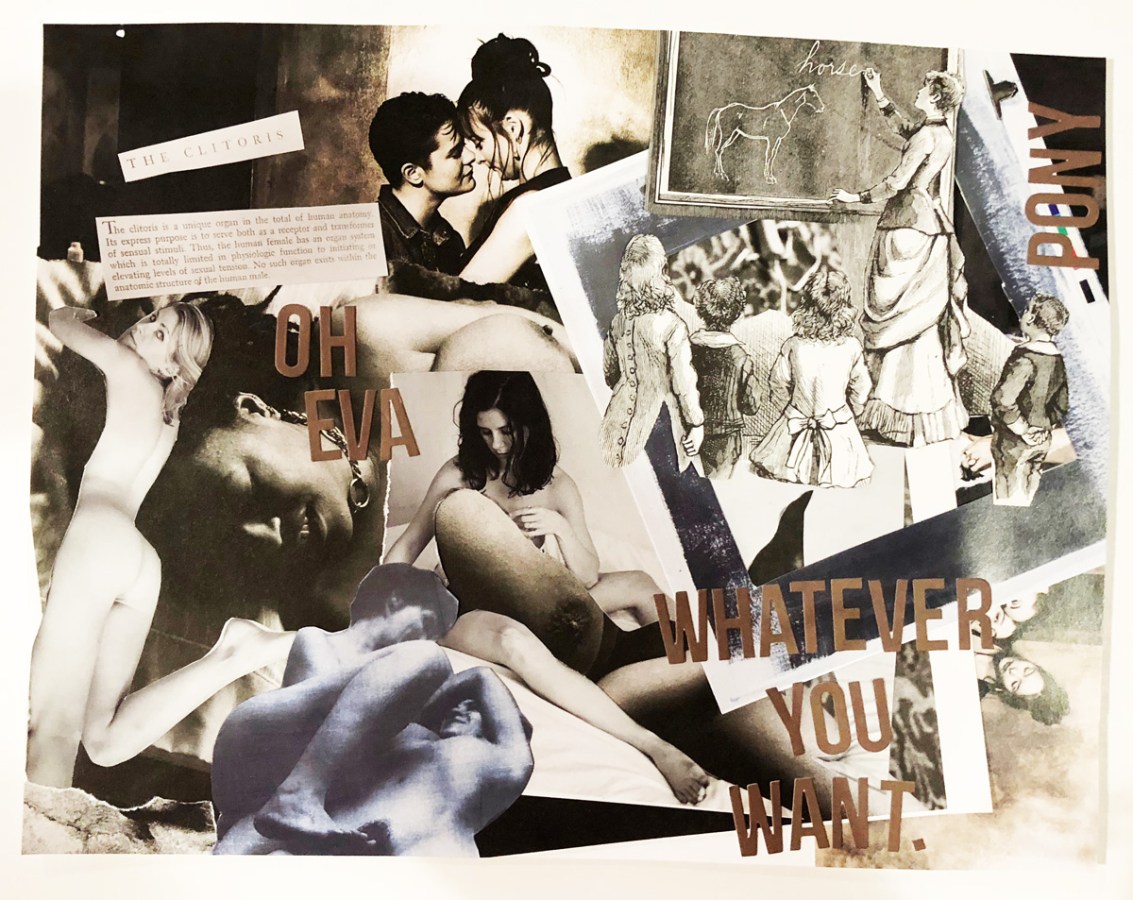
J. Rayner // Whatever You Want
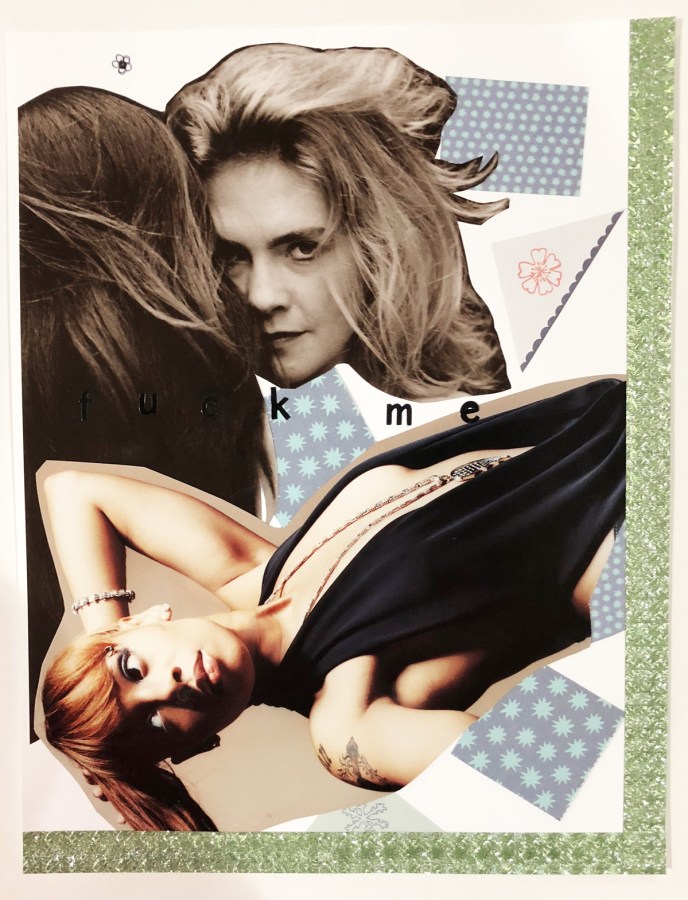
SR // Attraction

OHM // What Is The Vagina?
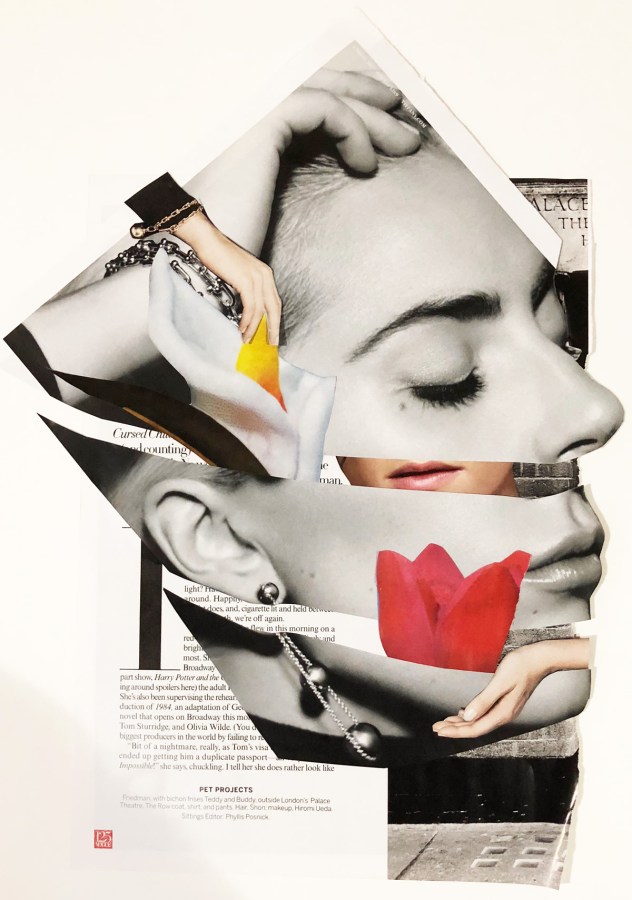
ALC // Tend The Garden
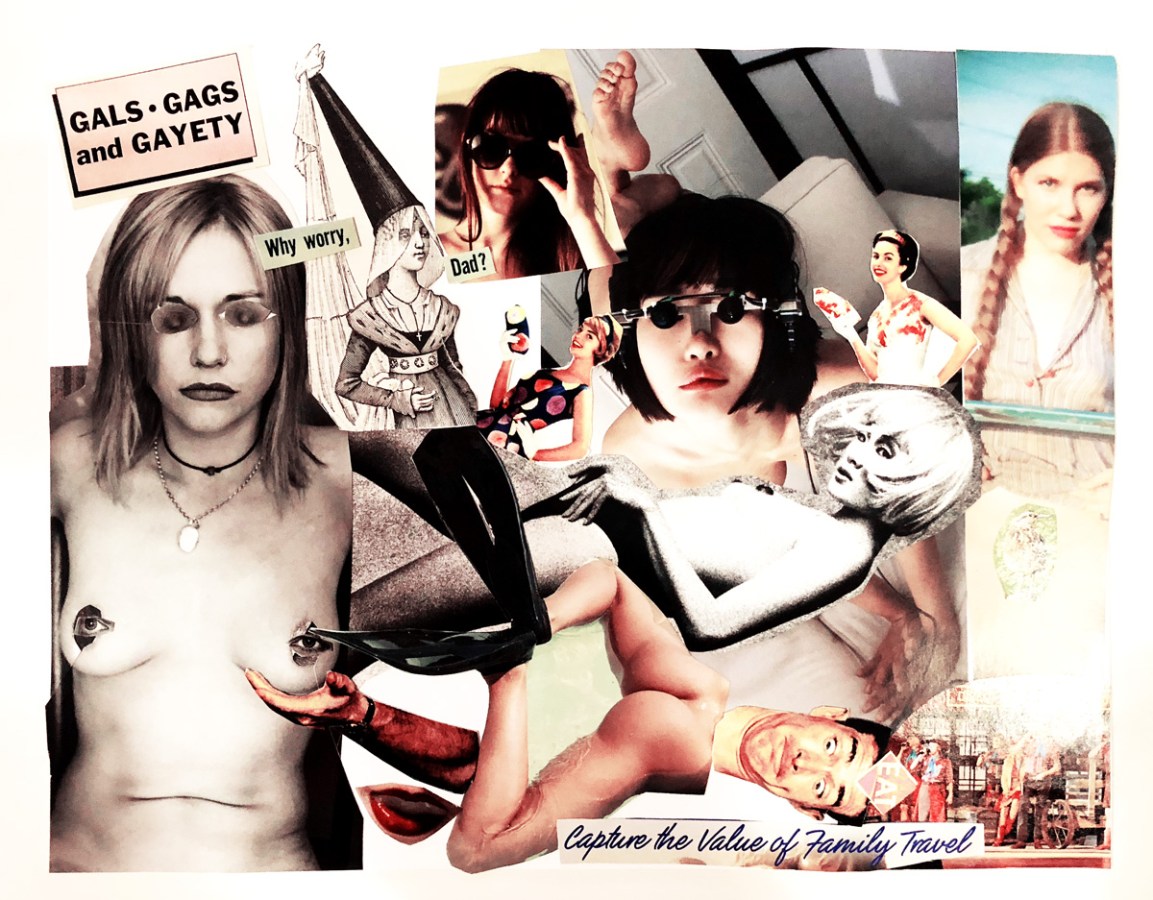
Ezra L. // Why Worry, Dad?
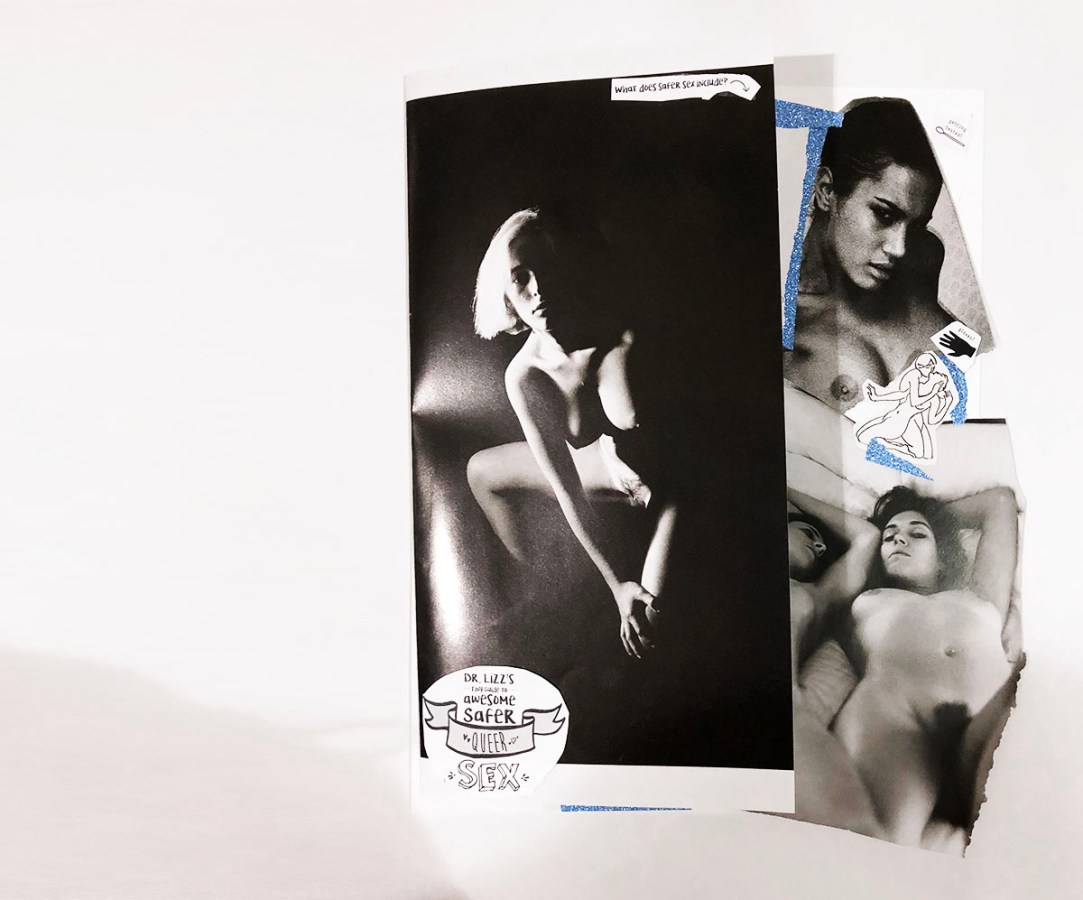
ABS // Classic Safer Sex Starlet Centerfold (Closed)
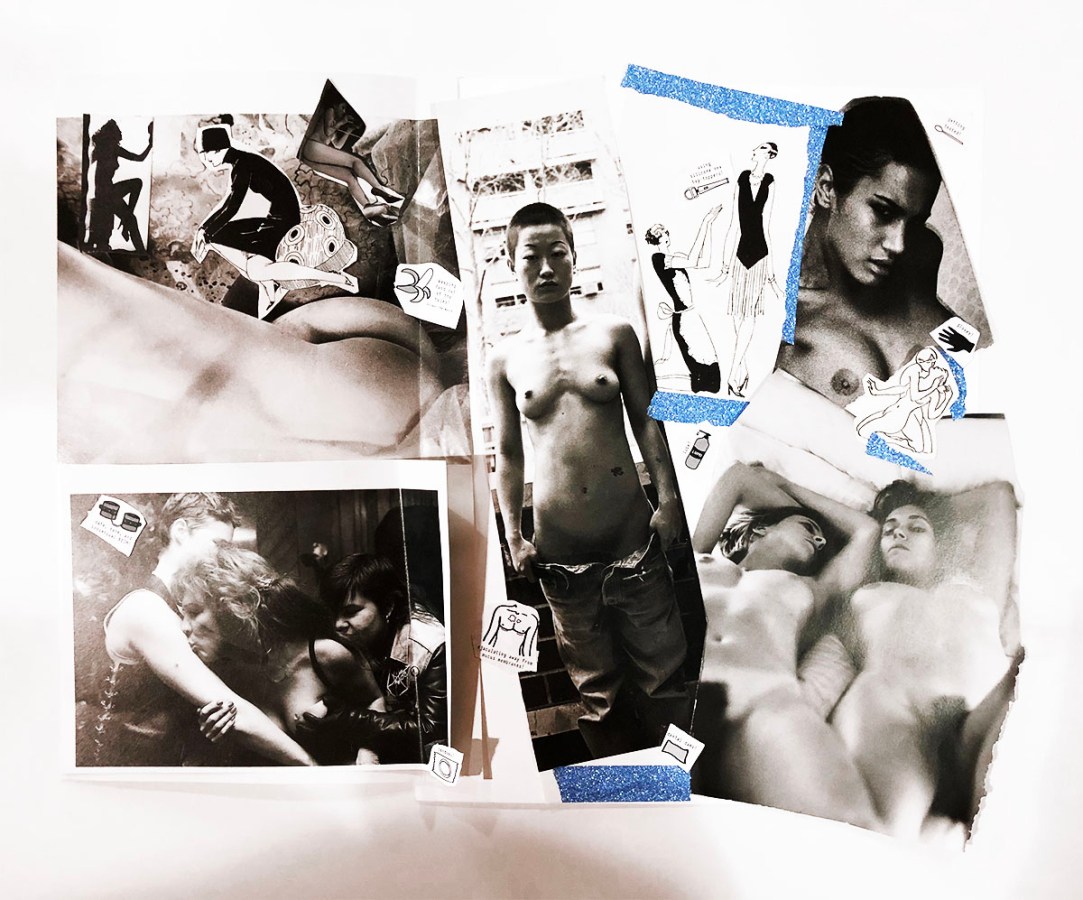
ABS // Classic Safer Sex Starlet Centerfold (Open)
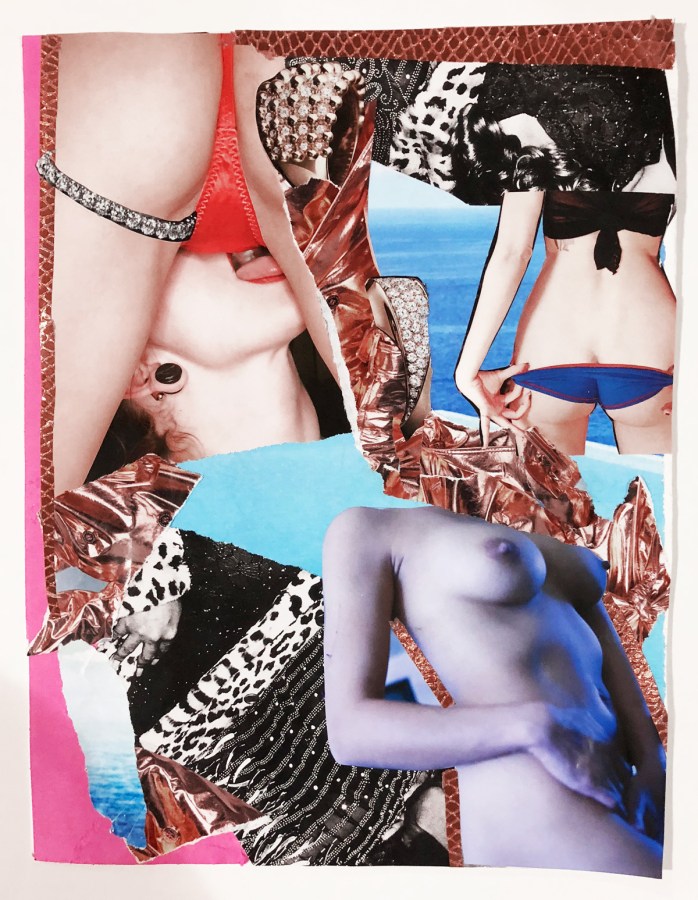
Alex Simon // You Can Have It All
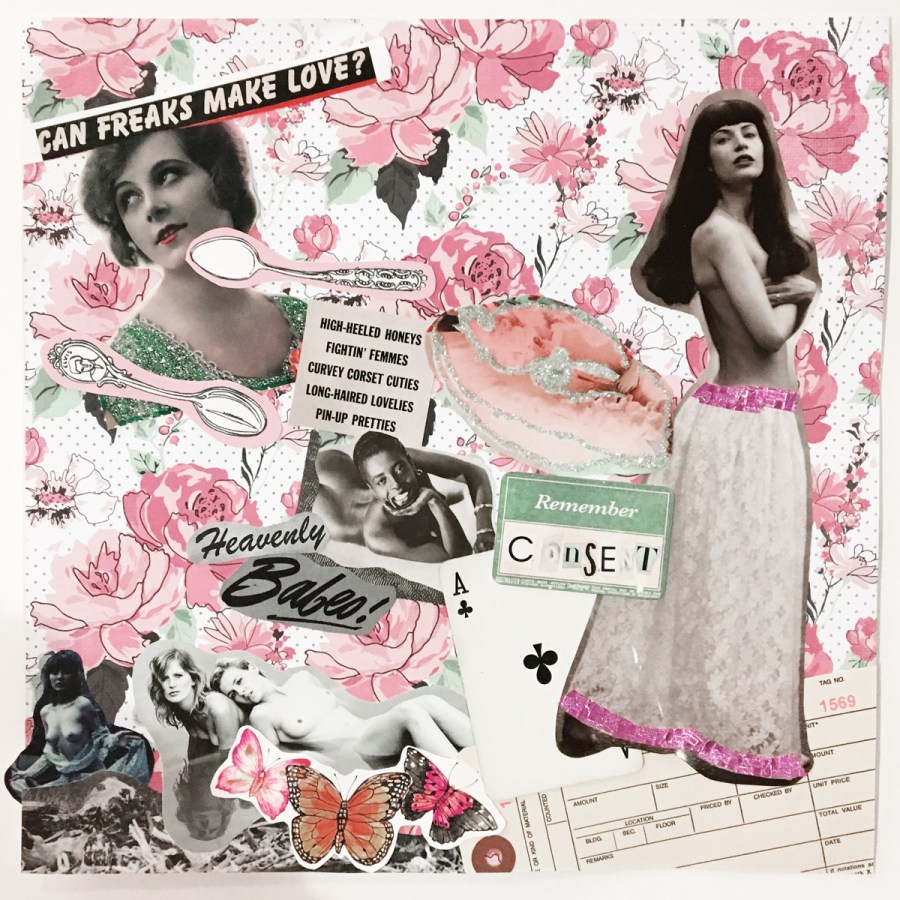
Cass F. // Femme4Femme
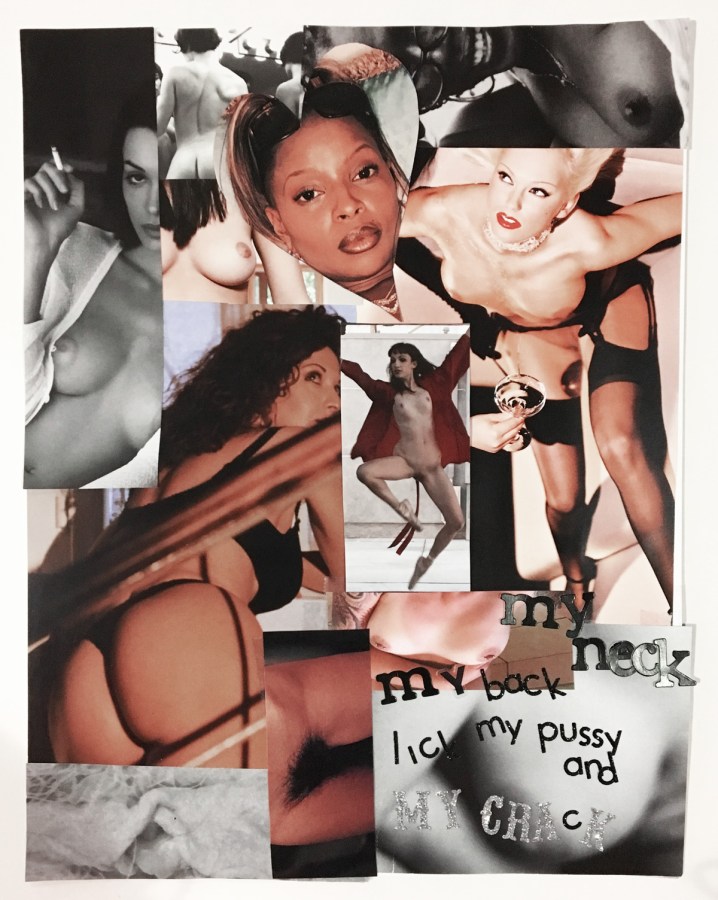
Sofia // Untitled Pussy and Crack Project
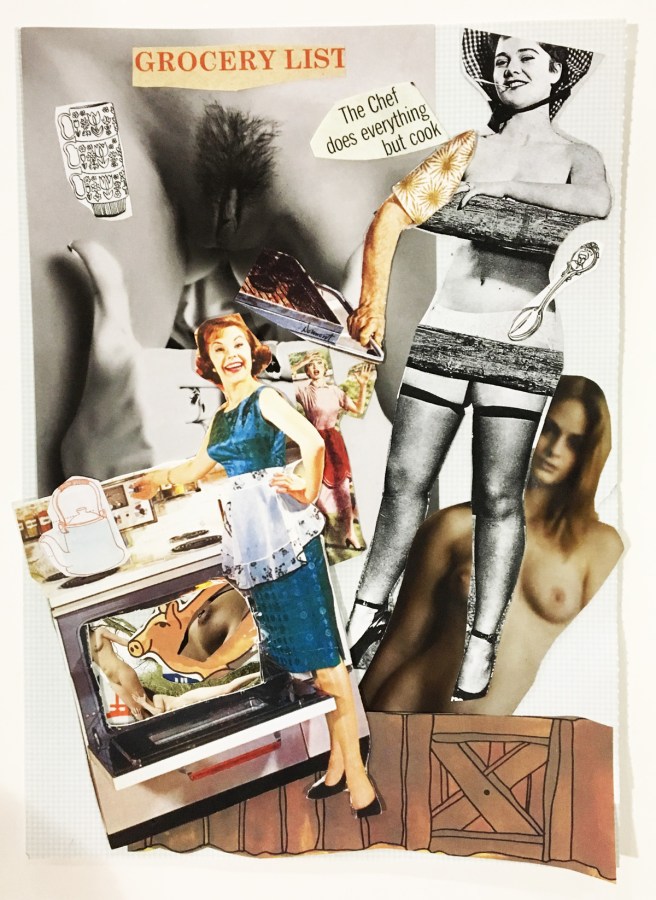
Amelia U. // Everything But Cook
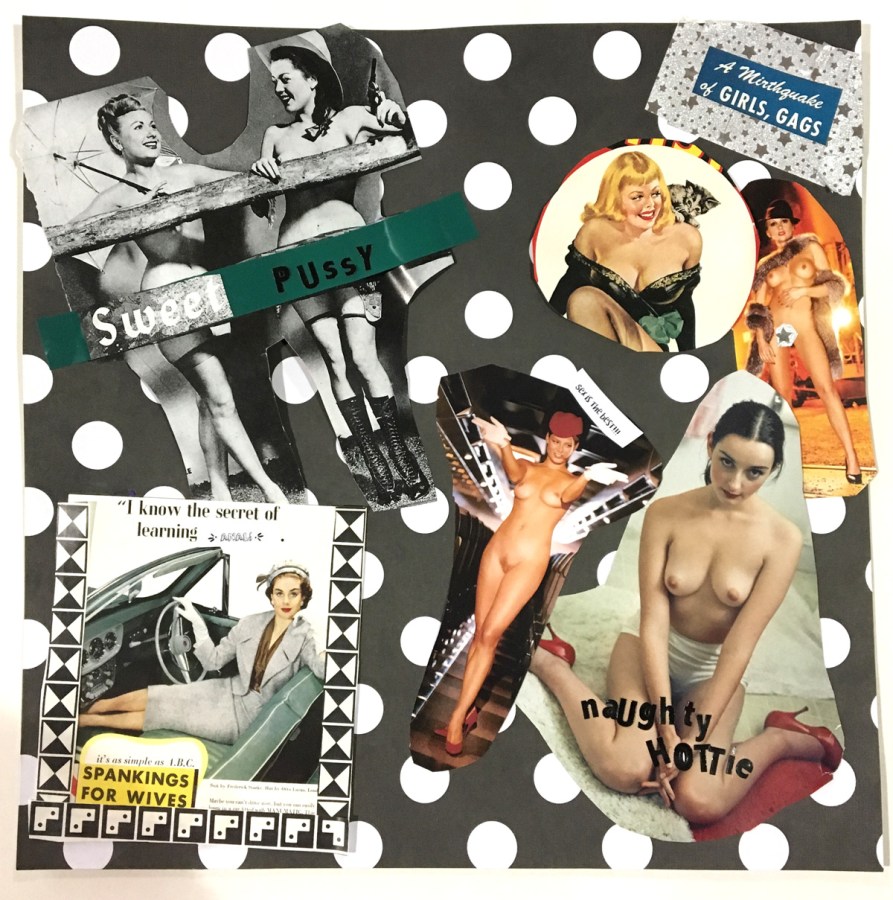
Angela // Plentiful Pussy Project
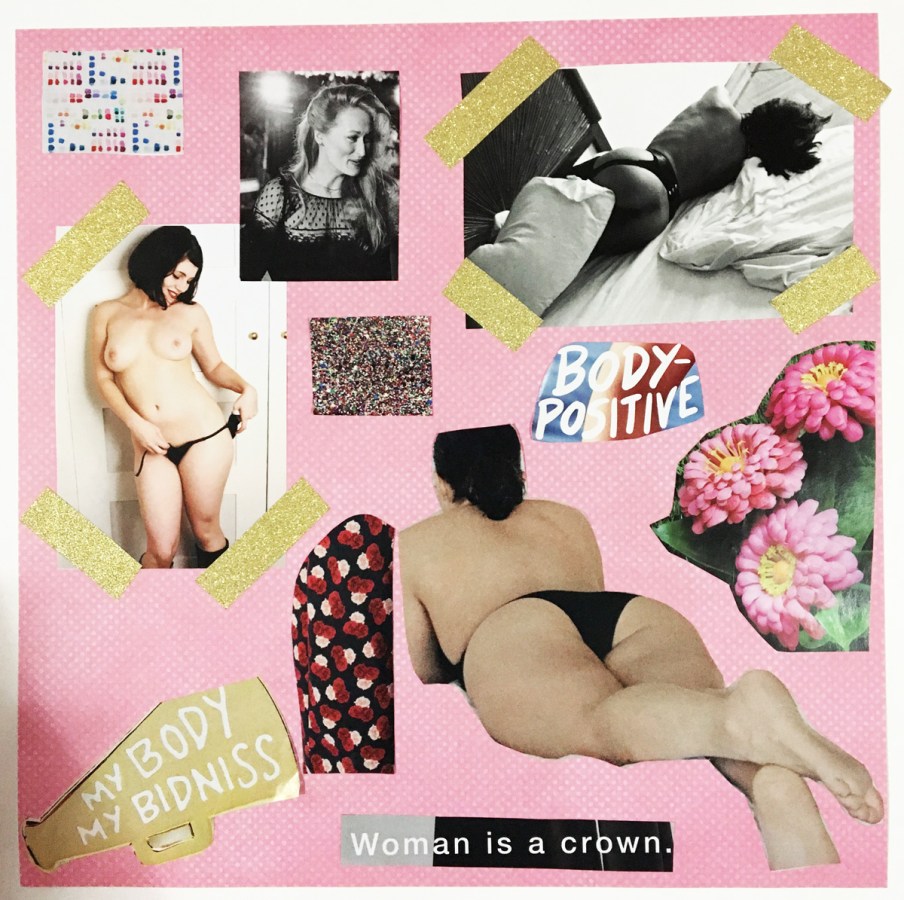
Maggie // Femme Fantasies <3
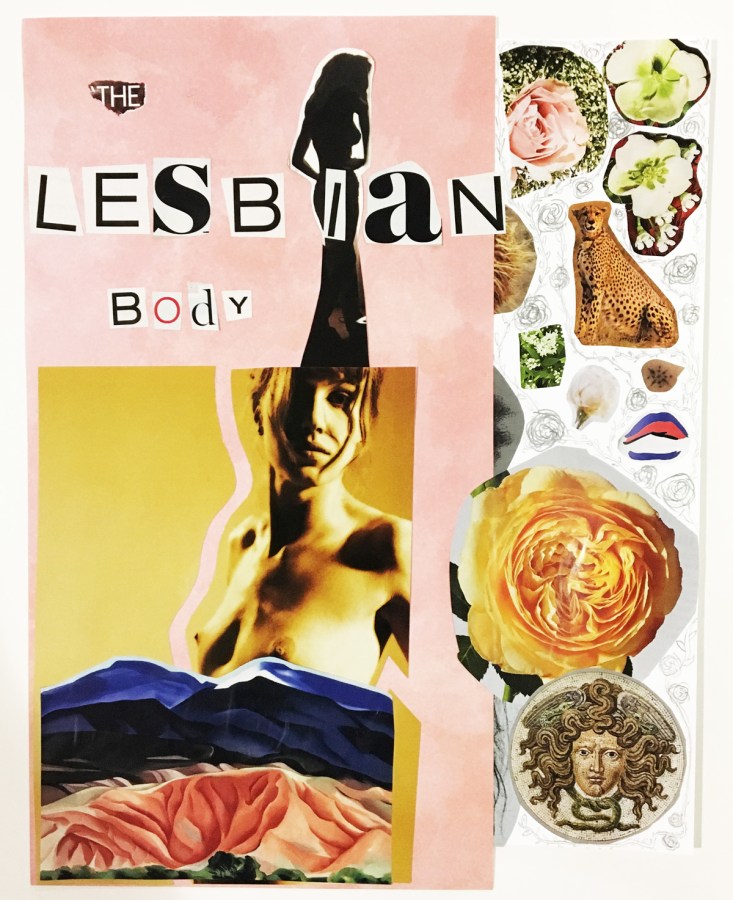
Erin J // The Lesbian Body
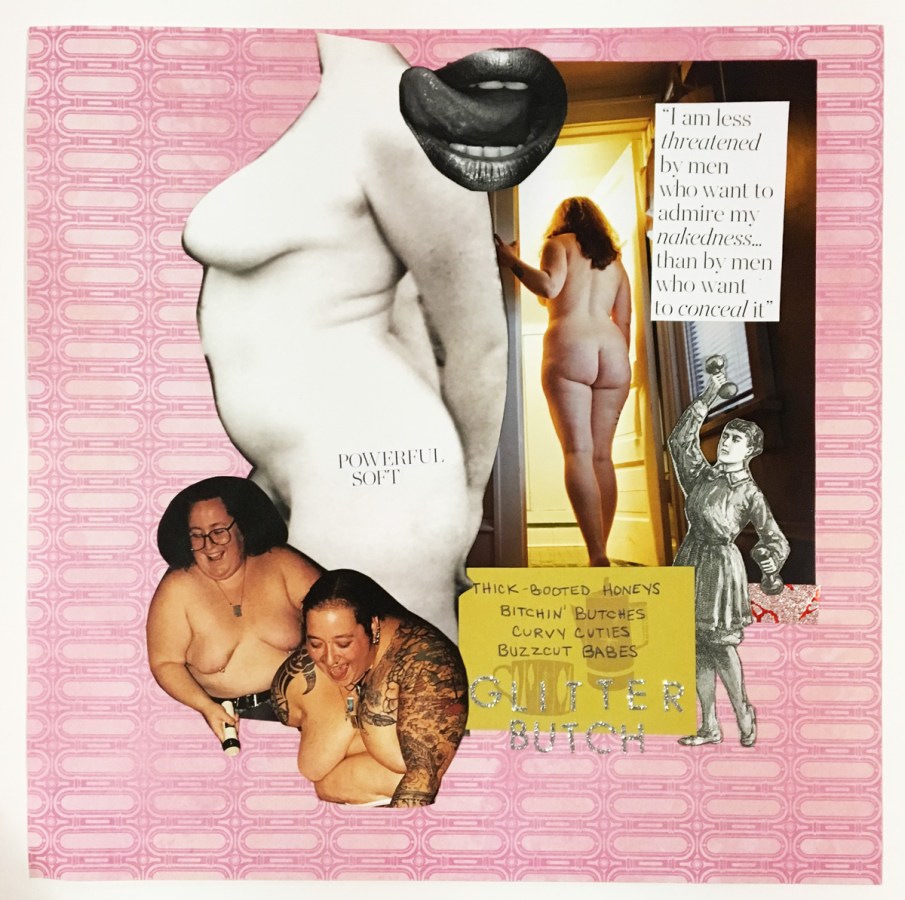
Al R // Glitter Butch
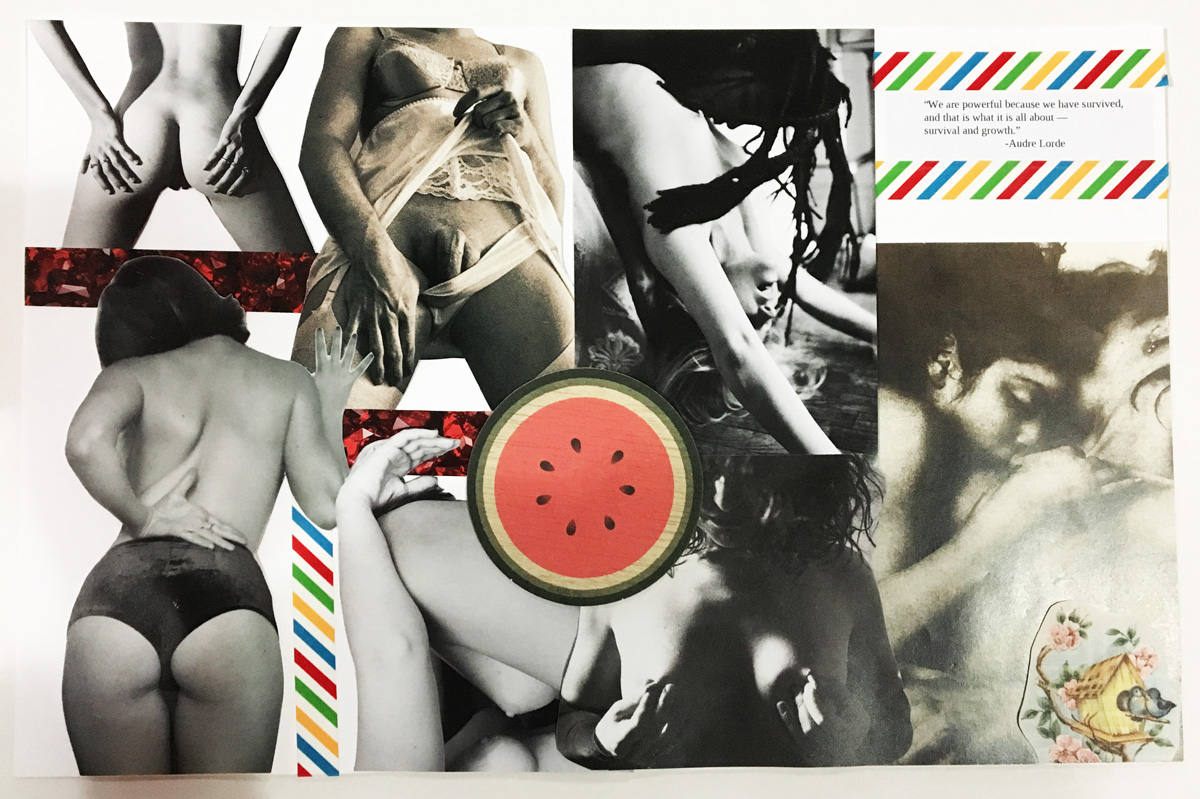
Jessica W // Growth
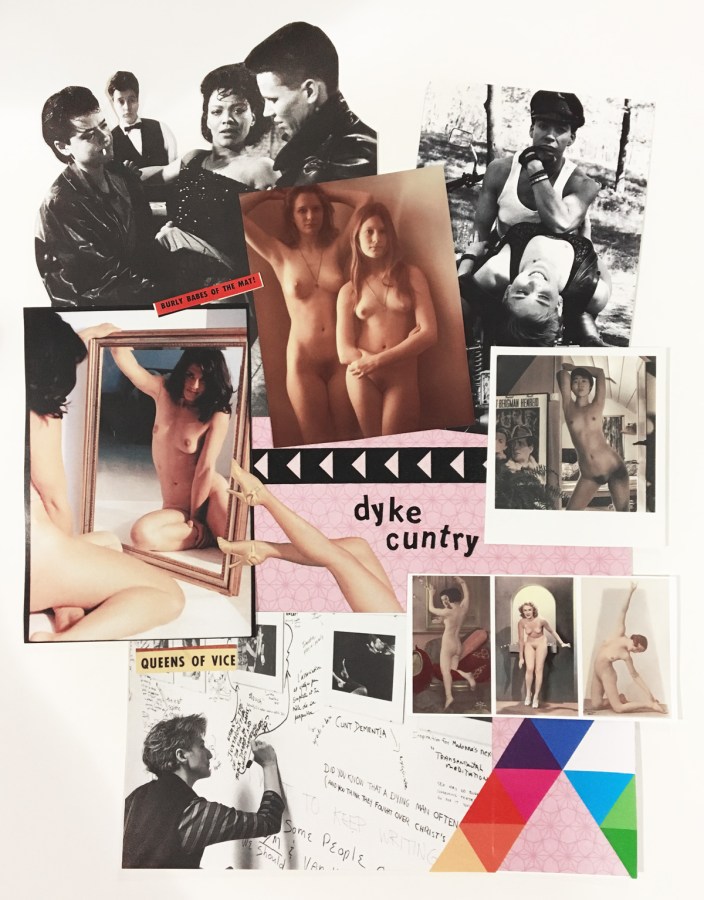
Ames // Welcome to Dyke Cuntry
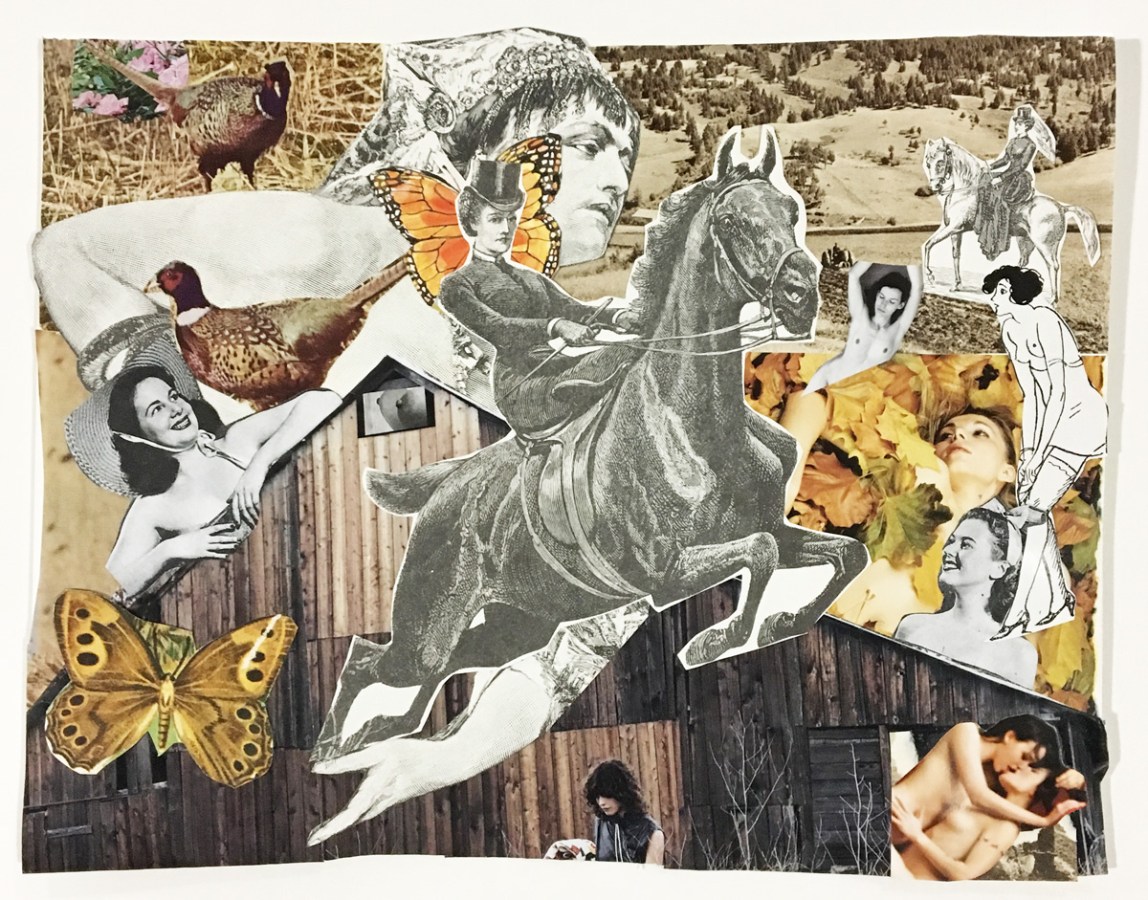
Emily-Anne // My Pony
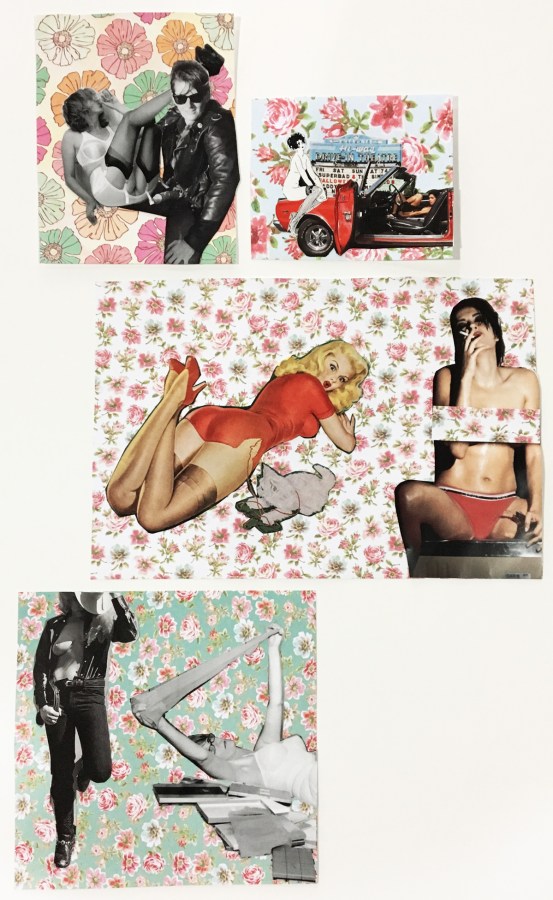
Samantha G // Butch/Femme On Florals
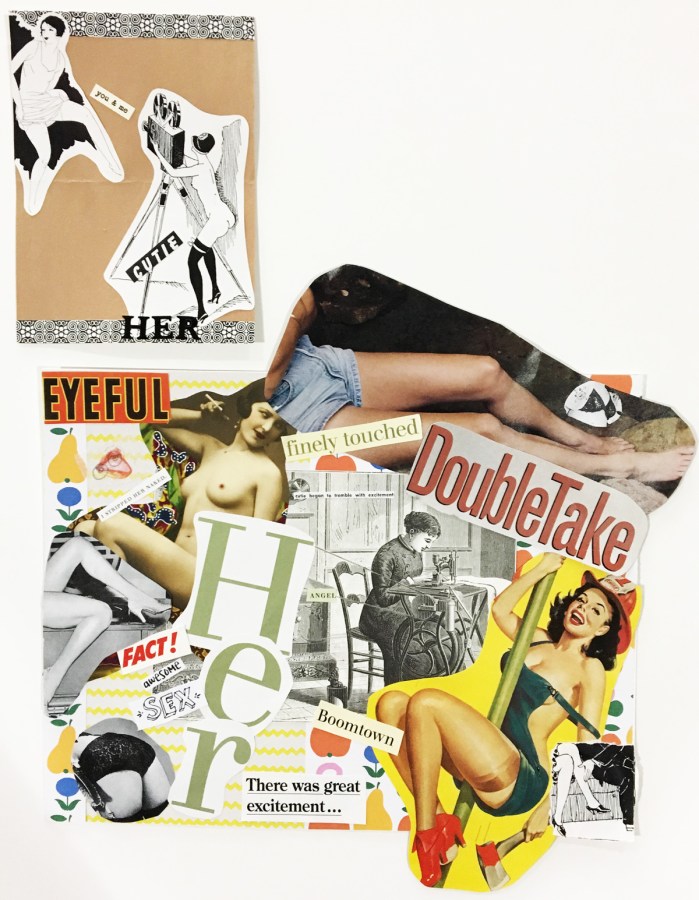
Katie W + Nicole P // Cutie
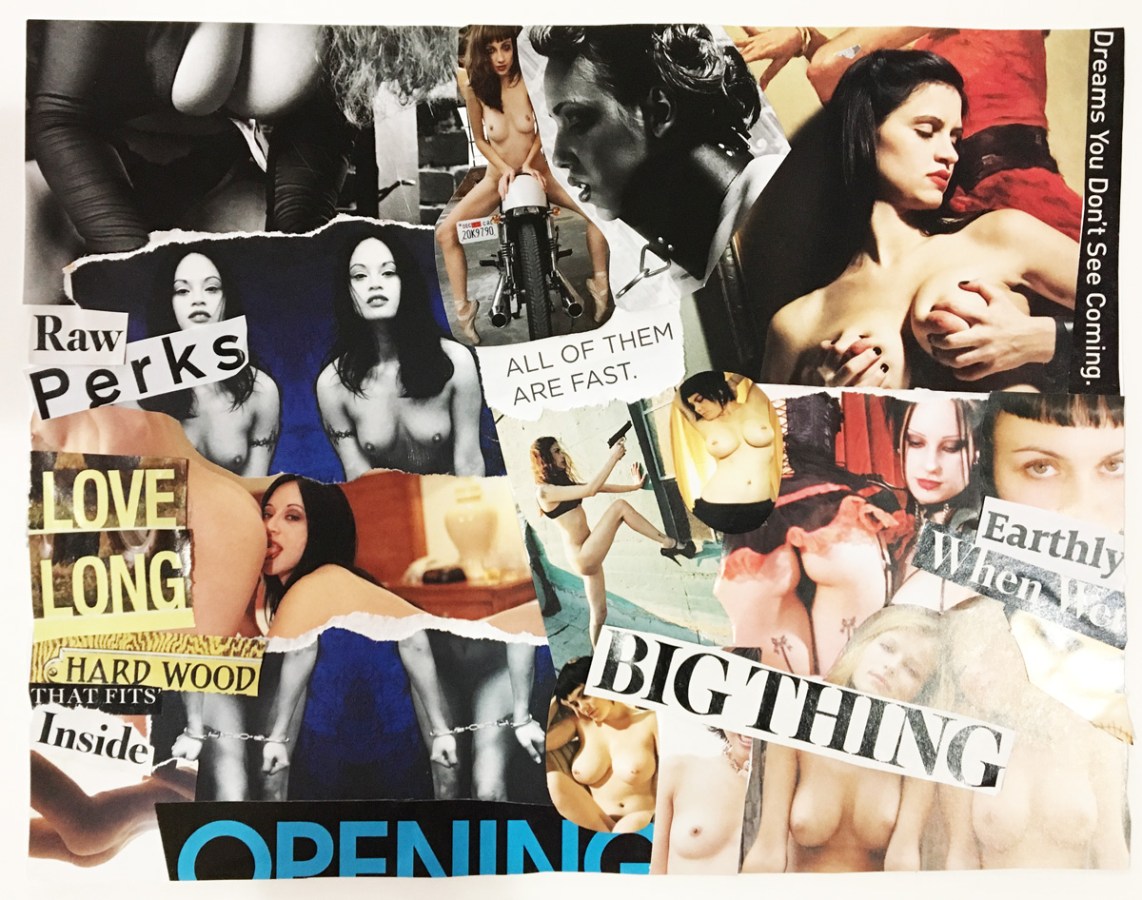
Layna S // Earthly Delights

Jenny P // What the Planet Wants
Laura Aguilar, Groundbreaking Lesbian Chicana Photographer, Dies at 58
Chicana photographer Laura Aguilar, best known for capturing the livelihoods of Latina lesbians across different social classes and her nude self-portraits in relation to shapes, textures and colors of natural landscapes, died in a nursing home in Long Beach early Wednesday. She was 58.
She had long battled diabetes complications and was struggling with kidney failure at the time of her death. She spent her last day with friends and died peacefully, friend and art curator Sybil Venegas told the LA Times.
Aguilar was born in 1959 in San Gabriel, California and learned photography from her brother John Lee Aguilar in junior high. She was born with auditory dyslexia, so photography became her passion and another form of communication.
Initial acclaim for her work came through Chicanx communities and academic circles; more recently, Aguilar’s videos and photographs resurfaced and gained new popularity with a career retrospective spanning from 1976-2007 called “Laura Aguilar: Show and Tell” at the Vincent Price Art Museum in Monterey Park, as well as her photography being featured in “Axis Mundo: Queer Networks in Chicano L.A.” Both exhibits, part of the Pacific Standard Time: LA/LA series, gave Aguilar’s work another chance to shine but this time in the mainstream art world — all while her health began to decline. “I have been celebrated before and it was nice,” Aguilar wrote in an email to Artillery Magazine in September. “But now, I feel different because I have been trying to survive to get my work shown and it’s been a struggle. So it’s hard to think about my work being celebrated because I have been so focused on staying alive.”
I, unfortunately, discovered the profundity of her art after it was too late. I was unaware of her groundbreaking body of work that centered Latinas, lesbians, fat bodies, working class people and people with learning disabilities when I hearted portraits from her “Latina Lesbians” (1986-1990) collection on Tumblr. The “Latina Lesbians” series began as a project for a mental health conference with the goal of showing “a positive image of Latina lesbians.” The photos showcased gay Latinas gazing straight at the camera with handwritten captions by the subjects describing what it means to be a lesbian, woman and/or Latina.
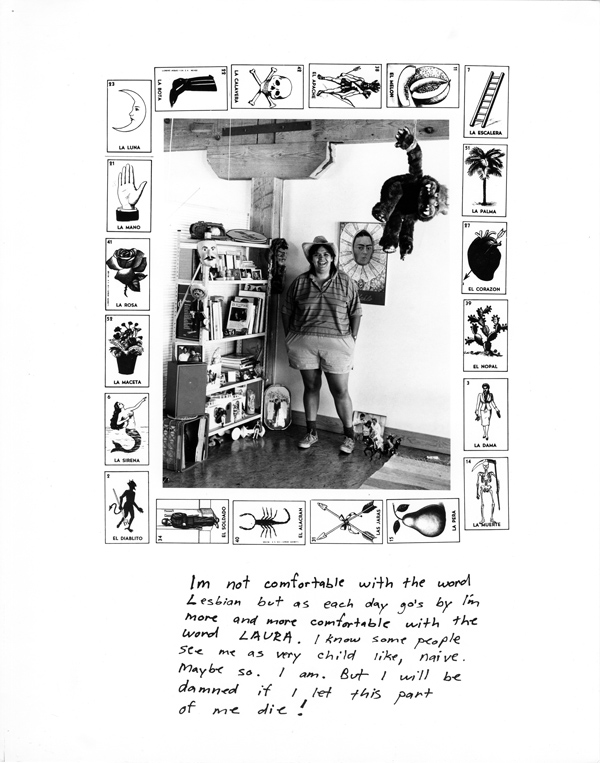
Laura from “Latina Lesbians” series, 1988 via Artillery Magazine
Included in the series, Aguilar smiles and wears a cowboy hat and stands in front of a Frida Kahlo painting in her self-portrait. Outside the lotería border surrounding the portrait, the caption reads:
“Im not comfortable with the word Lesbian but as each day go’s by I’m more and more comfortable with the word LAURA. I know some people see me as very child like, naive. Maybe so. I am. But I will be damned if I let this part of me die!”
In 1992 Aguilar debuted her second series, “Plush Pony,” in which she documented the working-class Mexican and Chicana lesbians who frequented a bar of the same name in LA’s Eastside. Aguilar described the scene as “always festive” and “very butch/femme.”
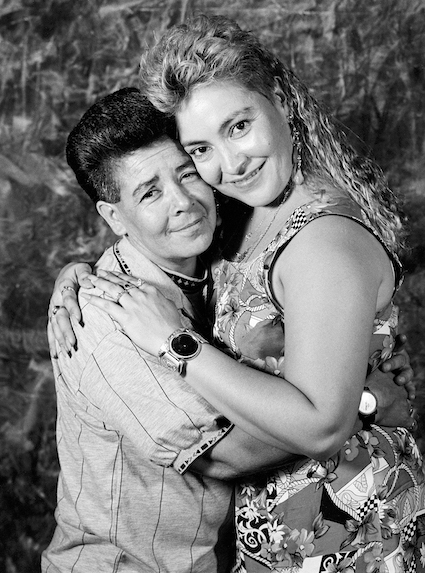
Laura Aguilar, Plush Pony #15, 1992 via ArtNews
“The kind of work she was doing was ahead of its time in terms of representations of queer communities of color,” Pilar Tompkins Rivas, director of the Vincent Price museum, told the LA Times about “Plush Pony.” “Today we have these conversations about identity and gender fluidity. And I think it was so significant that Laura was documenting this scene almost 25 years ago.”
Aguilar’s most well-known piece, “Three Eagles Flying” (1990), a triptych of black and white photographs, illustrates the struggles of Mexican-Americans caught between two worlds. In the center panel, Aguilar is topless, her head tightly covered with a Mexican flag while an American flag covers her waist, and bound with thick rope. On the other two panels are the American flag and the Mexican flag respectively. ArtNews describes it:
“Aguilar appears caught between two worlds, attempting to negotiate a space for herself as an American citizen with Mexican heritage, treated as a foreigner in her homeland. Since the ’90s, the work has helped visualize a sense of double consciousness felt by many in the Chicanx community, in particular by Chicanas, as it shows the struggles its members face as people who understand themselves as being both American and Mexican, but feel as though they are unwelcome in either country.”
In other series, Aguilar positions her large body amongst natural landscapes and challenges the viewer to behold all of her and her beauty. In these photographs, she makes the curves of her body imitate and meld into the rocks, the pond, the ground. “She is at once part of the American land, and the viewer’s eye, and apart from them: in her own words, both present and persistently unseen,” writes Michelle Hart at the New Yorker.
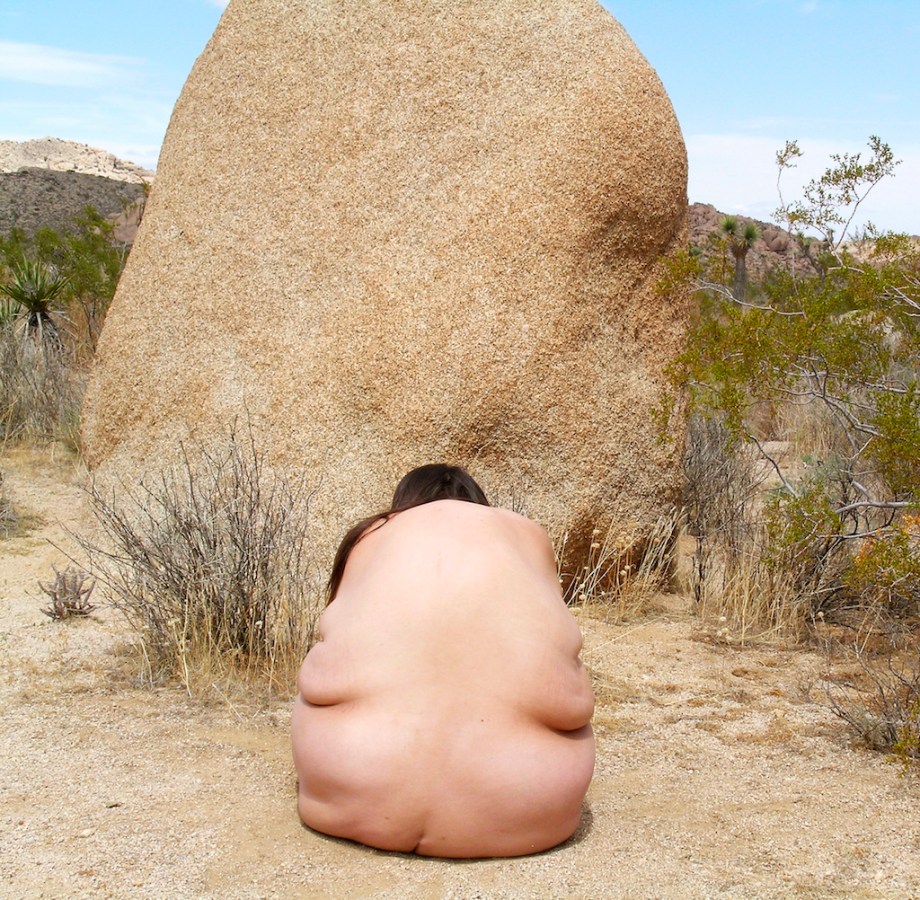
Grounded #111, 2006/2016
Aguilar’s art gives the marginalized and subcultures within subcultures — poor, fat, woman, lesbian, Latina — a place to be held and seen. Aguilar was a pioneer in sharing the faces and experiences of various Latina lesbians in the 90s, when there was very little representation. She forged a path for other round, brown queers like myself.
“Laura’s work a lot of time represents people that are marginalized and people that are oppressed or people that are invisible,” Venegas told LA Weekly. “Poor, large women of color — they tend to be invisible in society. Nobody sees them. They’re not represented in media, they are discriminated against because we have issues with color, we have issues with obesity. And so for a woman like herself to put herself front and center in the conversation, that’s pretty brave.”
Alyssa Andrews Wants To Draw You (Yes, You!) For #AllQueerBods
Alyssa Andrews has spent the past couple of months drawing 100 queer humans, and they’re showing no signs of slowing down. Since launching their #AllQueerBods portrait project, Alyssa has committed to drawing every single queer person in the world. So far they have more than 400 queer selfie submissions waiting in the email inbox they created specifically for the project (allqueerbods [at] gmail [dot] com), but they’re not intimidated. “I want to draw anyone and everyone,” they tell me when we get together to chat about the project. “I want all queer bods. There is no beauty standard, no height or weight or race requirement. I want as much diversity within this collection of drawings as I can possibly get.”
I raise my eyebrows. “Every single queer person?”
Alyssa nods seriously. “Yeah, I wanna draw every single queer person.” Then they grin. “What a scary endeavor.”
But they don’t sound scared, not really. As they describe the origin story of their project to me, they sound excited and happy, ambitious and wise. Alyssa explains that the project was born from self portraits they were drawing of their own bod. “I was drawing a lot of…semi nudes, not hiding scars and things like that,” they say. “I’m disabled. I’ve had a lot of surgery, and the world [often] tells you to cover up when something is perceived as wrong with your body.”
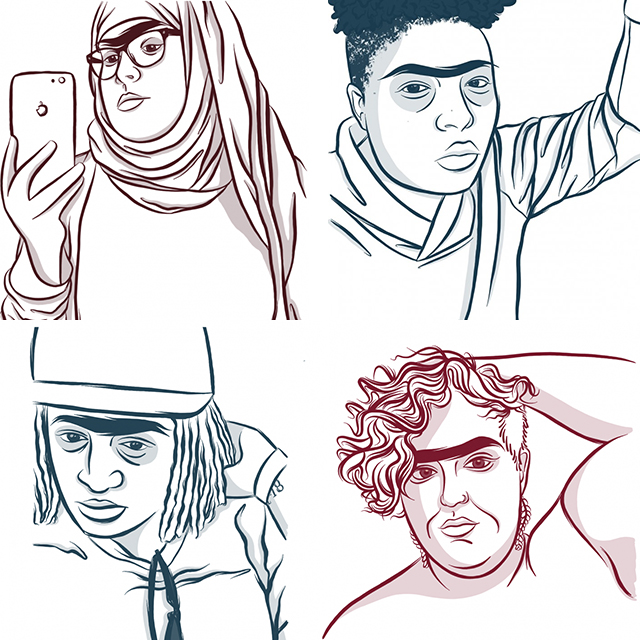
The drawings started as something they weren’t sharing with anyone or putting anywhere specific. Things shifted when they started drawing their partner. Alyssa explains that they loved the drawings and did want to start sharing them, but realized they wanted more subjects. “I didn’t want just a million drawings of my partner on the internet,” they laugh. To find more subjects they started asking friends and then eventually reached out to their followers online. Their partner helped them coin the hashtag #AllQueerBods, and suddenly the project was exploding – in a great way! The response was huge immediately, which Alyssa credits to the excitement marginalized queer folks felt in being asked if they’d like to be seen.
What makes this queer portrait project different from other ones is Alyssa’s focus on both consent from and agency for their subjects. The specific ask for submissions is “send selfies,” a medium which already lends itself to the subject dictating how they will be seen and perceived. During our conversation, they stressed over and over how important it is for them that their subjects feel in control throughout the process.
“I think that it’s a really intimate thing to be subjecting yourself to working with an artist and letting them essentially display you to the world,” they said. “Usually the artist is in charge of the perspective, they’re in charge of the way in which we are seen. I wanted it to be a connecting experience, where we kind of give and take and share that experience together.”
Keeping with the theme of control and agency for their subjects, Alyssa is very focused on consent when it comes to this project, too. They do not want to draw anyone who doesn’t explicitly want to be drawn, which is why they encourage solo selfies as submissions. Pets are okay – “I think pets can be real anxiety relievers,” Alyssa says – but any additional humans in the image need to have enthusiastically consented to be drawn. If this consent isn’t clear and obvious, Alyssa won’t do the drawing.
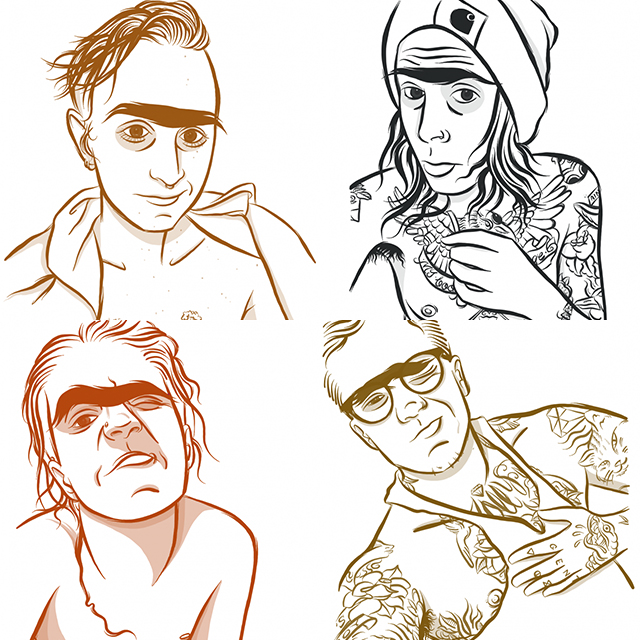
Alyssa explains that it can be easy for an artist to take on a role of a voyeur, and to manipulate things to suit their needs and desires. “I want to have a pure and real documentation of people, and consent is the bottom line most important thing to me,” they say. “I think people really misunderstand how important consent is in all different kinds of life decisions and choices. It might sound really funny to be like, I want everyone to consent to being drawn with their clothes on, but I think it’s really empowering and important to know that you said yes, and you had the option to say no .I think that is really very important.”
Though the enthusiasm for the project was large and swift, Alyssa says they do still get a lot of questions about eligibility. Many folks seem shy at first, they say, unsure if Alyssa really wants to draw them. “I’m not the queer police!” They stress again and again that their is no requirement for the project other than a submission. “If you’re submitting, you’re in! There’s no queer questionnaire, I don’t need any validation or proof, there are no rules, there is absolutely no policing. You’re fantastic and you’re amazing and you’re in! You, yes you, you’re specifically exactly what I’m looking for!”
Alyssa purposefully does not require any cash for the portraits they draw – these are not commissions, and are not treated as such. While they often include links to their Patreon and Paypal accounts to help support the project and keep it going, they do not want any queer human who is unable to pay anything at all to feel excluded.
“One of the biggest things for me, is that if I’m wanting a real connection with people and if I’m wanting a real, authentic look at the queer community, I can’t have anything that’s rooted in a person’s ability to pay or not pay,” they say. “I think that’s one of the biggest things that separates people within communities – perceived class or ability to pay for things. I find all bodies valuable, so I don’t just want ‘all bodies that can pay.’ I think that really defeats the purpose of the project and it really cuts a lot of the people from the community out.”
Though the project initially began as one of body positivity, it has grown to be a larger celebration of queerness in all its beautiful forms.
“I like doing this because there’s this tendency for marginalized people to make themselves smaller all the time, to not take up space and to not want to be seen,” Alyssa says. “I think even within the queer community we have a really big problem of assigning different bodies privilege or value, and it’s just so disheartening when you think about the sheer numbers within the community, how many vibrant amazing people there are, versus how many of those people we actually see on the day to day, it’s a real bummer for me.”
#AllQueerBods is a love letter to all queer bods, truly, and the respect and admiration Alyssa has for their community shines clearly out of each perfectly rendered image.
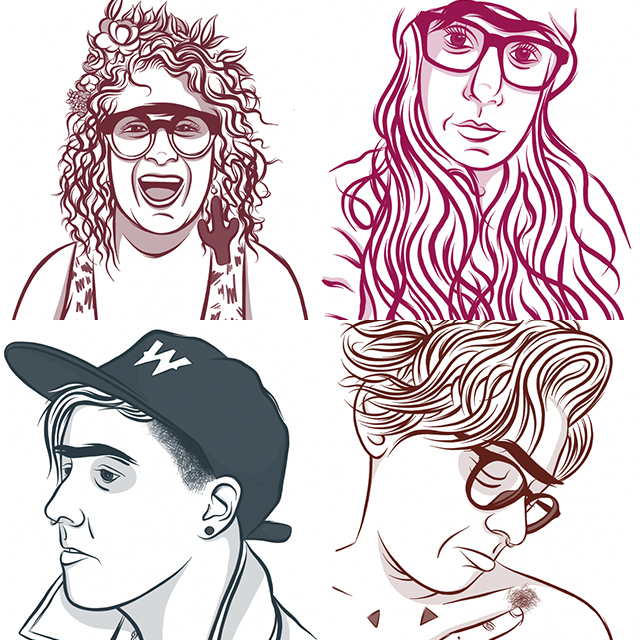
For now, the project lives on Alyssa’s website and on their Twitter and Instagram accounts, where #AllQueerBods organically began. Alyssa hopes to create a dedicated website for the project and is also considering creating a print zine featuring the portraits.
Submit a selfie to allqueerbods [at] gmail [dot] com to participate in #AllQueerBods and help Alyssa reach their goal of drawing every queer human in the whole damn world!
Please note: if you email Alyssa, they received it! Promise! They are but one human, and can only draw so fast while also holding down a day job, paying bills, hanging out with their cute friends and partner, and doting on their cute dog George. You do not need to follow up with any check-in emails. Also, while Alyssa is truly committed to drawing all queer bods, they’re particularly hoping to receive more submissions from POC, fat, trans feminine, and disabled bods! What are you waiting for? Send in those selfies!

